








So, you have stumbled across The Gamer Guide and you are wondering, “Why do I need a guide to gaming?” Well, we will not guide you on how to game, but we will keep you informed as to what the gaming industry has to offer to get you the best gaming experience! Now, the second thing you are probably wondering is, “How did The Gamer Guide start?” Well, it can be a slightly long story. However, the shortened version is that the journey of three Twitch streamers brought them together, and with their passion for gaming, their experiences of streaming, and their love for everything within the world of entertainment… The Gamer Guide was born.
But what exactly is The Gamer Guide? The Gamer Guide is a digital magazine that focuses on everything gaming and streaming. This includes the latest/upcoming releases, reviews on gaming accessories, streaming tips, and even interviews with streamers and industry professionals from across the globe. Our readership is predominantly other gamers and streamers, just like us! We understand that the love and passion for gaming extends far beyond just playing a game, and that is what we are all about!
So, who are the people behind this magazine?
Brandon who goes by the name of Sawyer is the Co Owner & Content Director of The Gamer Guide. Predominantly Sawyer is an Xbox Gamer where he mostly plays his Xbox Series X but also has a Gaming PC, a Nintendo Switch, and even a Playstation 5, with a variety of platforms this gives Sawyer the ability to review the latest games for TGG. Sawyers main gaming love is Gears of war and RPGs because who doesn’t love an adventure or some chainsaw slaying with a cheeky blind fire or wall bounce. Due to Sawyers vast knowledge and background within the industry he came together with Emily to form The Gamer Guide.
Emily, also known as CreativeTrashGaming, came together with Sawyer to form the Gamer Guide, bringing her creative knowledge. Her favourite types of games are those with a compelling story, or those that just make her inner Fantasy Nerd go ballistic. She also likes spooky stuff, not just in the gaming realm but in general, and has a podcast with her two sisters where they discuss all things horror. Emily loves to dabble in the art world often, creating digital art pieces and learning new crafts. A graphics designer in her full time job, Emily is an integral part of the team whom designs the entire layout of our magazines from top to bottom!
Jamie joined The Gamer Guide late 2022 as the Operations Manager. With gaming experience in multiple platforms, Jamie’s preferred platform is PC gaming; from aiming down the sights in an FPS to brandishing swords in the world of MMORPGs. Jamie has come on board to bring you content on your favourite creators; from streamers and YouTubers, to cosplayers and artists!








Daggerheart is a new game that has been made by Critical Role that is currently in Open Beta stage. It is a fantasy tabletop roleplaying game of brave heroics and vibrant worlds that are built together with your gaming group. The mechanics are unique in the sense that you succeed or fail with Hope or Fear, where the players will roll one Hope or Fear die (both D12 dice), and depending on the result, will impact the players adventure.
Daggerheart is also unique in the sense that it has a card system, making it easier to get started as new players. You choose your characters origins, class, and other such things via these cards, making it far more straight forward to fill out the character sheets and it be a much less stressful experience. The game is recommended for those over the age of 18 to play this game, and are asking the public to play the open beta and do everything they can to break it where possible in order to spot flaws in the mechanics. They have already implemented a digital version of the game via Demiplane for those who do not want to print off the cards, making it more accessible to a wider audience. If you are interested in trying the game for yourself, click on the link below!
www.daggerheart.com



 Reviewed
Reviewed
by:
Brandon SawyerHave you ever sat down to watch your favourite creator live stream and notice some amazing lighting And RGB in their backdrops? Well the odds are they are using Twinkly and their awesome lights. Twinkly kindly gifted us three of their ranges to review for you all and those are the Squares, Line and Flex ranges, but first let us tell you who Twinkly are.
Twinkly is a brand created by Italian tech company Ledworks, a market leader in smart lighting. Just years after its 2016 launch, Twinkly has already become a global brand, revolutionising the world of decorative lighting with a range of technologically advanced, patented, and award-winning products. Ledworks was founded in 2016 by a group of pioneering entrepreneurs with a background in hardware design, software development, and the marketing of digital products.
They started out with the goal of transforming classic holiday decorations and lighting products into smart devices worthy of our increasingly digital, connected society. Ledworks began implementing Twinkly’s innovative technology to create stunning large-scale lighting installations. After making a name for themselves in the seasonal lighting industry, they moved on to their next challenge which was home lighting.
New technologies continue to be developed and rapidly adopted by an increasingly connected world. At Twinkly, they also continue to grow and innovate with new products and services while aiming to become one of the key players in the Internet of Things industry.
As mentioned Twinkly hooked us up with three great RGBN lighting products that being the Squares, Line and Flex which we will review each of them for you all.
Let’s start off with the biggest of the three and that is the Squares. Certainly! Let’s delve into the enchanting world of Twinkly Squares.
Twinkly Squares are a captivating addition to the realm of decorative lighting. These innovative and award-winning products, crafted by the Italian tech company Ledworks, blend technology and aesthetics seamlessly. Here are some highlights: Design: Twinkly Squares feature a modern and geometric design, perfect for adding a touch of elegance to any space. Their sleek appearance compliments various interior styles.
Smart Lighting: These squares are not your ordinary decorative lights. They are equipped with advanced technology that allows you to control them remotely. Connect them to your smartphone via the Twinkly app, and you’ll unlock a world of possibilities. Customization: The magic lies in their customizable LED lights. With the Twinkly app, you can create your own mesmerising light patterns, animations, and colour combinations. Whether it’s a cosy warm glow or a vibrant display, Twinkly Squares adapt to your mood and occasion.
Sync and Music Mode: Want your lights to dance to the rhythm of your favourite tunes? Twinkly Squares sync with music, making them ideal for parties, celebrations, or simply elevating your everyday ambiance. Easy Installation: Installing Twinkly Squares is a breeze. Arrange them on your wall, ceiling, or any flat surface, and let the magic unfold. The app guides you through the





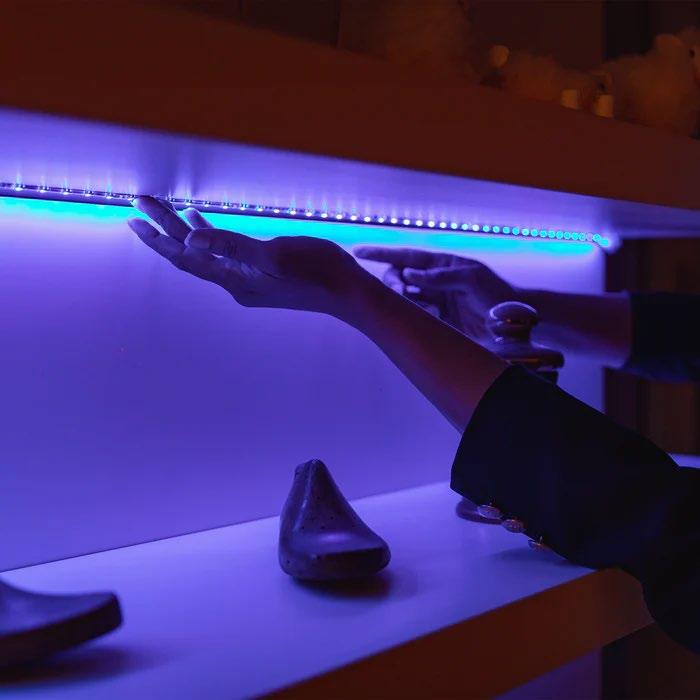





setup process, ensuring a hassle-free experience.
Versatility: Whether you’re decorating your living room, bedroom, or outdoor patio, Twinkly Squares add a touch of wonder. Use them as a focal point, create an accent wall, or even spell out messages—the choice is yours.
How many Squares do you get?
In a Twinkly Squares set, the number of squares can vary based on the specific product variant. However, a typical set usually contains multiple squares, allowing you to arrange them creatively and design your own dazzling light display. Whether you choose a small set for subtle accents or a larger one for a more impactful arrangement, the magic of Twinkly Squares lies in their versatility and customizable features.
Can you use the Squares out doors?
Twinkly Squares are designed to brighten up both indoor and outdoor spaces. Their versatility allows you to create captivating displays in various settings:
Indoor Use:
• Transform your living room, bedroom, or any interior space into a magical wonderland. Arrange the squares on walls, ceilings, or even as a decorative accent on furniture.
• Customise the light patterns to match your mood or the occasion. Whether it’s a cosy movie night or a festive celebration, Twinkly Squares adapt effortlessly.
Outdoor Use:
• Twinkly Squares are equally at home outdoors. Here’s how you can use them:
• Patio or Balcony: Hang them along railings, pergolas, or outdoor seating areas. Create an inviting ambiance for evening gatherings.
• Garden or Backyard: Illuminate pathways, trees, or shrubs with these smart squares. Their weather-resistant design ensures they withstand the elements.
• Special Events: Weddings, birthdays, or summer parties—Twinkly Squares add a touch of enchantment to any outdoor celebration
• Special Events: Weddings, birthdays, or summer parties—Twinkly Squares add a touch of enchantment to any outdoor celebration
• Holiday Decor: During festive seasons, adorn your home’s exterior with twinkling lights. Twinkly Squares can be programmed for specific colours and animations.
• Twinkly Squares are built to withstand rain, wind, and varying temperatures. However, ensure that the power supply and control unit are protected from direct exposure to water.
• Remember to follow the manufacturer’s guidelines for safe installation and usage. Whether indoors or outdoors, let your creativity shine with Twinkly Squares!
• Connecting your smartphone to Twinkly Squares
• It’s a straightforward process. You have a few options:
• Home Wi-Fi Network Connection via Bluetooth:
• Open the Twinkly App on your smartphone.
• Ensure your phone is close to the Twinkly Squares.
• Hold down the Bluetooth button on the back of the Squares (near the USB port) until the controller status indicator light turns blue.
• Select the option to connect to your home/ office Wi-Fi network.
• Again, use the Twinkly App and search for your new device.
• Select Twinkly Squares.
• Make sure your phone is near the Squares and hold down the Bluetooth button.
• Choose the Direct Wi-Fi option.
• Connect your smartphone to the Twinkly network using the password Twinkly2019.
• Connection via Apple HomeKit (for iOS users only):
• During setup, scan the QR code on the back of the master panel package or in the quick guide.
• During setup, scan the QR code on the back of the master panel package or in the quick guide.
• In the Twinkly App, search for your new device.
• Select the Quick connect with Apple HomeKit option.
• Remember to choose the method that best suits your preferences and enjoy the magical world of Twinkly Squares!
Twinkly App Customisation
• Let’s explore the enchanting world of Twinkly Squares customization using the Twinkly App.
FX Wizard Patterns:
• The FX Wizard is your magical toolkit for creating mesmerising light effects. It offers a range of patterns, each with unique features:
• Colour: Choose from over 16 million colours! Open the famous super palette and create custom shades in just a few clicks. Adjust brightness and blend colours to your heart’s content.
• Stripes: Make your lights follow rhythmic stripes—horizontal, vertical, or diagonal. Customise the width, speed, shift, and zoom. You can even add up to 5 stripes for intricate designs.
• Text (iOS only): Express yourself with words! Customise messages, greetings, or any text you like. Adjust colours, speed, and direction. You can even apply text to your own personalised pattern.
• Gradient: Blend colours seamlessly across your squares.
• Plasma: Create dynamic, flowing patterns.
• Sun: Radiate warmth with sun-like effects.
• Sparkles (iOS only): Add twinkling magic to your display.
Overlay Patterns:
Here’s the exciting part: You can overlay multiple patterns to enhance your final effect.
Click the “+” icon on the right side of the screen to explore endless possibilities.




Customization Steps:
• Open the Twinkly App and select the FX Wizard.
• Choose your desired pattern.
Use the suite of features:
• Adjust colours, brightness, speed, shift, angle, and zoom.
• Combine patterns for unique effects.
• For text, write your message and customise its appearance.
• Remember that each pattern may have slight variations in features.
Palette Play:
• Make your lights super colourful! Use the COLOUR tool to choose from the 16 million shades. The “+” key opens the palette for endless combinations.
Let Your Imagination Shine:
Whether it’s a cosy corner, a festive celebration, or an artistic statement, Twinkly Squares await your creative touch. Remember, the Twinkly App is your gateway to vibrant, customizable LED lighting. Explore, create, and let the magic unfold!
How much are the Squares?

The Starter Kit:
Includes 1 Master Tile, 5 Extension Panels, USB-C cable and power adaptor, mounting kit, and connecting cables.
Price: £279.99.
These modular squares allow you to create endless layouts and shapes, and each master tile can connect to up to 15 extension panels. Whether you’re decorating your home, office, or gaming setup, Twinkly Squares offer all-year-round smart lighting with full control via the Twinkly app.
To Summarise
In summary, Twinkly Squares are more than just lights; they’re an artistic canvas waiting for your imagination to paint it with brilliance. The Squares showed great illuminations, looked amazing on camera and proved little to zero faults, the app was a breeze and connectivity was wonderful, the price was spot on compared to competitors and overall these were our go to over some other competitors on the market. imagery then this is for you!
If we were to rate a product for RGB it’s a solid 10 for apps and craftsmanship you just don’t get better but for us overall it’s a great 9/10 product. If you are a creator who wants to add a bang to your stream that being great customisable Square RGB.

Second up we have the Twinkly Flex LED Tubes. Twinkly Flex LED Tubes are not your ordinary light strips. Unlike the ones meant to be hidden behind furniture or cabinets, these tubes are designed to stand out and become the centre of attention in any room or office.
They come in 3 metres and are priced at £79.99. While they may not be the most affordable option, their retro vibes and stunning effects make them worth considering if you’re looking for a stylish room ambiance or a conversation starter.
The LED tube is thicker than traditional light strips, but installation is simple. Mount it to the wall using 3M adhesive strips and plastic clips provided in the package.
The package includes curved and straight mounting clips to help you create neat shapes. However, having more corner options would be beneficial for intricate designs. You can choose between using the adhesive pads or small screws for mounting. Keep in mind that the 3M adhesive may remove paint from the wall if you decide to change the shape later.
Customization and Features:
• The real magic lies in the flexibility of these LED tubes. You can bend and shape them to your imagination.

• Map the design: Create beautiful colour gradients and effects.
• Sync with music: Let the lights dance to your favourite tunes.
• Craft your own neon sign or artistic display.
• Brightness and Visual Appeal:
• Twinkly Flex lights are bright and look fantastic once installed.
• While they’re not the longest, their customizability and mesmerising effects compensate for their length.
• The encased LEDs provide a pleasant glow, avoiding overwhelming light intensity.
Overall, I’m happy with the Twinkly Flex lights. They’re easy to install, customizable, and visually striking. Would I like them to be longer, have more mounting clips, and be more affordable? Absolutely! But their unique charm makes them a delightful addition to any space.
With the price in mind they are on the premium side of Flex tubes out there but for me I think they look much better than the competitor once again and we can safely score this an 8/10 for product and value. So, if you’re ready to add a touch of retro elegance and vibrant illumination, consider the Twinkly Flex LED Tubes.


Finally we have the Twinkly Line.
The Twinkly Line is a smart LED light strip that aims to dazzle with its special effects. While it may not match the sheer potency of the Twinkly Flex, it still emits enough light to complement key areas in your home. Unlike ordinary LED light strips, the magic of the Twinkly Line lies not only in its brightness and colour variety but also in the customizability it offers for a unique light show.
Installation:
• Installing the Twinkly Line is relatively straightforward. It comes with an adhesive underside, making attachment to surfaces simple.
• However, keep in mind that the 5-foot length of the Twinkly Line can be a bit challenging. If you need more coverage, you can purchase additional 5-foot extensions (sold separately) to extend its reach.
• The initial cost for the Twinkly Line is around £39.99.
Software and Customization:
• The Twinkly Line functions similarly to other smart LED light strips. You can control it via the Twinkly App, which offers plenty of preset light effects.

• Colours are punchy and moderately bright, making the Twinkly Line a delightful addition to any room.
• While it may not be as potent as the Twinkly Flex, its special effects add the perfect ambiance to your space.
To Summarise
The Twinkly Line brings customizable magic to your home, allowing you to create captivating light displays. Whether it’s accent lighting or a unique light show, the Twinkly Line is ready to shine!
Not only that, this is priced very well against the competitors and brings true colour and light enhanced with the RGB. If I was a creator and I was in the market for these and on a budget I’d pick Twinkly over any other.
So to put a score on the line I’d give this one an 8/10 making this a recommended go to option for creators.
Overall for me Sawyer at The Gamer Guide this creator bundle gets an 8.5/10 scoring with a recommended TGG Stamp of approval as the RGB creator choice for us.
If you too want to pick some of these products up then you can do so below and why not check out Twinklys socials too.


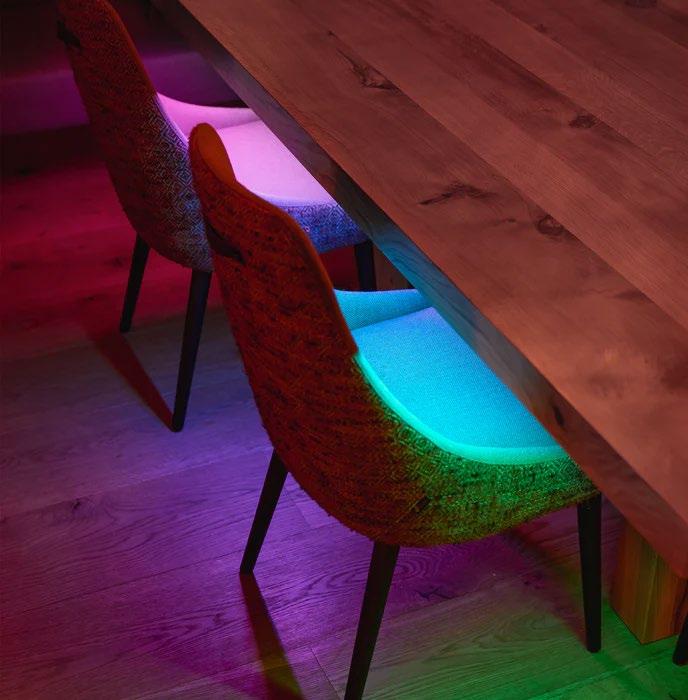

Reviewed by: Brandon Sawyer


Our great friends over at Ducky Keyboards hooked us up with their Tinker keyboard and some Ultras Violet Keycaps to review for you all. But first let us introduce you to Ducky.
Ducky is a renowned manufacturer of high-quality mechanical keyboards and peripherals. The company is known for its performance-driven products, which include not only keyboards but also mice and gaming chairs. Ducky’s keyboards are particularly popular among gamers and typists for their build quality, performance, and customization options. They offer a range of keyboards in different sizes and styles, including full-size, tenkeyless (TKL), and compact (60%) models.
One of Ducky’s unique features is their collaboration with various brands to create unique and practical products that are not only functional but also valuable as collectibles. In addition to their standard product line, Ducky also releases special edition keyboards, such as the “Year of the Rat” edition and the “Fallout® Vault-Tec™” edition. These limited-edition models often feature unique designs and are highly sought after by collectors. Ducky is a well-respected brand in the mechanical keyboard community, known for its commitment to quality, performance, and innovation.
The Ducky ProjectD Tinker 75 Mechanical Keyboard is a part of Ducky’s ProjectD lineup, which has made a strong impression in the keyboard market. It’s a 75% form-factor gasket mount keyboard. This size has been gaining popularity as it provides most of the user experience of a larger TKL (tenkeyless) keyboard in a smaller form factor, which should help with typing ergonomics. The keyboard comes with a two-tone chassis in black and white. It’s a more affordable option compared to the Outlaw series, thanks to the use of a two-piece plastic chassis.
The Tinker 75 comes as a barebones kit that is ready for your switches and keycaps or as a pre-built keyboard that uses Cherry’s new MX2A switches. The keyboard is wired only but goes for an open-source controller offering easy firmware support with QMK/VIA for those who want something ready to go, in addition to the ability for people to program the keyboard entirely to their liking. The keyboard in general is very affordable, greatly customizable and greatly uses the new
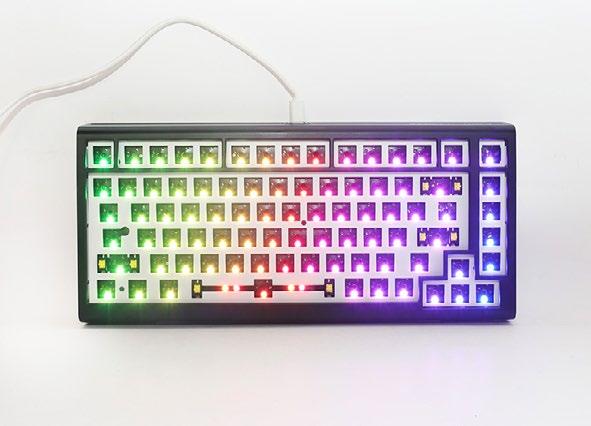









Cherry MX2A switches. However the plastic case slightly feels a little cheap but for the price you pay this is very budget friendly and expected.
Speaking of Price, these keyboards retail at around £100 depending on retailers and sales that are currently live that is.
Cherry MX2A switches are a new addition to the Cherry MX lineup, offering a refined and enhanced typing experience. The MX2A switches introduce high-precision ring lubrication, which ensures every keystroke remains smooth.
The lubricant used is an oil-based, highperformance marvel crafted for low-friction and long-term applications.
The MX2A switches are designed for longevity, with a guaranteed lifespan “exceeding 100 million clicks for select switch types”.
The MX2A offers a tactile experience that’s both profound and peerless. The performance of the lubricant mirrors the properties of the communitypreferred Krytox GPL 205 Grade 0. The MX2A switches feature a reimagined spring design. The transition from a cylindrical to barrel geometry in the spring design ensures each spring maintains its form, even under the pressure of rapid keystrokes.
The Cherry MX2A switches are designed to deliver a premium, smooth, and satisfying typing experience. They are a great choice for those who want a quieter sound and a more subdued feel compared to the original Cherry switches.
The Ducky ProjectD Tinker 75 Mechanical Keyboard weighs 802 grams or approximately 1.77 pounds. Please note that the weight can vary slightly based on the switches and keycaps you choose.
The cable for the Ducky ProjectD Tinker 75 Mechanical Keyboard is 6 feet or approximately 1.8 meters long. It’s a braided USB-C cable, providing both power and data connectivity. Please note that the actual length can vary slightly based on the product batch and manufacturer tolerances.
Let’s delve into the Ducky Ultra Violet Keycaps, a delightful set that adds a touch of flair to your mechanical keyboard.
The Ultra Violet keycap set has a thick and rustic feel, reminiscent of old-fashioned mechanical keyboards. The fonts on the keycaps are precise and clear. However, be aware that the package doesn’t include a keycap puller.
These keycaps are made of high-quality PBT material, which ensures durability and resistance to wear. They’re non-transparent, making them ideal for any keyboard, especially if you’re not using RGB lighting.
The vibrant colours purple, pink, and blue create an eye-catching aesthetic. They’re perfect for refreshing an older keyboard or adding some personality to your setup.
In summary, if you’re looking to upgrade your keyboard with a splash of colour and a solid build, the Ducky Ultra Violet Keycaps are worth considering!
Overall, the Ducky ProjectD Tinker 75 Mechanical Keyboard seems to be a good choice for those looking for a compact, customizable, and affordable mechanical keyboard. However the slight plastic feel to the keyboard can be somewhat off putting while gaming if you are used to something a little more premium but this is much recommended for gaming and a perfect keyboard for you to start off with which is not only great but very budget friendly.
Now we are down to rating what do we give the Ducky ProjectD Tinker? Well for us there was zero fault minus the plastic feel but for the price it’s expected, The keyboard ran very well during our testing and the keycaps look insanely good, so with all that in mind we are hitting it high with Ducky Keyboards with a solid 9/10 stamp of approval here from me Sawyer at The Gamer Guide.
If you would like to check out Ducky and all of their wonderful products then you can do below.
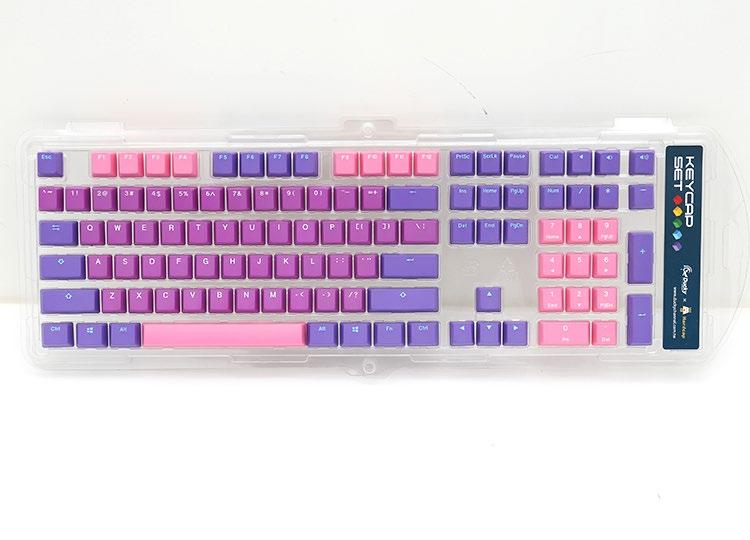

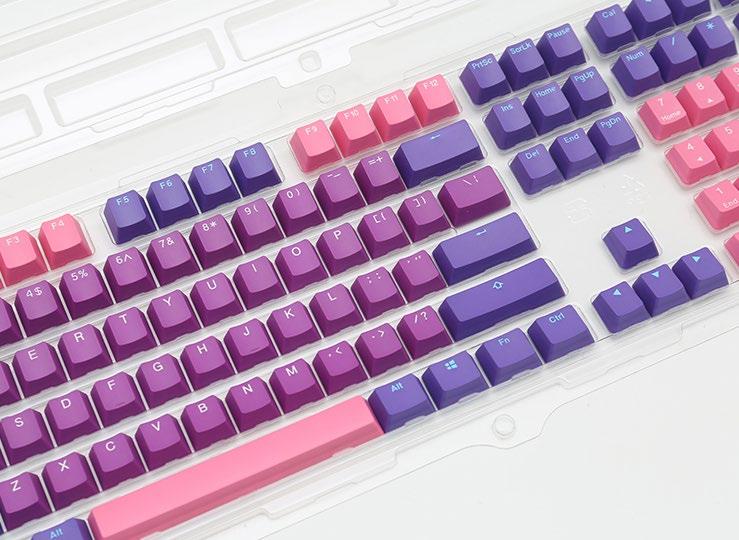

Website: www.duckychannel.com
Facebook: @duckychannel
X: @duckychannel
Instagram: @duckychannel
YouTube: @DuckyKeyboardTW



Reviewed by: Brandon Sawyer
Our great friends over at ASUS sent us their ROG (Republic of Gamers) Ally which is a handheld gaming console that has been highly compared to the Steam Deck. The Ally provides handheld gaming at a premium scale which allows you to play some of your favourite PC games on the go.
Before we get into our full review of the ROG Ally let us first tell you about ASUS as they have some wonderful products you really should check out.
ASUSTeK Computer Inc., usually referred to as Asus, is a multinational computer hardware and consumer electronics company based in Taiwan. It was founded in Taipei in 1989 by T.H. Tung, Ted Hsu, Wayne Hsieh, and M.T. Liao.
Asus is known for a wide range of products that include desktop computers, laptops, netbooks, mobile phones, networking equipment, monitors, Wi-Fi routers, projectors, motherboards, graphics cards, optical storage, multimedia products, peripherals, wearables, servers, workstations, and tablet PCs. The company is also an original equipment manufacturer (OEM).
As of 2023, Asus was the world’s 5th-largest PC vendor by unit sales. The company has consistently appeared in BusinessWeek’s “InfoTech 100” and “Asia’s Top 10 IT Companies” rankings, and it ranked first in the IT Hardware category of the 2008 Taiwan Top 10 Global Brands survey with a total brand value of US$ 1.3 billion.
The ASUS ROG ALLY
The ASUS ROG Ally is smaller and lighter than the Steam Deck, making it more portable. It features a bright, vivid 7-inch 1920 x 1080 screen with a refresh rate of 120Hz. The device runs on Windows 11, providing compatibility with almost every game without the need for emulation.
The ASUS ROG Ally is powered by the AMD Ryzen Z1 Extreme processor. It offers strong
performance, especially when plugged in. However, many games require lower graphics settings for smooth performance. The device can play almost any game at the right settings.
The device uses Asus’ Armoury Crate SE software, which has potential but also has more hiccups compared to SteamOS.
One of the main drawbacks of the ASUS ROG Ally is its short battery life, especially while gaming.
The battery life of the ASUS ROG Ally varies depending on the settings and the type of games you play. Here’s a general idea:
• For less demanding games, you can expect about 3 to 4 hours of battery life.
• For more demanding games, the battery life can range between 1 to 2 hours.
• In silent mode, the battery life can last almost 3 hours.
• In performance mode, the battery life is around 1.5 hours.
• In turbo mode, the battery life is about 1 hour.
Please note that these are approximate values and actual battery life may vary based on factors like screen brightness, resolution, and specific game requirements. There are also tips and tools available that can help you extend the battery life.
The ASUS ROG Ally and the Steam Deck have different performance capabilities due to their distinct hardware specifications.
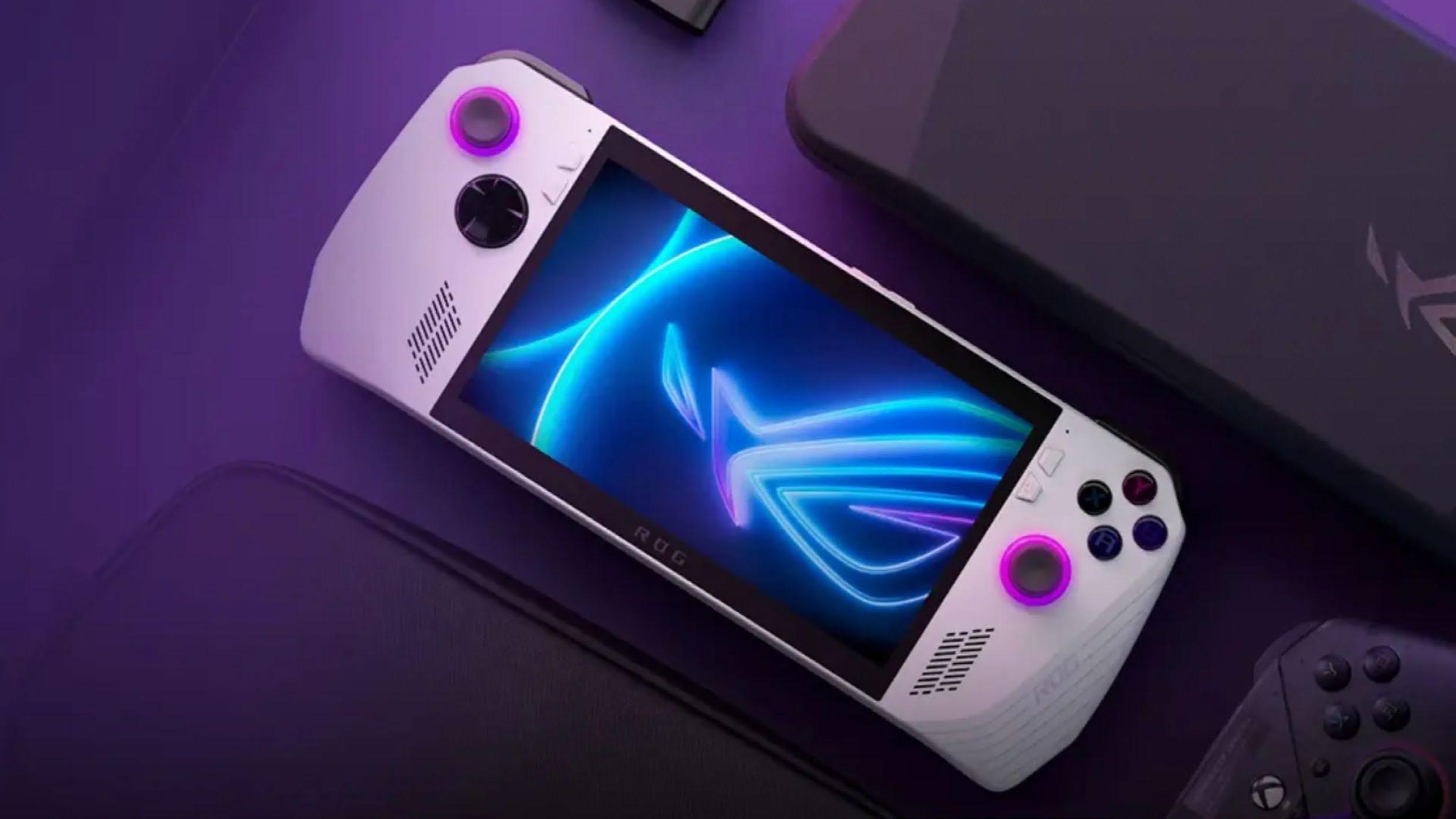



ASUS ROG Ally: The ASUS ROG Ally is powered by AMD’s new Z1 Extreme mobile processor, which is an 8-core Zen 4 processor with RDNA 3-powered graphics. It can be cranked up to a maximum of 30W when plugged in. The ROG Ally has shown to be over 50% faster than the Steam Deck at 15W (performance mode) and double the performance at 35W. In tests, the ROG Ally scored 38fps in Total War: Three Kingdoms, 57fps in Borderlands 3, and 64fps in Hitman 3 at 720p on the 15W power setting.
Steam Deck: The Steam Deck is powered by a custom 4-core Zen 2 APU, which caps out at 15W whether it’s plugged in or on battery. In the same tests, the Steam Deck scored 25fps in Total War: Three Kingdoms, 42fps in Borderlands 3, and 44fps in Hitman 3 at 720p.
In conclusion, the ASUS ROG Ally has a performance advantage over the Steam Deck, especially for modern AAA games. However, it’s important to note that the performance of both devices can vary depending on the game and its settings.
Yes, you can install Steam on the ASUS ROG Ally. Here’s how:
1. Visit the official Steam website.
2. Click the blue button that says “Install Steam” to download the SteamSetup.exe file.
3. Once the download completes, run the SteamSetup.exe file.
4. You might receive a prompt from Windows asking if you want to run the file. Click “Yes”.
5. A new window will open, where you need to click “Next,” select your preferred language, and finally click “Install”.
6. If you want to run Steam right away after installation, make sure the “Run Steam” checkbox is ticked. Otherwise, uncheck it and click “Finish”.
7. Open the Start Menu. Steam will likely require an update. Let it complete, which typically takes up to three minutes depending on your internet speed.
8. After the update instals, the login page for Steam will appear. Enter your login credentials if you already have an account. If not, click “Create a free account”.
9. Upon successful login, you’ll land on your Steam Library page. To install any game, click its title under “All Games” and hit the blue “Install” button.
Once your game is installed, it’ll appear as a shortcut in the Start Menu or on your desktop. You can launch it from there, or open Steam to launch it from within the UI. Enjoy your gaming!
Can you connect controllers?
Yes, you can connect a controller to the ASUS ROG Ally. Here’s how you can do it for different types of controllers:
Xbox Controller:
1. Open the Windows 11 Desktop Mode on your Ally.
2. Press the Start Menu button.
3. Bring up the keyboard and type Bluetooth into the search bar.
4. Tap ‘Bluetooth and devices’.
5. Turn on Bluetooth mode, then click ‘Add a device’.
6. Press the Xbox button and Connect button until the light starts flashing. It’s now in pairing mode. Go to the ‘Add a Device’ window and see if it can scan the controller.
8. Tap your controller from the list. Your Ally should connect with your controller!
PS5 Controller:
1. Open the Windows 11 Desktop mode and head to the Start Menu.
2. Type Bluetooth in the search bar, then go to ‘Bluetooth & devices’.
3. Enable Bluetooth and tap on ‘Add device’.
4. Tap on ‘Bluetooth’ from the ‘Add a device’ Window.
5. Press the PlayStation button and the Share button on your DualSense controller. This puts it in pairing mode.
6. Check the Add a device window on the Ally screen to see if it scans the controller.
7. Tap on your controller from Add a Device list and your Ally should connect.
1. Connect your USB-C to USB-A cable to your Nintendo Switch Pro Controller. Connect the other end of an available USB-A slot in your ASUS ROG Ally dock.
2. From there your ASUS ROG Ally will recognize the controller and you will be able to use its inputs.
3. Remember, if you want to change the button configuration, simply go to the game settings to select the controller as the input device to play your favourite games.
The ASUS ROG Ally is priced at £599.00 in the UK. In the US, it’s available for $699. Please note that prices may vary based on the retailer and location. It’s always a good idea to check the current price on the retailer’s website or in-store.
The ASUS ROG Ally is a powerful alternative to the Steam Deck, offering a superior design and more user-friendly software. However, its high price and poor battery life make it a difficult choice for some gamers. Despite some issues, it’s a fun handheld PC-gaming experience.
I for one having both devices believe the ASUS ROG Ally feels better than the steam deck runs better on games and overall just looks more aesthetically pleasing for me the only drawback is the battery life but its expected and of course the price tag but you get what you pay for and this is a glorified gaming pc on the go which for that price is really good.
Down to scoring you can’t really give this anything less than a 9/10 the team behind it have produced something great and you can always bring a power bank for extended gaming or plug and play into an outlet it really isn’t much of an issue. On that note from me Sawyer here at The Gamer’s Guide It was an absolute leisure to review this product.
We can’t thank the team over at ASUS enough for sending this over for us to review. If you too do want to get your hands on the ASUS ROG Ally or just something that ASUS creates you can do so below.

Website: www.asus.com
Facebook: @asus.uk
X: @asusuk
Instagram: @asusuk
YouTube: @asusuk
TikTok: @asus_uk


Back when the Xbox Series X launched there had been meme after meme of it looking like a fridge so what did Xbox do? Well they brought out a mini fridge that looked just like a Series X and to this day people even joked the Series S looked like a toaster well what do you think Xbox did? That’s right they made a Toaster that looks just like the Series S, bizarre right? Well Xbox originally gifted us their Mini fridge now this time they have sent over their Series S toaster too.
We spent a fun couple of weeks with this toaster in which we reviewed for you all why you should or shouldn’t have this within your kitchen. The Xbox Series S Toaster is a unique product that combines the aesthetics of the Xbox Series S console with the functionality of a toaster.
The toaster is designed to look like an Xbox Series S console, complete with a black and white colour scheme. It has a single large slot, allowing you to toast two slices of bread at once, or perhaps one extralarge slice of some fancy artisanal bread. It can also toast bagels or crumpets. The toaster features an LED countdown display, a bagel button, a defrost button, a cancel button, and a dial that allows you to choose between six toasting levels.
The toaster performed admirably in tests, toasting bread slices evenly and quickly. However I have heard of some breaking within a couple of weeks so durability might not be at the forefront here but for us mine luckily did not break.
One unique feature of the Xbox Series S Toaster is that it burns the Xbox logo into every slice of toast you make. This is done by simply not toasting the immediate area around the “X”.
While the Xbox Series S Toaster is a fun and unique product for Xbox fans, its durability issues I have heard about makes it hard to recommend for daily use. However with this retailing at around £29.99 it would be a great collectible for any Xbox fan, So if you’re looking for a novelty item and are a fan of Xbox, this could be an interesting addition to your kitchen. However, if you’re looking for a reliable toaster for daily use, you might want to consider other options.
With all that in mind the toaster itself for me Sawyer at The Gamer Guide was great and reasonably priced but for everyday use maybe stick to something a bit more premium and less novelty. For us it’s a solid 7/10 just for the slick design and price but for durability maybe we were lucky. Maybe those who mentioned breaking just got a bad batch. Why don’t you decide for yourself and pick one up today!
Where to buy:
UK: Xbox Series S Toaster - Currys
US: Xbox Series S Toaster - Walmart





Reviewed by: Brandon
SawyerOur great friends over at Zotac have once again hooked us up with another one of their high end GPUs this time it’s the all new 4080 Super Amp Extreme Airo, we will go into detail why you need this overkill GPU in our review below, but first let us give you an insight to who Zotac are.
ZOTAC Technology Limited is a computer hardware manufacturer founded and based in Hong Kong. The company was established in 2006. They specialise in producing video cards (GPUs), mini PCs, solid-state drives, motherboards, gaming computers, and other computer accessories. All its products are manufactured in the PC Partner factories in Dongguan City, China.
ZOTAC has four offices overseas in Japan, South Korea, the United States, and Germany. The company has made significant contributions to the field of computer hardware, including being the first hardware company to ship video cards with a factory overclock in 2008.
ZOTAC’s product line includes the GeForce series, which includes their slightly modified stock graphic cards and their own Amp! and Amp! Extreme products. Their Amp! and Amp! Extreme series are modified versions of NVIDIA’s stock graphics cards that include a modified cooling system.
They also produce the ZBox Mini PC Series, which includes USB 3.0, Wi-Fi, SD card slot, headphone and microphone ports, DVI, HDMI, DisplayPort, and a VGA port. The ZBox Mini PC Series is meant to be completely portable with ports to external displays. ZOTAC establishes itself as a brand that produces innovative products and provides users with quality options for computing needs. They push the limit for gamers and creators, manufacturing award-winning NVIDIA GeForce RTX Gaming Graphics Cards and powerful Mini PC solutions.
The Zotac GeForce RTX 4080 Super AMP Extreme Airo is a top custom-design graphics card based on the RTX 4080 Super.
The RTX 4080 Super is designed for maxed out gameplay at 4K Ultra HD, with ray tracing. It’s considered a 4K powerhouse, second only to the GeForce RTX 4090. Most games that struggled to break 60Hz at 4K can now do so, even with ray tracing effects enabled. The RTX 4080 Super offers more shaders than the original RTX 4080, but at a 20% lower price. This means that premium factory overclocked custom-designs like the Zotac AMP Extreme AIRO come in at prices comparable to the baseline of the RTX 4080.
The RTX 4080 Super features 80 streaming multiprocessors (SM), all of which are enabled on the RTX 4080 Super, compared to the 76 on the RTX 4080. It also gets 23 Gbps memory speeds, compared to the 22.4 Gbps speeds of the RTX 4080. The GPU frequency is slightly increased to 2550 MHz boost from the 2505 MHz of the original RTX 4080. Zotac has further overclocked this to 2610 MHz on the AMP Extreme.
The Zotac AMP Extreme AIRO has a space-age design that delivers excellent thermal performance. The Zotac RTX 4080 Super AMP Extreme Airo is well worth considering if you’re in the market for a high-end graphics card, particularly if you value ray tracing performance or want to make use of DLSS 3.
The Zotac AMP Extreme offers a medium-sized overclock to 2610 MHz rated boost, or +2.3%. This


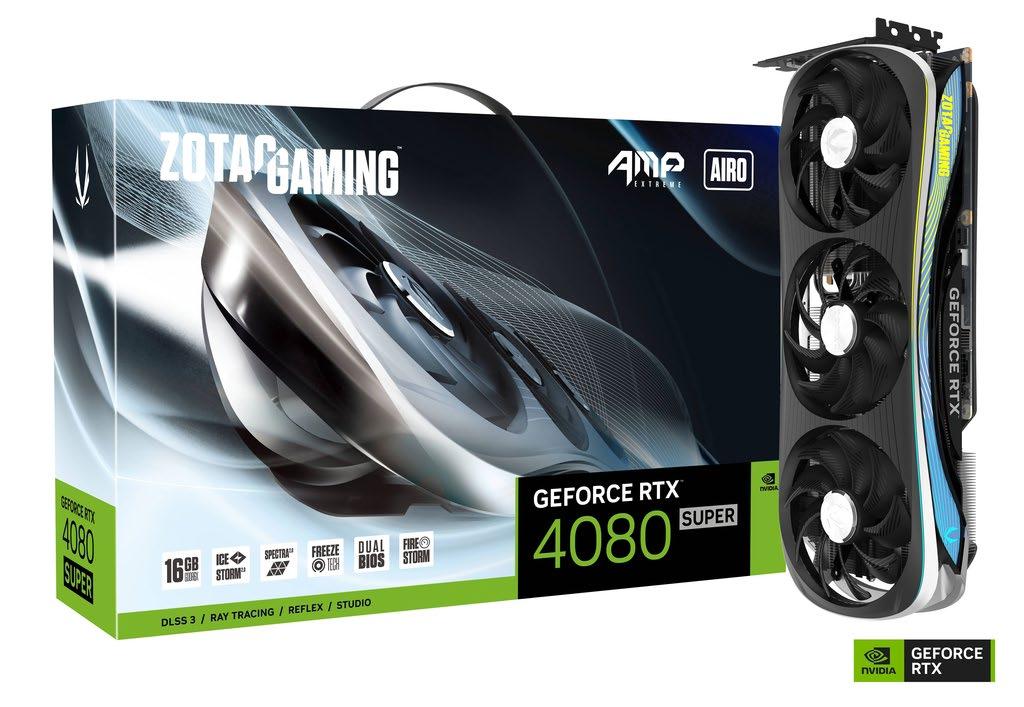



is higher than the 2550 MHz boost of the original RTX 4080. However, the performance increase over the RTX 4080 non-Super is almost negligible.
The Zotac AMP Extreme features a large tripleslot, triple-fan cooling solution and amazing RGB effects. However, the cooler is fairly loud, and the quiet BIOS is not quiet enough.
The Zotac AMP Extreme supports HDMI 2.1 and AV1 hardware encode and decode. However, it does not support DisplayPort 2.0.
The Zotac AMP Extreme is priced at $1100, which is $100 cheaper than the RTX 4080 nonSuper. This makes it a more value-for-money option compared to other RTX 4080 Super cards.
The Zotac GeForce RTX 4080 Super AMP Extreme Airo has a power limit of 320 W. This is unchanged from the original RTX 4080. Please note that the actual power consumption may vary depending on the system configuration and usage. It’s recommended to have a power supply unit (PSU) with a capacity of at least 700 W for this graphics card. Please ensure that the PSU you choose has the necessary connectors for the graphics card and other components in your system. It’s always a good idea to choose a PSU from a reputable manufacturer and one that has an efficiency rating of 80 Plus Gold or higher for the best performance and energy efficiency.
The Zotac GeForce RTX 4080 Super AMP
Extreme Airo is a high-end graphics card and to get the most out of it, a powerful CPU is recommended. The Intel Core i9-12900K is often recommended for this graphics card. This CPU is Intel’s flagship model from the Alder Lake series, packing 8 Performance cores (P-cores) and 8 Efficient cores (E-cores) with speeds up to 5.2GHz. It should be able to handle the demands of the RTX 4080 Super and prevent any potential CPU bottlenecks. However, the final choice would depend on your specific use case and budget. Please ensure that your power
supply and cooling solution are adequate as both the RTX 4080 Super and the i9-12900K are high-performance components that demand significant power and cooling.
For a high-end graphics card like the Zotac GeForce RTX 4080 Super AMP Extreme Airo, it’s recommended to have at least 16GB of RAM. However, for more demanding applications or games, or for future-proofing your system, 32GB or even 64GB might be beneficial. Please note that the exact amount of RAM needed can depend on your specific use case, including the applications you run, your operating system, and other hardware in your system. It’s always a good idea to check the system requirements of the specific software you plan to use.
The Zotac RTX 4080 Super AMP Extreme Airo offers excellent performance and value for its price, but it may not be the quietest option available. It’s worth considering if you’re looking for a high-end graphics card with good overclocking capabilities and don’t mind the noise.
With all that you can see that this is one of the best GPUs on the market if not the second best to a 4090 with all the aspects we have mentioned and the very reasonable price point if you was going overkill this would be your choice to save you a couple of bucks but get more of a bang for sure.
To rate such a GPU that you can’t really fault with a few minor noise issues and such but a very slim issue we can happily give this GPU a must buy solid 9/10 which you really should look into getting if you want that amazing upgrade. Please make sure to take a note of what we recommend to match with this and don’t fry your system by running lower end stuff with this high end GPU. On that note I’m Sawyer from The Gamer Guide and it was a pleasure once again to review some great products from Zotac. If you love what you have read here and you think Zotac is the GPU for you then please head below and check out a range of their products or even pick up a great 4080 Super today.
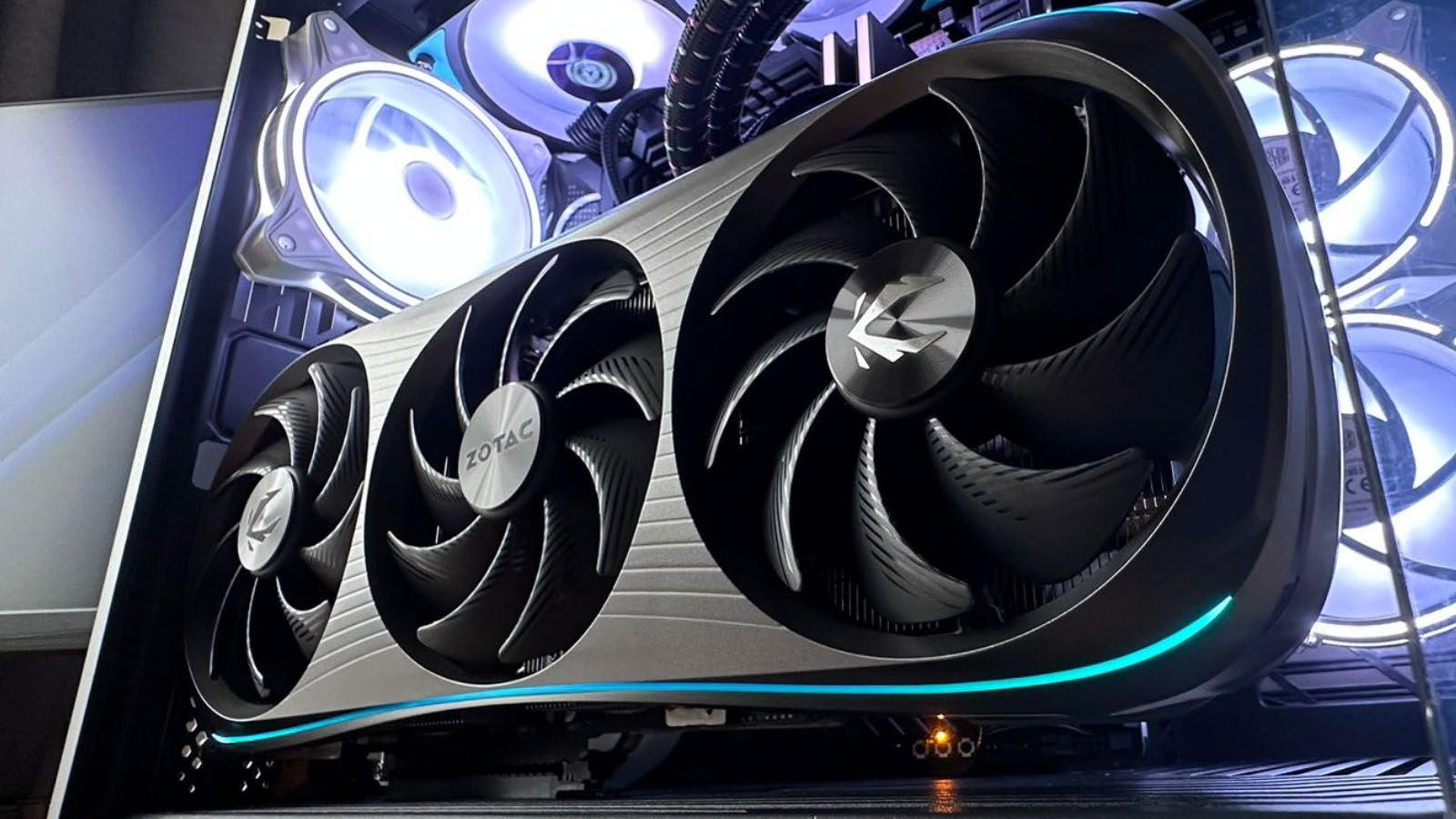

Website: www.zotac.com
Facebook: @ZOTAC
X: @ZOTAC
Instagram: @zotac_official
YouTube: @zotac_official


Reviewed by: Brandon Sawyer
Our great friends and regularly featured Crucial hooked us up with something real special which we call an overkilling or overclocking power bundle. That is their all new T705 2TB SSD with premium heatsink and their Overclocked 64GB DDR5 6000 MT/s Ram which comes in 32GB kits.
Let us first of all introduce who Crucial are for those who may have not heard of them which we would be shocked if so or those who may need a refresher.
As Micron’s global consumer brand, they are uniquely able to connect millions of customers to the innovation and technology that Micron® has been perfecting for more than four decades. Today, the Crucial® brand offers a wide range of memory and storage products worldwide, from leading retail and e-tail stores to commercial resellers and system integrators, enhancing system performance and user productivity on every continent with world-class engineering and a relentless focus on their customers.
The Crucial T705 is currently the fastest PCIe 5.0 SSD, delivering impressive transfer rates. It packs Micron’s latest NAND, fresh firmware, and Phison’s E26 controller, which contribute to its class-leading performance. The T705 is a four-lane solid-state drive running the NVMe 2.0 protocol over a PCIe 5.0 bus. It uses Micron 232-layer 3D TLC NAND chips and Phison’s Gen 5-optimised PS5026-E26 controller.
In July 2022, Micron launched the world’s first 232-Layer 3D NAND, providing unrivalled data input/output (I/O) speed of 2.4GB/s per second. Each layer is also denser (14.6Gb/mm² if you want the numbers), so higher capacity data storage can be created for a smaller physical space.

Together, the number, density, size, and power efficiency of these layers have made Micron 232-layer memory today’s go-to solution for datacentric workloads, including artificial intelligence, unstructured databases, real-time analytics, and cloud computing.
Micron has collaborated with Phison®, AMD, Intel and motherboard manufacturers to enable the Gen5 ecosystem with Micron 232-layer 3D NAND. This same technology has brought Crucial T700 and T705 and other Gen5 SSDs to life. Through continued advancement and innovation on the NAND and technology, Crucial has successfully positioned the T705 at the forefront of performance.
The Crucial T705 Gen5 SSD comes with Crucial’s custom designed premium aluminium and copper heatsink for maximum airflow. This sleek heatsink is built to maintain optimal temperature under high-performance workloads, without the noise or failure risk of integrated fans. The Crucial T705 SSD must be used with adequate system airflow for optimal performance. Our non-heatsink option must be installed with a motherboard heatsink.
The Crucial T705 Gen5 SSD is our best-in-class, premium storage product, and has been designed to meet these specifications:


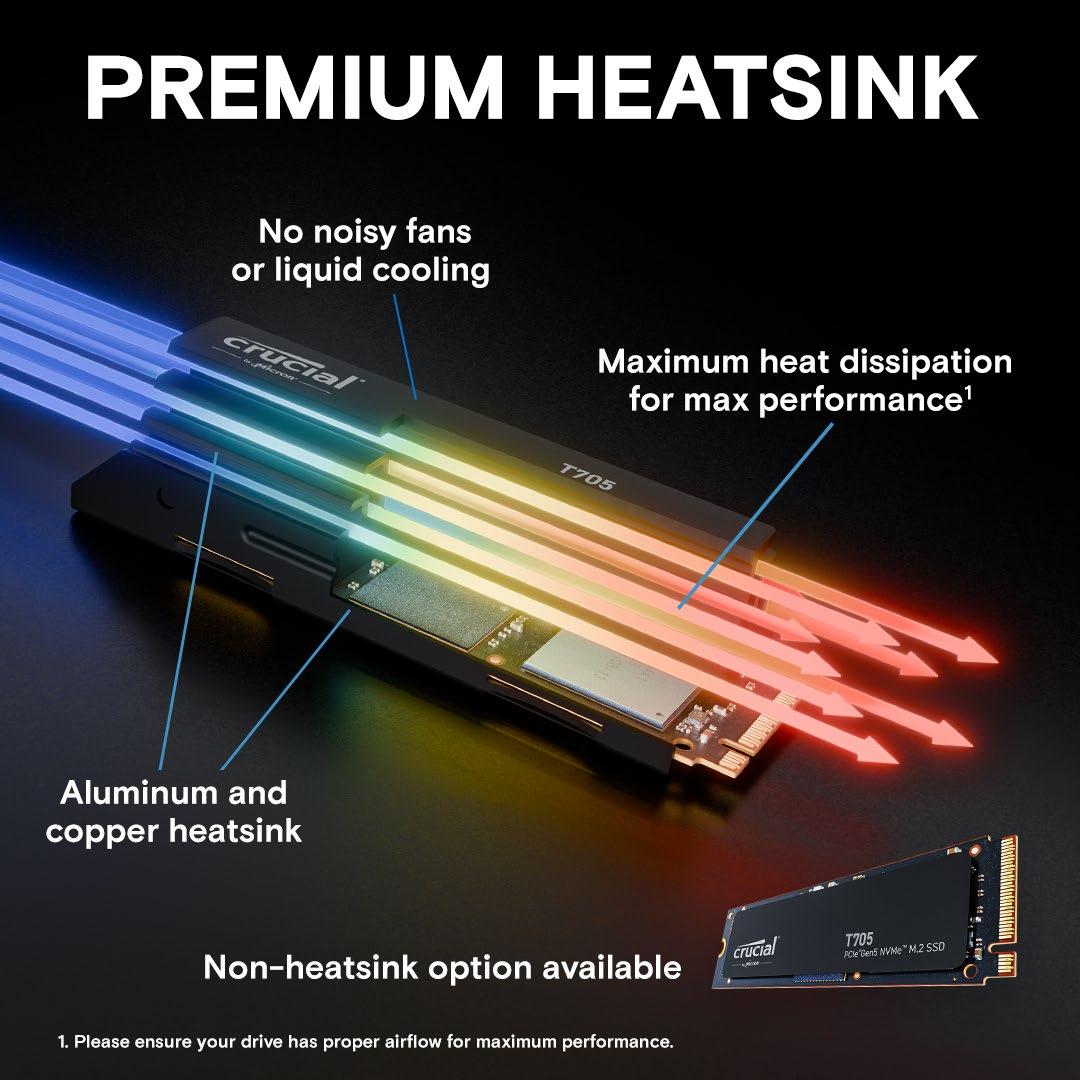





• Micron LPDDR4 DRAM, 1GB per 1TB of NAND flash
• Sequential reads/writes up to 14,500/12,700MB/s2
• Random read/write speeds up to 1,550K/1,800K IOPs2
• Nearly 2x faster than the fastest PCIe Gen4 SSDs3
• Available in premium fan-less heatsink and non-heatsink options
• Spacious capacity options: 1TB, 2TB, 4TB11
• Microsoft DirectStorage optimised with Phison I/O+ technology
• Works with PCIe 5.0 desktops and workstations
• Backward compatible with PCIe 3.0 and 4.0
• Built with Micron 232-layer 3D TLC NAND1
• PCIe 5.0 and NVMe 2.0
• M.2 2280, double-sided
• Phison PS5026-E26 Controller
Advanced features
• Dynamic SLC caching ~11% of total user capacity
• Adaptive thermal protection
Managed thermal throttling starts at 81˚ C
Protective thermal shutdown at 90˚ C
• Redundant array of independent NAND (RAIN)
• Multi-layer data integrity algorithms
• Data protection for power loss events
• Active garbage collection
• TRIM support
• Self-monitoring and reporting technology (SMART)
• Error correction code (ECC)
• Built-in security with AES256 encryption, TCG OPAL 2.01 support, and digitally signed firmware for secure field updates.

Note: Performance is dependent on system configuration. Your results may vary.
Many motherboards include a thermal pad intended to sink heat from the M.2 drive to the chassis. This can cause an interference fit that may prevent an M.2 latch from engaging properly. It is acceptable to remove the thermal pad so that the Crucial T705 Gen5 SSD with heatsink will sit flat in the PCIe 5.0 M.2 port. The bottom bracket of the heatsink assembly will still provide a thermal path into the heatsink.
Well the T705 comes in 1TB, 2TB and 4TB options all ranging in different prices depending on retailers as such.
The Crucial T705 with premium heatsink released on the 12th March 2024 and was priced via Crucial’s website at:
1TB : £284.39 / $259.99
2TB : £502.79 / $439.99
4TB : £758.39 / $729.99
Well without a doubt this is the fastest internal solid-state drive (SSD) tested, delivering currently untouchable transfer rates. However, it requires a PCIe 5.0-compatible motherboard and CPU to reap its full benefits.
The SSD can potentially thermal throttle even with a heatsink, leading to potential performance problems. Despite its high cost, if you prioritise raw speed, the Crucial T705 is hard to beat.
Please note that while the SSD has very impressive speed, it comes with a high cost and potential for thermal throttling. Therefore, it’s important to consider these factors when deciding whether this SSD is the right choice for you.
Thermal throttling is a mechanism that reduces the performance of a computer component, such as a CPU or GPU, when it reaches a certain temperature threshold. This is done to prevent overheating, which could potentially cause damage to the component. When a component like a CPU or GPU is under heavy load, it generates more heat. If the cooling solution in place, such as a fan or heatsink, can’t dissipate this heat

quickly enough, the component may become too hot. To prevent damage from overheating, the component will reduce its operating frequency, effectively slowing down its performance. This reduction in performance is known as thermal throttling.
Thermal throttling can impact the performance of your device, causing it to run slower and potentially leading to a sluggish user interface or reduced frame rates in games. However, it’s an important safety feature that protects your device’s components from potential damage due to overheating.
How do I know if my device is thermal throttling?
Thermal throttling can be identified by observing certain signs and using specific tools. Here are some steps you can take to determine if your device is experiencing thermal throttling:
Monitor Performance: If your device’s performance slows down significantly during heavy tasks but returns to normal when the load is reduced, it might be thermal throttling.
Check Temperatures: High temperatures are a clear sign of potential thermal throttling. You can monitor the temperature of your CPU and GPU using hardware monitoring software.
Use Monitoring Tools: Tools like Intel’s Extreme Tuning Utility (XTU), OpenHardwareMonitor, HWiNFO, or MSI Afterburner can provide real-time information about your CPU and GPU performance, including whether they are thermal throttling.
Observe Clock Speeds: If your CPU or GPU’s clock speed is being reduced significantly below its base rate during heavy tasks, it’s likely that thermal throttling is occurring.
Remember, thermal throttling is a safety feature designed to prevent damage to your device from overheating. If you suspect your device is thermal throttling, it’s important to address the underlying cause, usually excessive heat, to prevent potential damage to your device.
Thermal throttling can be prevented by managing the heat generated by your device. Here are some strategies to prevent thermal throttling:
Proper Cooling: Use a good cooling solution for your device. This could be a high-quality fan, a heatsink, or even liquid cooling for highperformance systems.
Airflow: Ensure good airflow in your device. For desktops, this means having a well-ventilated case with enough fans to push hot air out and pull cool air in2. For laptops, make sure the vents are not blocked and that air can circulate freely.
Clean Your Device: Dust and dirt can clog up fans and vents, reducing their effectiveness. Regularly cleaning your device can help maintain its cooling efficiency.
Monitor Temperatures: Use software to keep an eye on your device’s temperature. If you notice that it’s getting too hot, you can take steps to cool it down before it starts to throttle.
Reduce Workload: If your device is constantly running at high temperatures, you may need to reduce its workload. This could mean running fewer programs at once, reducing game graphics settings, or not overclocking your device.
Remember, every device is different, so you may need to try different strategies to find what works best for your specific situation. It’s also worth noting that while thermal throttling can reduce performance, it’s a safety feature designed to prevent damage to your device from overheating.
Overall
For me Sawyer here at The Gamer Guide I found that this is without a doubt the fastest SSD on the market, however it does come with a hefty price tag but you get what you pay for in this market and if you are looking for the fastest speeds you will get what you pay for here with the T705.
Testing periods we put this to the test against a couple of third party and predecessors and found these clocks a fair few seconds faster than any other which sometimes might matter. However with all heatsinks comes a chance to thermal throttle and that is down to you not Crucial to keep an eye on such for me I have great cooling and liquid cooling systems so I ran into zero issues but I had others mention the thermal throttling as discussed previously.
Rating?
Price tag is the key aspect what can put consumers off but this is the best of the best on speeds so the price is kind of fair and the speeds are exactly what they boast not a fraction less and with that note in mind we couldn’t fault this whatsoever I can happily give this awesome SSD a strong high 9/10 and if you have the funds and you are wanting overkill Crucial do these up to 4TB so you’ll for sure need to snag one of those.

You can’t have an awesome SSD without some of the best RAM too right? Well up next within our power bundle we have the Crucial DDR5 Pro Memory: Overclocking Edition which comes in 32GB kits which we were lucky enough to be gifted two of these so have 64GB of pure goodness to review for yall.
Let’s delve into the Crucial DDR5 Pro Memory: Overclocking Edition and explore its features and performance.
The Crucial DDR5 Pro Memory: Overclocking Edition is designed for enthusiasts and gamers who seek top-tier performance without the frills of RGB aesthetics. Here are the key details:
Specifications:
Available in various densities:
16GB (single module)
24GB (single module)
32GB (2x16GB kit)
48GB (2x24GB kit)
Origami-Inspired Design: The aluminium heat spreader complements a variety of gaming rigs.
Features
• Sleek style in a unique, origami-inspired aluminium heat spreader
• Compatible with Intel® Core™ 12th Gen desktop CPUs and above
• Compatible with AMD RyzenTM 7000 Series desktop CPUs and above
• Supports both Intel® XMP 3.0 and AMD EXPO™ on the same module for overclocking
• 6,000MT/s - 1.88x the data rates of DDR4
• 36-38-38-80 extended timings for 25% lower latency than Crucial Pro plug-and-play DRAM
• Downclock capable for systems that only support slower DDR5 modules
• 2x the bandwidth of DDR4 enabled by:
2x the burst length of DDR4
2x the banks and bank groups of DDR4
On-module power management integrated circuit (PMIC6)
Two independent 32-bit channels per module (64 bits total)
• On-die ECC (ODECC) for long-term stability
• Available in 16GB density now; 24GB density available later in 2024 (also available in kits)
• Limited lifetime warranty
• ECC type = non-ECC, form factor = UDIMM, pin count = 288-pin, PC speed = PC5-48000, voltage = 1.35V,
• rank and configuration = 1Rx8
• Game at higher frame rates, multitask better, improve productivity
Cool look and feel: Crucial’s overclocking
DDR5 Pro memory features an aluminium heat spreader with a unique, origami-based design that is both cool to the touch and an aesthetic win for any rig.
Accelerated performance for more wins: Since every millisecond gained in fast-paced gameplay means the difference between winning and losing, seize the advantage with 25% lower latency for higher frame rates per second.
Intel and AMD compatible: Crucial DDR5 Pro Memory for overclocking is compatible with Intel® Core 12-14th Gen and AMD Ryzen™ 7000 series and higher desktop CPUs.
Flexibility is our flex: By supporting both Intel XMP 3.0 and AMD EXPO1 on the same module, Crucial offers you ultimate flexibility with your build and a tactical advantage. Keep your options open by starting with Crucial DDR5 Pro for overclocking.
Micron quality and reliability: With 45 years of memory expertise, Micron delivers cuttingedge engineering and superior component and module-level testing for all Crucial DRAM products.
As of writing this we used Crucial’s website in which we could only find prices for the below. I do believe these have just come out so the later modules may be priced and out soon.
Singles:
16GB - £77.99/$79.99
Kits
32GB (2x16GB) - £155.99/$164.99
Overall
The Crucial DDR5 Pro Memory: Overclocking Edition strikes a balance between performance and simplicity. While lacking the glitz of RGB lighting, it delivers where it matters most: speed and compatibility. Keep an eye out for availability, especially for the 32GB kits as we would imagine these to be swooped up super quickly.
Please note that availability may vary, so check official and third-party stores for the latest information. If you’re looking for a no-nonsense RAM kit that performs exceptionally well, the Crucial DDR5 Pro Memory: Overclocking Edition is worth considering.
For me Sawyer here at the Gamer Guide I absolutely loved this RAM. It is targeted towards DIYers, Overclockers and Dedicated gamers of course but

don’t let this put you off as it’s got some immense speeds which will match perfectly with some of the higher end CPUs. During our testing periods we found that the boasted 6000 MT/s is right on the spot as Crucial do not cop out here on their marking its perfect down to the last mark ideally I’d recommend the AMD Ryzen 7000 series as this being the perfect RAM for that chip but this is also compatible with some of the higher ended Intel chips too.
Rating?
To rate such a product I found zero to little flaws even though the price point was on the mark, the only thing missing is RGB and the market to use such RAM do not care for RGB whatever its all about speed and this RAM is easily one of the best. With that in mind another high 9/10 for this flawless piece of kit which we highly recommend you do check out.
With that all in mind you know the drill! Head down below to check out Crucial’s website and their socials or if these products we showcased today are not for you I can guarantee you now Crucial have what you are looking for.
Website (UK): uk.crucial.com
Website (US): www.crucial.com
Facebook: @CrucialMemory
X: @CrucialMemory
Instagram: @crucial_memory
YouTube: @CrucialMemory



Reviewed by: Brandon Sawyer
Our great friends over at Anker hooked us up with their MagGo Essentials range this includes a Anker MagGo Wireless Charging Station (Foldable 3-in-1) Two Anker MagGo Power Bank (10K) one in whiter and one in black and a Anker MagGo Power Bank (6.6K).
Let us first introduce you to Who Anker are and what is a MagGo.
Anker Innovations Co., Ltd, commonly known as Anker, is a Chinese electronics manufacturer based in Changsha, Hunan, China. The company was founded in 2011 by Steven Yang. Anker’s product range includes phone chargers, power banks, earbuds, headphones, speakers, data hubs, 3D printers, charging cables, torches (flashlights), and screen protectors, among other products.
Anker is the global leader in charging technology. This includes wireless charging, car charging, and their best-selling portable and wall chargers. Anker is pioneering Power Delivery technology to charge phones, tablets, and laptops at unprecedented speeds.
In addition to Anker, the company has several other brands:
Soundcore: Produces Bluetooth earbuds, headphones, and speakers.
Eufy: Produces smart home appliances and security devices.
Nebula: Makes portable video projectors.
Roav: Makes car accessories.
Anker’s products are sold worldwide, and aside from its domestic market in China, Anker also maintains subsidiaries in Japan, Singapore, the United States, and the United Kingdom.
Anker’s MagGo is a new line of products designed to take advantage of the MagSafe feature on iPhone 12 to the 15 series. The MagGo series includes a variety of magnetic chargers, batteries, and charging stations that are compatible with all MagSafe devices. These products are designed to snap onto your iPhone and charge it, providing a seamless and convenient charging experience. The Anker MagGo series is primarily designed for use with MagSafe devices, such as the iPhone 12 to the 15 series. However, some MagGo products, like the Anker MagGo Power Bank, can also work with non-MagSafe devices that support wireless charging.
Please note that the magnetic alignment feature of the MagGo series, which allows the charger to snap onto the device, may not work with nonMagSafe devices. It’s also important to note that the wireless charger may not be compatible with certain non-MagSafe phone cases. It’s always a good idea to check the specific compatibility details for each product before purchasing. If you have a specific device or case in mind, I recommend checking Anker’s official website or contacting their customer service for more detailed information.
First up let’s start with the Anker MagGo 6.6k, 15W Power Bank. The Anker MagGo Power Bank (6.6K, 15W) is a part of Anker’s MagGo series, designed to provide a seamless and convenient charging experience.
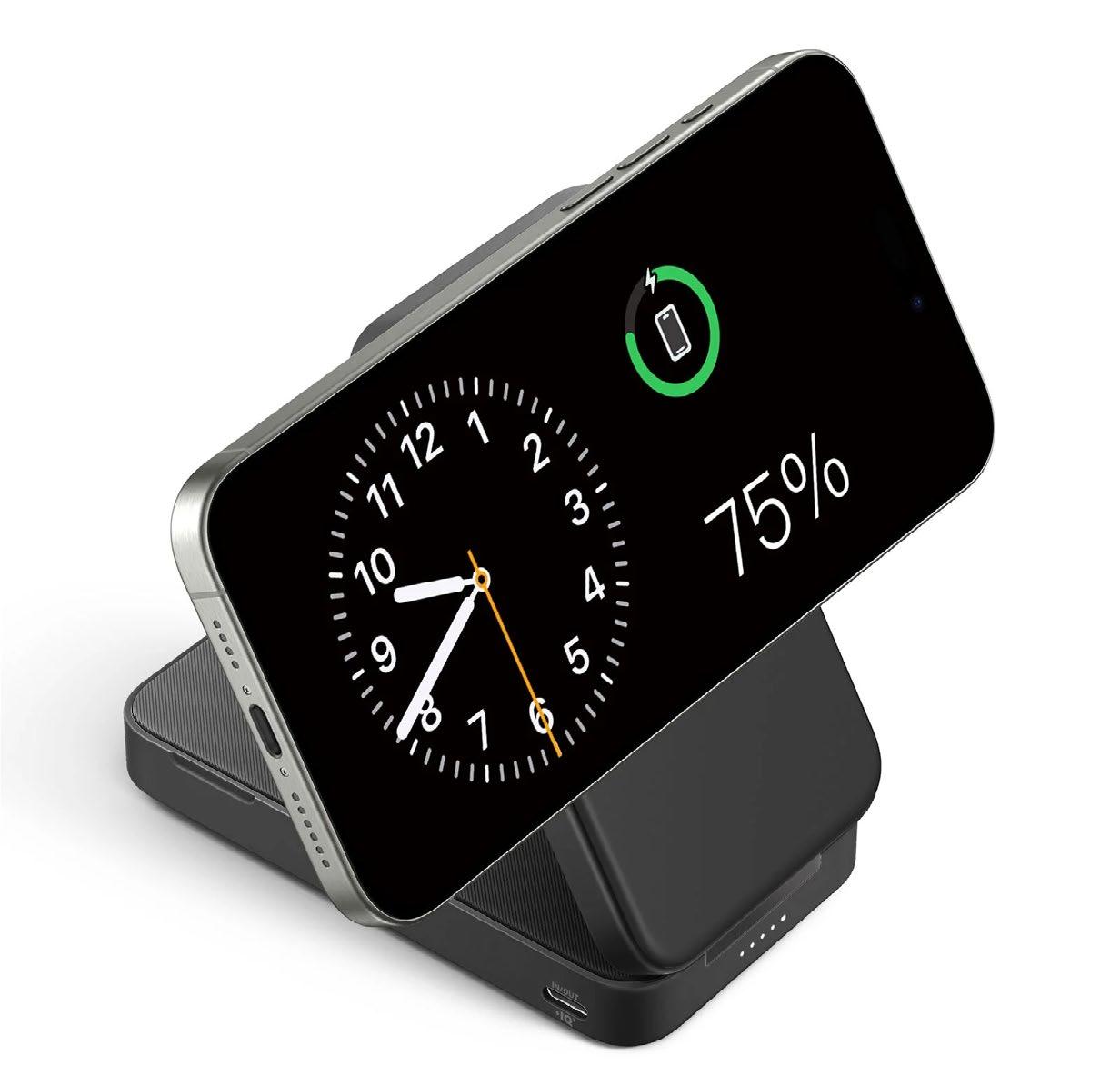
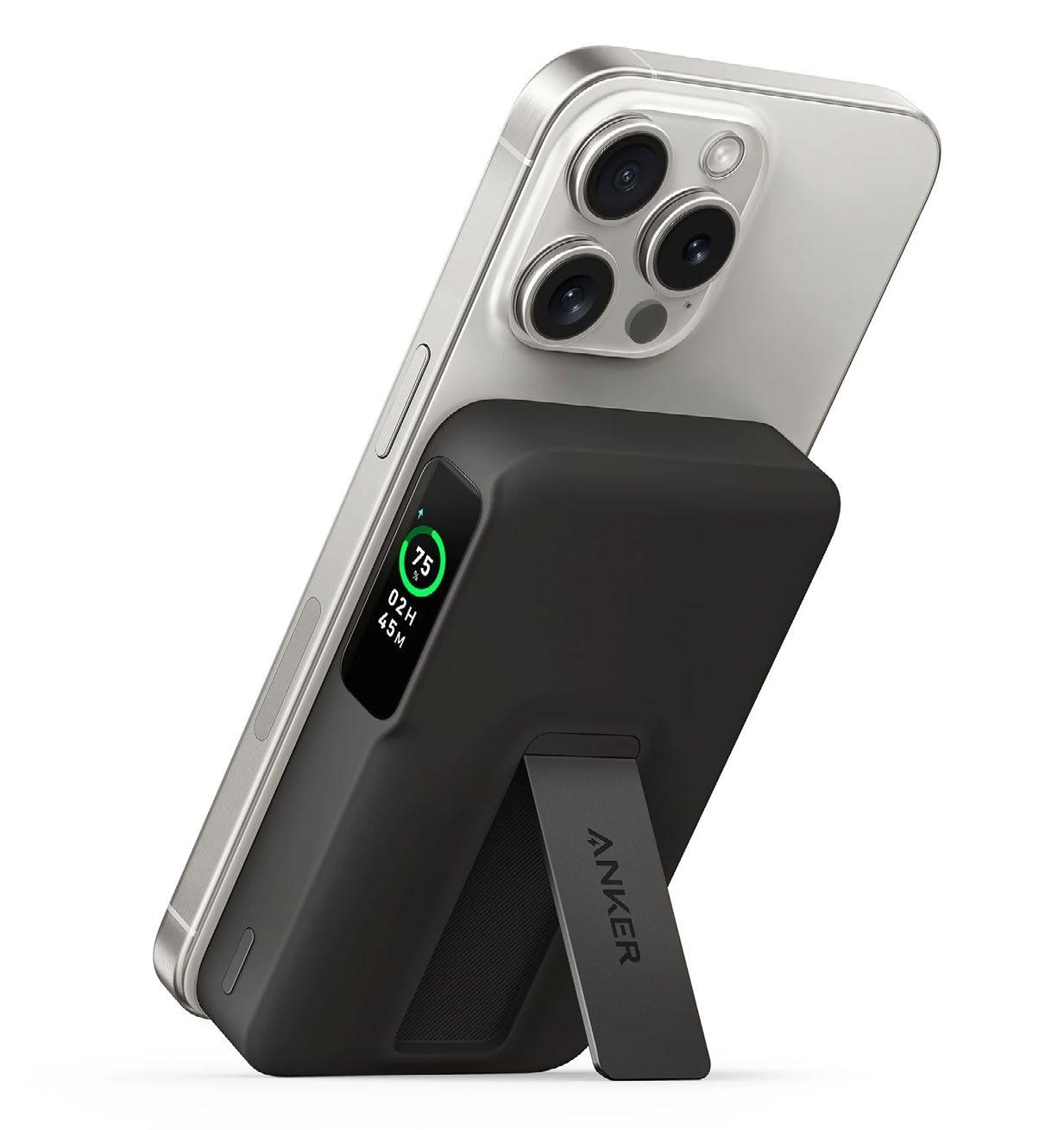



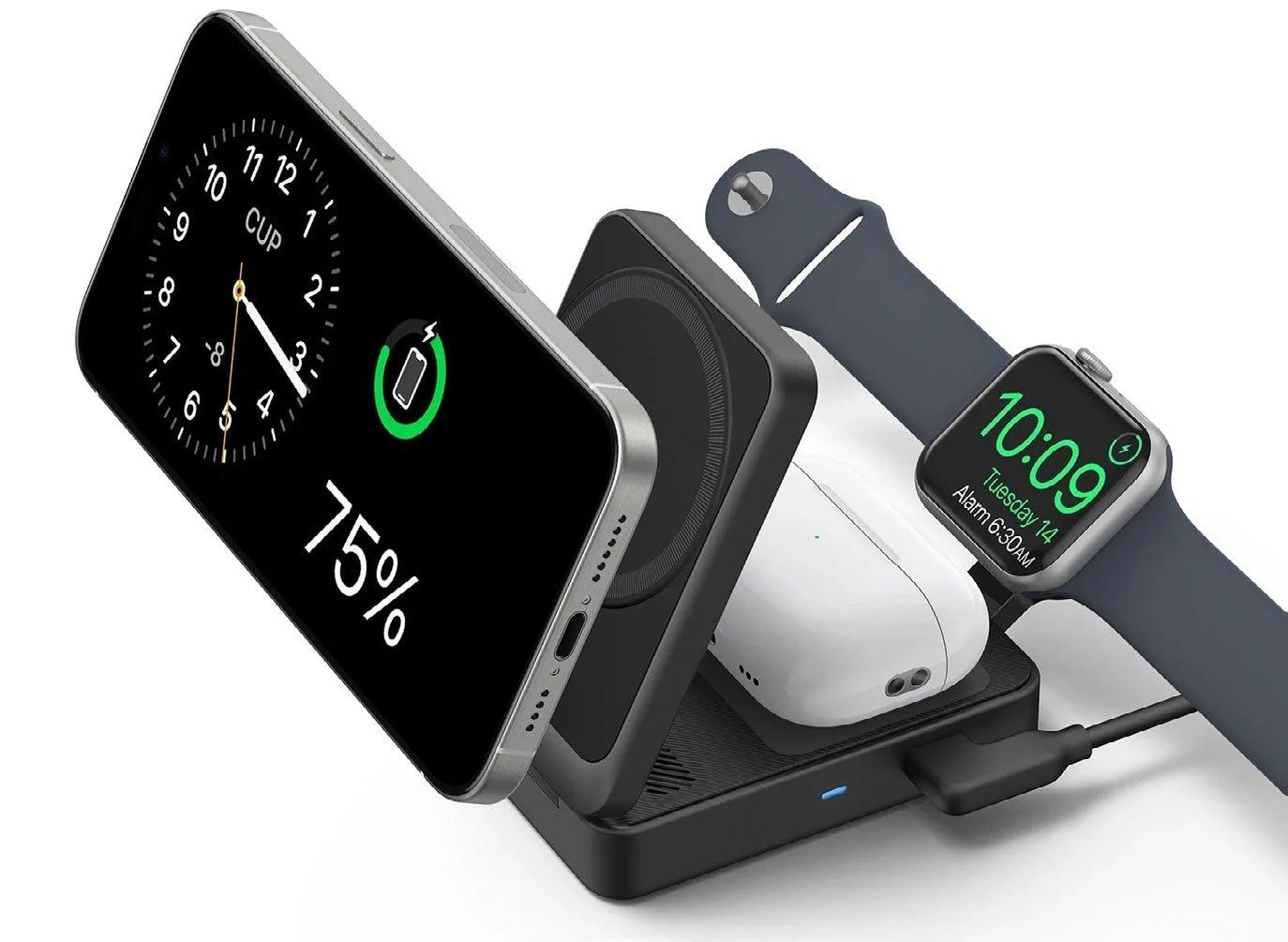

Design: The power bank is available in white, blue, or black and doubles as a stylish phone stand. It has a stand-like design with a 30-degree to 65-degree angle of adjustment.
Charging: The MagGo Power Bank features a 15W Qi2 wireless charger. It can boost even the latest and most powerful iPhone 15 Pro from empty to 50% charge in just 45 minutes.
Battery Capacity: It has a 6,600mAh battery capacity.
Price: The power bank retails for $69.99 in the US and £69.99 in the UK.
The Anker MagGo Power Bank has impressive charging speed and versatility. It’s without a doubt a fantastic Qi2 wireless charger and a svelte and stylish phone stand.
The Anker MagGo Power Bank (10K, 15W)
The Anker MagGo Power Bank (10K) is a part of Anker’s MagGo series, designed to provide a seamless and convenient charging experience.
Design: The power bank has a unique design with a handy display and a kickstand and comes in White or Black.
Charging: The MagGo Power Bank features a 15W Qi2 wireless charger. It can boost even the latest and most powerful iPhone 15 Pro from empty to 50% charge in just 45 minutes.
Battery Capacity: It has a 10,000mAh battery capacity.
Price: The power bank retails for $89.99 in the US and £89.99 in the UK.
The Anker MagGo Power Bank has impressive charging speed and versatility. We would also consider this to be a fantastic Qi2 wireless charger and a svelte and stylish phone stand.
The Anker MagGo Wireless Charging Station (Foldable 3-in-1)
The Anker MagGo Wireless Charging Station (Foldable 3-in-1) is a part of Anker’s MagGo series, designed to provide a seamless and convenient charging experience.
Design: The charging station is lightweight, portable, and easy to use, making it a must-have for cramped spaces. It’s available in black and white finishes.
Charging: The MagGo Wireless Charging Station features an ARM Cortex-M processor and AIdriven algorithms for efficient charging and heat dissipation. It provides fast charging for iPhone and AirPods, with a max output of 15W.
Compatibility: It can charge an iPhone, AirPods case, and Apple Watch all at the same time.
Price: The charging station retails for $110 in the US and £99.99 in the UK.
The Anker MagGo Wireless Charging Station has impressive charging speeds and versatility. For us this is one of the more exceptional wireless charging stations tested to date, if not the best.
Please note that while the Anker MagGo Essential Power Banks and Charging Stations are primarily designed for use with MagSafe devices, it can also work with non-MagSafe devices that support wireless charging. However, the magnetic alignment feature may not work with non-MagSafe devices. As always, it’s a good idea to check the specific compatibility details for each product before purchasing. If you have a specific device or case in mind, I recommend checking Anker’s official website or contacting their customer service for more detailed information.
Anker is by miles the market leader when it comes to charging and the MagGo Essential range hits it out the park as being the best on the market for the price of just an all around great product. AAs you can see they come in some reasonable power ranges with a great impact and a slick design. For me these were an absolute must and need for creators for example TikTok creators and having a power bank attached to their phone for live streams on the go was an absolute game changer you would be silly not to pick one of these up today it really is the content creator on the go’s ideal product. Let’s not forget about the 3 in 1 that is perfect for all your needs, nowadays you have all three and struggle to find outlets to charge them all. Producing a 3 in 1 is much appreciated and very much so needed for all creators that are at home or just on the go at events and such.
With all that in mind I Sawyer here at The Gamer Guide are finding Ankers products to never fail me and consistently produce amazing products each and every time. So for us the MagGo Essentials are highly recommended as a must have and a high scoring once again with a 9/10 which is much deserved.
If you see these products and think wow they are for me or are wondering what else Anker sells for you then please do head below to find out more or check their socials too.
Website: www.anker.com
Facebook: @Anker
X: @AnkerOfficial
YouTube: @Anker
TikTok: @ankerofficial






Our great friends over at Anker have hooked us up with their all new Boom 2 which is a great portable speaker. First up let us introduce you to Ankers Soundcore range.
Soundcore by Anker is a brand that offers a range of audio products, including Bluetooth headphones, true wireless earbuds, and Bluetooth speakers. Here are some key points about Soundcore:
Soundcore products are designed to deliver highquality sound. They incorporate advanced audio technologies such as SweatGuard, BassUp, ACAA, and HearID. Soundcore has been recommended by 10 GRAMMY-winning artists, 20 GRAMMYwinning audio producers, and numerous media outlets and influencers including ourselves.
Soundcore provides quality audio at an affordable price point, making it accessible to a wide range of consumers. Whether you’re looking for headphones, earbuds, or speakers, Soundcore offers a variety of options to enhance your listening experience.
The Boom 2
Let’s dive into the Soundcore Boom 2, Anker’s latest portable speaker. Here’s what you need to know:
The Soundcore Boom 2 boasts an IPX7 waterproof rating, making it suitable for poolside parties or beach outings. It’s even floatable in water! The speaker features a passive radiator with dual LED lights, adding a touch of visual flair. The Boom 2 aims for clear sound quality with its audio output driven by two tweeters and a subwoofer. BassUp technology enhances the depth of bass in your music, ensuring a satisfying listening experience.
Enjoy a long playtime of up to 17 hours, which is impressive for a portable speaker. Need to charge your phone? The Boom 2 also functions as a power bank for your devices.
The Soundcore Boom 2 is equipped with a builtin microphone, allowing you to make and receive calls directly through the speaker. Whether you’re
enjoying music or hosting a conference call, the microphone ensures clear communication.
The Soundcore Boom 2 can be fully recharged in approximately 4 hours when using a 5V/2A USB charger. This relatively quick charging time ensures that you can get back to enjoying your music without much delay!
The Soundcore Boom 2 works flawlessly with Bluetooth and can connect to any and all devices that use Bluetooth making this the go to speaker on the market that brings connectivity to your TVs, laptops, PC and or mobile devices it really does provide for all here. The Soundcore Boom 2 also supports Bluetooth multipoint, allowing you to connect multiple devices simultaneously. Here’s how it works:
Pair your Soundcore Boom 2 with the first device (e.g., your smartphone). Once connected, put the speaker in pairing mode again. Pair it with a second device (e.g., your laptop or tablet).
When both devices are paired, the speaker will automatically switch between them based on which one is actively playing audio. For example, if you’re listening to music on your phone and a call comes in on your laptop, the speaker will switch to the laptop for the call.
Keep in mind that only one device can play audio at a time. If both devices try to play simultaneously, the speaker will prioritise the active one. Also, some features (like voice assistants) may work only with the primary connected device. Enjoy the convenience of connecting multiple devices to your Soundcore Boom 2!





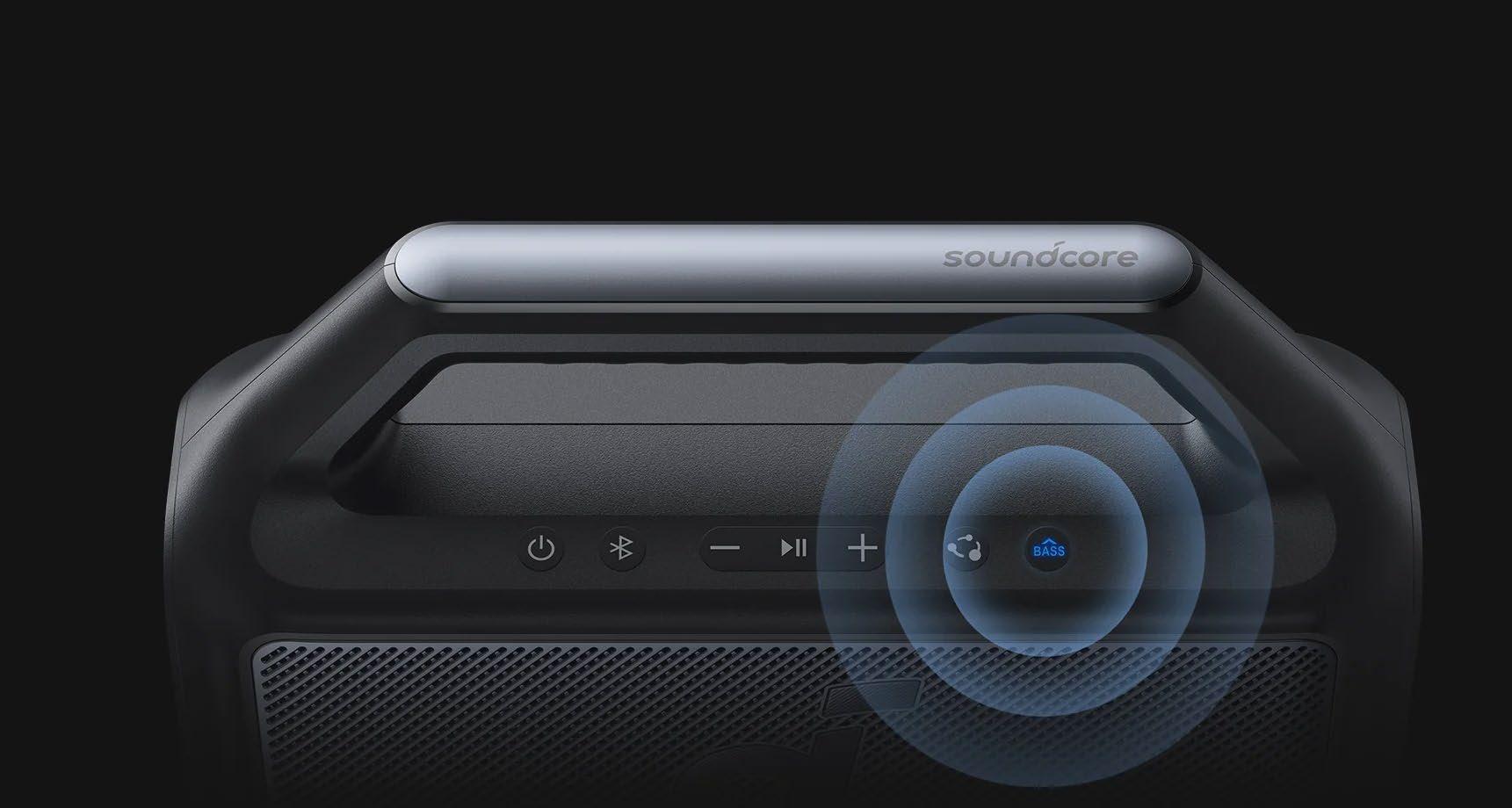

The Soundcore Boom 2 comes with an 18-month warranty starting from the date of purchase. This warranty covers any quality-related defects on items sold directly by Soundcore or Soundcore’s authorised resellers. If you encounter any issues within this period, you can take advantage of the warranty for repair or replacement.
As of writing this the Boom 2 is currently not available but is due to ship out early March with price yet to be confirmed however we have heard it to range around the $130 mark which is fair for what you get.
I absolutely loved this speaker. I had used it for gaming as a kind of a soundbar for my LG OLED
and wow I was very impressed with the price and the portability it really was great. Not only that this was the perfect item to entertain guests or just apply some low fi beats across the house or in the background of my streams or content. This really is a must have for creators or anyone really for the price you really get something special.
To rate such a product we can only give a high score as I came across zero faults this was near perfect to us and we highly recommend. Our score can sit comfortably as a recommended 9/10 this product excels and soundcore by Anker is fantastic at what they do. I Sawyer here at The Gamer Guide enjoyed thoroughly reviewing this product and producing great information on why this is for you.
As always you can head over to their site and socials below and pick up something special of course because Anker do not fail on making great products.
Website: uk.soundcore.com
Facebook: @SoundcoreAudio
X: @soundcoreaudio
Instagram: @soundcoreaudio
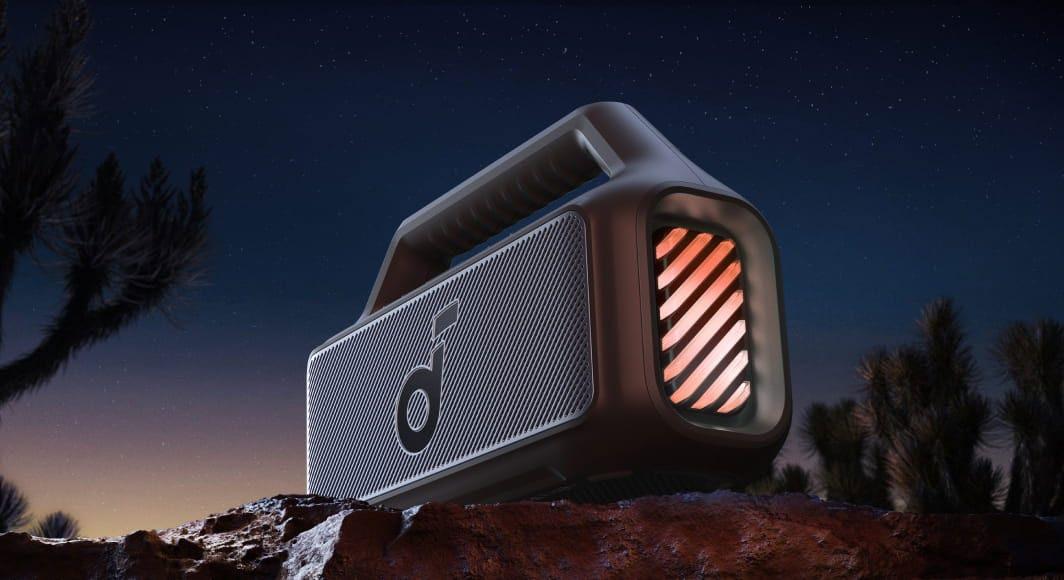



Working with a new brand is always our goal here at TGG and this time we have managed to work with a major brand like OBSBOT which they kindly gifted us their Tiny 2 which is an AI-Powered 4K PTZ Webcam.
First let us introduce you to who OBSBOT actually are.
OBSBOT is an artificial intelligence webcam brand developed by REMO TECH. Their mission is to connect people and the imaging industry to the future through innovative products and revolutionary technology. OBSBOT aims to empower users with cutting-edge technology, making video creation and communication more accessible and enjoyable.
The Obsbot Tiny 2 is a remarkable webcam that combines advanced features with a sleek design. Let’s delve into its details:
The Obsbot Tiny 2 boasts an elegant, lightweight, and pocket-friendly design. Crafted from luxurious magnesium alloy, it feels solid and premium to the touch. The compact dimensions (47 x 44 x 62.02 mm) make it highly portable.Obsbot provides a robust case to protect this gem while you’re on the move. The camera is mounted on a gimbal, ensuring stability and preventing accidental damage.
Advanced Tracking: The Tiny 2 excels in subject tracking. Whether you’re presenting, vlogging, or video conferencing, it keeps you in focus smoothly and accurately.
Gesture Controls: Yes, you read that right! Gesturebased commands enhance your interaction with the webcam.
Sharp Visuals: The clean, sharp visuals elevate your video quality.
Auto-Focus: While not the fastest, the auto-focus feature ensures clarity.
Voice Commands: Control the webcam using voice commands.
Privacy Mode: When not in use, activate privacy mode to safeguard your space.
The Obsbot Tiny 2 incorporates a fascinating feature called Dual Native ISO, which significantly enhances image quality in varying lighting conditions. Let’s delve into how it works:
Dual Native ISO is a technology that combines **two native ISO settings** within the **CMOS sensor** of the Obsbot Tiny 2.These two native ISOs allow the camera to automatically switch between them based on the available light. This ensures optimal performance in both dimly lit and brightly illuminated environments.
Low ISO: When shooting in low-light situations (such as indoors or during the evening), the camera uses the lower native ISO. This minimises noise and maintains image clarity.
High ISO: In well-lit scenarios (like daytime or under strong artificial lighting), the camera switches to the higher native ISO. This preserves details and prevents overexposure.



The seamless transition between these two ISO settings results in exceptional imaging across a wide range of lighting conditions.
Advantages of Dual Native ISO
Noise Reduction: By utilising the appropriate ISO, the Obsbot Tiny 2 reduces noise, ensuring cleaner and sharper images.
Dynamic Range: It expands the camera’s dynamic range, allowing it to capture more details in highlights and shadows.
Real-Time Adaptation: The AI technology within the Tiny 2 seamlessly manages this switch between low and high ISO settings, delivering clear and vivid images devoid of unsightly noise artifacts.
Dual Native ISO in the Obsbot Tiny 2 is like having two sets of eyes, one for the dark and one for the light, ensuring exceptional image quality regardless of the lighting conditions.
How does gesture control work?
Gesture control on the Obsbot Tiny 2 is a fascinating feature that allows you to interact with the webcam using simple hand movements. Let’s explore how it works:
Enabling Gesture Control:
To activate gesture control, raise your hand in front of the camera lens with an open palm. The Tiny 2’s AI system will recognize this gesture and enable the feature.
Functions Supported by Gesture Control
Start/Stop Tracking: Hold up your hand with an open palm, and the webcam will begin or cease tracking the subject. This is particularly useful for video conferencing, presentations, or vlogging.
Zoom In/Out: Point both your hands’ index fingers inwards and move them closer together to zoom in or move them further apart to **zoom out. Be cautious not to accidentally trigger a dramatic zoom during important calls!
Convenience: Instead of fumbling with buttons or software controls, you can seamlessly adjust tracking and zoom levels using natural hand movements.
Intuitive Interaction: It feels like magic—your gestures directly influence the camera’s behaviour. Remember
Gesture control enhances the Obsbot Tiny 2’s user experience, making it more accessible and userfriendly.
Practise a bit to get the hang of it, and soon you’ll be effortlessly controlling your webcam with a wave of your hand!
What Field of view does the tiny 2 produce?
The Obsbot Tiny 2 features a **wide-angle lens** with a **field of view (FOV)** of approximately 85.5 degrees. This expansive FOV ensures that it captures a broader scene, making it ideal for various applications such as video conferencing, content creation, and live streaming.
Whether you’re showcasing your surroundings or engaging in virtual meetings, the Obsbot Tiny 2’s wide-angle lens provides versatility and clarity.
The Obsbot Tiny 2 has a retail price of $329 on Amazon or roughly £249. Keep in mind that this price can increase if you choose to bundle it with optional accessories like the Tiny 2 Smart Remote, HQ Mic, or an Extendable Tripod.
If you’re looking for a high-quality 4K webcam with advanced features, the Obsbot Tiny 2 is definitely worth considering!
Pros and Cons
Pros:
Excellent image quality across various lighting conditions.
Reliable subject tracking.
Dual-native ISO for better performance. Gesture controls that actually work. An easy-to-use yet feature-rich app.
Cons:
]The app consumes a hefty 770MB.
]
The remote control lacks a USB-C connector.
In summary, the Obsbot Tiny 2 is a smart, travelfriendly webcam that delivers on almost every front. If you’re willing to invest, it’s one of the best webcams available today. However, its premium price may not fit everyone’s budget but as you all know by now you get what you pay for and this price tag is very much so justified.
I Sawyer here at The Gamer Guide thoroughly enjoyed reviewing this great webcam. It is a must have with many if not all creators. The modes and settings really make this convenient and the AI aspects really do make things simpler and easier to enhance your content creation. From down to the core this product is hands down one of the best 4k webcams on the market having tried a lot
we can’t recommend this enough as a creator this would excell your performance and your content.
To rate such a product well there was a bunch of messing around in the app to get it to look perfect but it’s super simple to run through and has a lot of auto options to assist too. For me the price is on point or even kind of under priced, again this isn’t targeted as budget friendly as you get 4k quality here.
With all that in mind it’s an easy 9/10 stamp of approval here with a recommended go buy now as creators this is a must. If you would love to pick up the Tiny 2 or just check out OBSBOT who do have an affiliate program then you can do so below.




The recent Nacon Connect showcased some new games coming to Xbox. Check them out in our Nacon Connect Xbox games round-up. If you missed the full show, here’s a list of everything shown during the Nacon Connect coming to Xbox Series X|S and Xbox One.
Nacon dropped a sizzle reel featuring many of the sports games it’s working on from across a range of competitive sports. Check out the trailer above for a glimpse at MXGP, Pro Cycling Manager 2024, Rugby 24, Session: Skate Sim’s upcoming Schoolyard DLC, Tiebreak: The Official Game of the ATP and WTA, and Tour De France 2024.
Crown Wars: The Black Prince
Developer: Artefacts Studio
Platforms: Xbox Series X|S
Release date: OUT NOW
We got a new trailer for Crown Wars: The Black Prince, a turn-based strategy game that puts you on a castle throne during The Hundred Years War to command your forces to take on an enemy threat known as the Order. You’ll need to manage your resources, train and equip your soldiers, and draw on your strategy skills to protect your kingdom from destruction.
You don’t have long to wait until you can play this one, as Crown Wars: The Black Prince launches on Xbox Series X|S on March 14.
Dragonkin: The Banished
Developer: EKO Software
Platforms: Xbox Series X|S
Release date: February 2025
Dragonkin: The Banished is a hack n’ slash actionRPG coming to Xbox Series X|S in February 2025. You’re put in the shoes of a mutant hybrid of human and dragon descent and tasked with exploring a dark fantasy world filled with monsters and dragon overlords in single-player or co-op for up to four players.



Developer: KT Racing
Platforms: Xbox Series X|S
Release date: 2025
Following the launch of Test Drive Unlimited later this year, KT Racing plans to launch its next racing simulation game, Endurance Motorsport Series, in 2025. Unlike conventional racing sims, Endurance will give you tools to steal the strategic advantage in races.
When pulling into a pit stop you’ll step into the shoes of one of the crew to adjust numerous aspects of your vehicle before speeding back onto the track.
Developer: Spiders
Platforms: Xbox Series X|S
Release date: 2025
While we still don’t have a release date for Greedfall 2 other than a 2025 window, Nacon has announced that it’ll be entering early access on Steam sometime this summer.
This instalment will see you exploring many parts of the Old Continent we didn’t get to see in Greedfall. We’ll be playing as Teer Fradee, a native fighting to free their people from violence and persecution.
Life
Developer: Aesir Interactive, Cyanide Studios, Simteract, and Stillalive Studios
Platforms: Xbox Series X|S and Xbox One
Nacon gave us a closer look at its new sim series, Life, which started with the launch of Stillalive Studios’ Garden Life: A Cozy Simulator on February 22 for Xbox Series X|S and Xbox One.
Following that on February 23, Cyanide Studios’ Chef Life: A Restaurant Simulator launched on Xbox Series X|S and Xbox One. Looking ahead, Simteract’s Taxi Life: A City Driving Simulator will launch on March 7 for Xbox Series X|S, followed by Ambulance Life: A Paramedic Simulator in September for Xbox Series X|S.


Ravenswatch
Developer: Passtech Games
Platforms: Xbox Series X|S
Release date: 2024
Nacon revealed that Ravenswatch will get a major update called Avalon on PC in April. The top-down roguelike RPG has been in early access on PC for a while now, but we’re yet to get a release date for Xbox Series X|S, which still has a very vague 2024 release window.
Terminator: Survivors
Developer: Nacon Studio Milan
Platforms: Xbox Series X|S
Release date: Summer 2025
Terminator: Survivors features an original story set after the events of the first two films, following the arrival of Judgement Day. Whether in singleplayer or four-player co-op, we play as part of a group of survivors attempting to fight through the increasing threat of Skynet’s machines in the postapocalyptic world. We’ll be fighting Terminators and rival human factions for valuable resources in this survival game. Terminator: Survivors launches on Xbox Series X|S next summer, but players on PC will have a chance to play from October 4, 2024, when it enters early access.

Test Drive Unlimited Solar Crown
Developer: KT Racing
Platforms: Xbox Series X|S
Release date: 2024
Test Drive Unlimited Solar Carown still only has a 2024 release window, but Nacon gave us a look at the off-road driving we’ll be able to enjoy on Xbox Series X|S when exploring Hong Kong island. Filled with secret cars to hunt down, seemingly unrestricted exploration of the island, and a 1:1 recreation of the real-world Hong Kong, it looks like we’ll be in for a lot of fun later this year.
Welcome to ParadiZe
Developer: EKO Software
Platforms: Xbox Series X|S
Release date: OUT NOW
Nacon dropped an animated launch trailer for Welcome to ParadiZe, which was released on Xbox Series X|S on February 29. It’s an actionadventure RPG that highlights the fun side of the zombie apocalypse as if slaughtering zombies isn’t fun enough, right? tasking you with building your own base, collecting zombie companions, and surviving the deteriorating world in style and comfort.


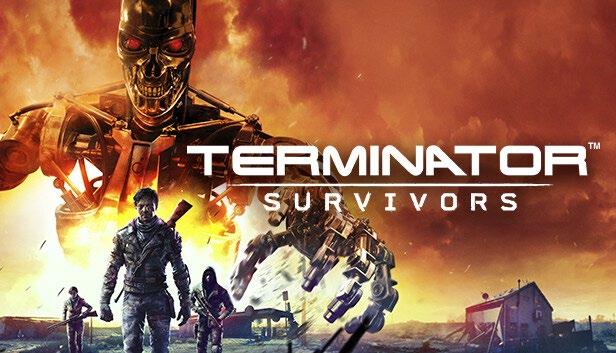


FORMAT is Europe’s biggest community gaming nightlife event and nightlife movement for gamers and non-gamers alike. Formerly known as Manchester Gamers Unite, FORMAT hosts industry leading nightlife events for gamers, non-gamers, game developers, and community leaders, bringing the best of the best together for an evening of gaming nightlife fun.
FORMAT recently officially announced their expansion into Liverpool in 2024 alongside its Manchester counterpart. With the expansion to Liverpool FORMAT will be bringing three evenings of games industry talent and all its international network on September 25th - 27th.
Get ready for three evenings of playing awesome UK & International Games, Publisher Pitching, Meeting Game Industry stars and community leaders, live music talent from across the UK, and participating in Europe’s fastest-growing games industry nightlife movement.
Over the last as 8 years, FORMATGG has grown from a small gamers and game developers meetup taking place in Manchester’s Northern Quarter to a goliath of a games industry event housing some of the world’s leading games industry brands, studios, community leaders, businesses, music artists, technology, and more, which sees 1000–1500 attendees across all three nights of its iconic event season.
And it will be making its way to the heart of Liverpool this September. FORMATGG has put the UK on the map as the sole owner of Europe’s leading games industry nightlife movement and acts as a platform to unite the game development, content creation, and gaming community of the video games, media, tech, and entertainment industries, uniting businesses and individuals alike through a beautiful blend of video game and traditional nightlife culture.
The festival houses three separate evenings of events consisting of the following:
FORMAT’s signature, RE: FORMAT games industry VIP function which acts as an opportunity for FORMAT’s international delegates, exhibitors, partners, sponsors, industry business leaders, key figures, investors, game publishers, press, and more to come together for an evening of business networking, keynote presentations and panels, and forging meaningful business connections.
FORMAT: The Ultimate Gaming Social which is FORMATGG’s main marquee event, sees consumers and delegates travel from all over the UK, Europe, US, Asia, India, and more for an evening of trying out the latest video game and technology releases from AAA, AA, and indie game studios, live music and performance entertainment, industry content creators livestreaming the games on showcase events to their global audiences, and most importantly, an evening of good food, good drinks, and making memories.
FORMAT: After Hours, the official after party event of FORMAT: The Ultimate Gaming Social, in which 150–300 attendees, ranging from gamers, game studios, and community leaders, for a continuation of celebrating FORMAT uniting the global games industry together through business networking.
FORMATGG’s Liverpool expansion announcement has been met with enormous praise and huge welcomes from prominent Liverpool city region game industry leaders, business leaders, game studios, brands, and the gaming community within Liverpool, and FORMATGG’s founder and CEO, Simran Whitham, had the following to say regarding the festival’s expansion news:





“This is the announcement I have waited years to make, the northern games industry is criminally underrepresented compared to its southern counterpart, and yet we produce some of the greatest creative projects, talent, and initiatives across the world in games, TV, film, music, and more, and I’ve made it a goal to provide the northern UK games industry with the event it deserves.
Liverpool, like Manchester, is a beautiful city with a rich history of creativity and has a truly wonderful games industry community that has been ignored for far too long.
When I was 20 years old my dream was to build a nightlife festival for the games industry, and at 28 I’m proud to see us going multiregional and the FORMATGG team are proud to be giving Liverpool the games industry event it deserves!
We’d like to thank all our amazing partners, studios, and friends in the industry who have made this expansion possible, especially our loyal partners at Escape Technology and Lenovo, who have propelled FORMAT’s growth over the years.”
Helen Cross, Creative and Digital Cluster Manager at Growth Platform - Liverpool City Region Growth Company said:
“I am delighted that Liverpool gets to host FORMAT - Europe’s largest games industry nightlife event next year. With a gaming heritage going back 40 years and new studios continuing to open up today, our vibrant games industry cannot wait to help shape this international festival which in turn will help shine a light on the awe-inspiring games community we have here.”
FORMAT will be working very closely with Growth Platform - Liverpool City Region Growth Company and the Liverpool City Region Games Board over the course of 2024 to collaborate closely with Liverpool’s games industry leadership to shape the festival for the local market and help shine a light on the growing Liverpool game development scene.
The FORMAT team has announced the official launch dates for FORMAT Liverpool will be September 25th - 27th, so make sure to make a note in your calendars for when Europe’s leading games industry nightlife festival makes its way to Liverpool.
Secure your tickets here: FORMAT Liverpool | The Ultimate Gaming Social - September 2024 Tickets | Camp And Furnace Liverpool | Thu 26th September 2024 Lineup
Check out FORMAT’s official website for more info here: www.format.gg






The Xbox Partner Preview event on March 6th 2024 managed to pack a lot into what was roughly a 30 minute showcase we had plenty more announcements to update our big list of upcoming Game Pass games, as well as new looks at gameplay for other Xbox games on the horizon. To catch up on everything that was announced, check out our full Xbox Partner Preview round-up below!
Game Pass announcements
Sci-fi survival adventure game The Alters was confirmed as a day-one Game Pass addition when it launches later this year.
The gorgeous Creatures of Ava was announced for Xbox Game Pass and launches later this year as an action-adventure creature-saving game.
Sleight of Hand was announced as coming to Game Pass in 2025, when it’ll blend together deckbuilding, stealth, action, the occult, and more.
Frostpunk 2 confirmed its PC Game Pass release date, with its Xbox Game Pass release to come later. We also got a 2024 release window for Kunitsu-Gami: Path of the Goddess, Capcom’s new action-strategy game.
Xbox Game Pass Ultimate subscribers can grab the Persona 3 Reload: Expansion Pass for free via the Perks program.
All other announcements
Square Enix announced that Final Fantasy 14 will launch in full on Xbox this March.
A surprise announcement saw the S.T.A.L.K.E.R. Legends of the Zone Trilogy shadow-dropping onto Xbox. Frogwares revealed they were shaking things up with the announcement of survival horror game The Sinking City 2.
Milestone confirmed Monster Jam Showdown launches on Xbox in 2024.
Unknown 9: Awakening unveiled a new gameplay trailer ahead of its launch this summer.
We also had a gameplay trailer for Tales of Kenzera: Zau, out this April.
In a bizarre twist, Chucky has arrived for Roblox with Griefville: Survive the Nightmare.
We saw gameplay for The First Berserker: Khazan, which doesn’t yet have a release date.
All-in-all, it was a good look at some great upcoming Xbox games, including some interesting surprise announcements.

After weeks of rumour and speculation, Microsoft has now announced that four unnamed Xbox exclusives will be released on rival platforms. During a special episode of the Official Xbox Podcast, Microsoft Gaming CEO Phil Spencer confirmed that Microsoft will soon bring four unnamed Xbox exclusives to rival platforms. During the podcast, Spencer said Microsoft is not naming the four games set to launch on rival platforms but did clarify that Starfield and Indiana Jones and The Great Circle are not going multiplatform.
“So we made the decision that we’re going to take four games to the other consoles, just four games, not a change to our kind of fundamental exclusive strategy,” Spencer said, “We’re making these decisions for some specific reasons. We make every decision, really, with the long-term health of Xbox in mind, and long-term health of Xbox means a growing platform, our games performing, building the best platform for creators, reaching as many players as we can. We’re always looking to learn as a leadership team and to grow, and we think this is an interesting point in time for us to use what some of the other platforms have right now to help grow our franchises.”
When asked if he could reveal the four games set for other platforms, Spencer said, “I’m not going to name those games. The teams that are building those games have announced plans that are not too far away. As we know, game teams put a lot of energy into their announcements with the partners, so I don’t want to take anything away from those teams.”
While Spencer did confirm that the four games did not include Starfield and the upcoming Indiana Jones and The Great Circle, The Verge reports that the Xbox exclusives set to go to rival platforms are Hi-Fi Rush, Pentiment, Sea of Thieves, and Grounded. Spencer goes on to say that for the four games selected, Microsoft looked at titles that were over a year old and that a “couple of the games are community-driven games, new games, kind of first iterations of a franchise that have reached their full potential, let’s say, on Xbox and PC.” The other two games are “smaller games that were never really meant to be built as kind of platform exclusives.”
While it’s not in Microsoft’s current plans to bring Starfield and Indiana Jones to rival consoles, Spencer has refused to rule out if they will go to PS5 in the future. In an interview with The Verge, Spencer said, “I don’t think we should as an industry ever rule out a game going to any other platform. We’re focused on these four games and learning from the experience, “But I don’t want to create a false expectation on those other platforms that this is somehow the first four to get over the dam and then the dam’s going to open and that everything else is coming, that’s not the plan today. I also don’t want to mislead customers on those other platforms. We’re launching these four games, and we’re excited about it. We’re excited about the announcement and everything else, but we’ll see what happens for our business.”
In a statement posted on Xbox Wire, Microsoft says, “There is no fundamental change to our approach on exclusivity,” and that “by bringing these games to more players, we not only expand the reach and impact of those titles, but this will allow us to invest in either future versions of these games, or elsewhere in our first-party portfolio.”
Next Xbox will deliver the “largest technical leap” we’ve ever seen, says Microsoft. Microsoft has revealed it will share more details about new Xbox hardware later this year while teasing that the next generation will offer the “largest technical leap you will have ever seen.”
After many rumours surrounding Xbox’s future as a platform, Microsoft has finally revealed its plans via a special episode of the Official Xbox Podcast. During the show, the president of Xbox Sarah Bond revealed that new Xbox hardware will be revealed during the holidays this year.
During Microsoft’s acquisition Blizzard acquisition last year, documents were leaked about Xbox Series X|S mid-gen upgrades planned for this year. According to Sarah Bond, we can expect to hear about new Xbox
Grand Theft Auto VI is reportedly entering the last stages of development, and Rockstar Games has apparently notified staff that they’ll soon need to return to the office on a full-time basis. The report comes from Bloomberg, claiming that Rockstar has mandated that employees must return to the studio for five days a week from April, primarily due to concerns regarding security. Such concerns are warranted, too, GTA VI being subjected to a major leak back in 2022. The game’s debut trailer also leaked ahead of time, prompting Rockstar to reveal it earlier than planned.
“Making these changes now puts us in the best position to deliver the next Grand Theft Auto at the level of quality and polish we know it requires, along with a publishing roadmap that matches the scale and ambition of the game,” Rockstar Head of Publishing Jenn Kolbe writes in a memo to staff, obtained by Bloomberg. In response to the mandate to return to the office, Rockstar employees have pushed back, noting that workers with disabilities, health issues, and care responsibilities, or those who have moved away from the office, need to work from home. The return-to-office mandate is set for 15th April, with Rockstar planning to remove remote access to its tech for home workers, according to the Independent Workers’ Union of Great Britain.
The union has also noted that Rockstar Games’ management has failed to provide any compelling evidence that staff working from home would present any kind of a security risk, or adversely impact productivity. GTA VI is currently expected to launch sometime in 2025, although no exact date has been officially set in stone as yet.




Electronic Arts has confirmed that it’s laying off around 670 employees, accounting for 5% of its workforce, and cancelling Respawn Entertainment’s Star Wars first-person shooter. CEO Andrew Wilson explained in a company email that this comes as part of a “streamlining” endeavour, which also means shutting down certain live service games and ceasing development on several projects.
“Given how and where we are working, we are continuing to optimise our global real estate footprint to best support our business,” Wilson’s message states. “We are also sunsetting games and moving away from development of future licensed IP that we do not believe will be successful in our changing industry.” Wilson adds: “This greater focus allows us to drive creativity, accelerate innovation, and double down on our biggest opportunities - including our owned IP, sports, and massive online communities - to deliver the entertainment players want today and tomorrow. Lastly, we are streamlining our company operations to deliver deeper, more connected experiences for fans everywhere that build community, shape culture, and grow fandom.”
As for the extent of the layoffs, Wilson remarks that “this is the hardest part of these changes”, adding that “we have deeply considered every option to try and limit impacts to our teams.” Those affected by the layoffs will be helped to find new roles and transition to new projects. “Where that’s not possible, we will support and work with each colleague with the utmost attention, care, and respect.”
The layoffs are to be completed by early next quarter, Wilson adds.
As for Respawn’s planned Star Wars FPS, this is one of the projects that has been scrapped as part of EA’s ‘streamlining’. Announced as one of three Star Wars games, which included Star Wars Jedi: Survivor, the shooter was headed up by Star Wars Battlefront veteran Peter Hirschmann. Recent rumours pointed to it being a game in which you play as a Mandalorian bounty hunter.
“It’s always hard to walk away from a project, and this decision is not a reflection of the team’s talent, tenacity, or passion they have for the game,” EA Entertainment President Laura Miele told VGC in a statement. “Giving fans the next instalments of the iconic franchises they want is the definition of blockbuster storytelling and the right place to focus.”


Helldivers 2’s early success has already been well documented. Developer Arrowhead Game Studios has had to increase its server capacity to accommodate the huge influx of players swarming online like so many alien bugs, and the game has become something of a sleeper hit, doing impressive numbers across PS5 and PC – so much so, that PlayStation and Xbox players alike have been vocal about Helldivers 2 coming to Microsoft platforms. How many times has that happened before? It turns out that Helldivers 2’s success is well deserved.
Like any co-op shooter worth its salt, Helldivers 2 isn’t a particularly exciting single-player proposition, but band together with a full squad the way Arrowhead intended it to be played and it comes alive. After the obligatory tutorial which is run through with a vein of similarly wry and absurd satire as 1998 sci-fi flick Starship Troopers and is the only way to earn your Helldivers cape - you’re let loose aboard your own destroyer ship outside the orbit of ‘Super Earth, where you can customise your Helldiver, tinker with their loadout, and check out the helpful Stratagems you have at your disposal.
From your ship’s Galactic War Table, you can then choose where to deploy your drop pod, contributing to an overarching effort to spread the democratic influence of Super Earth across the galaxy, which, as you’ll have already guessed, involves blasting your merry way through an unending horde of overgrown, scuttling bugs. You can throw grenades into hives to close them up and dispatch spiky insectoid Terminids in a hail of bullets, but to
really make a difference, you’ll need to summon your chosen Stratagems payloads you can summon from your orbiting destroyer to drop on the heads of your marauding enemy. Incidentally, it’s not just bugs there are killer robots too.
At their most basic, these include orbital barrages; resupply pods filled with ammo, health-replenishing stims, and grenades; deployable machine gun turrets; and powerful weapons like grenade launchers. Complete missions and objectives to earn Requisition points, and you can start purchasing new orbital weaponry and field Stratagems to take with you into battle, expanding the number of tools in your arsenal. Therein lies Helldivers 2’s secret sauce Stratagems enable you to have a major impact on the battlefield, calling in aerial support with cheat code-style directional inputs, hammering the planet surface with strafing runs and spectacular bombardments.
At its eye-saucering best, Helldivers 2’s landscape is reminiscent of Apocalypse Now’s napalm-scorched warzones, as you and your squad summon fire and fury from beyond the stratosphere. Bugs splatter in showers of green blood and splintered limbs, your path of destruction scarring the ground, leaving scattered chitinous shells, spiny legs, and other detritus. Battling Automation bots isn’t quite as gratifying the lack of gloop and organic matter left behind failing to elicit the same kind of violent glee. Either way, the third-person shooter mechanics that Arrowhead has crafted are exemplary, the kick of the DualSense


controller’s haptics and adaptive triggers lending a sense of weight and impact to your projectiles, as they thump into hardened insect hide or drill into steely Automaton skeletons and Hulks.
The way ammunition works is incongruously realistic but lends a neat tactical layer to the act of simply pulling the trigger. Reloading your weapon expends what’s left of the clip, causing you to lose any unused rounds, so careless ammo management won’t really cut it if you want to preserve your precious bullets - you need to be frugal with your reloads. Even the act of replacing a spent clip isn’t automatic once it’s expired; you’ll need to actually tap the square button, rather than relying on the game to do it for you, like so many other shooters out there. It can take a bit of getting used to, but once you do it’s great. You can’t beat the tension that comes when a band of bots or bugs are bearing down on you, and your clip empties with a rattle. You can double-tap circle
to dive out of the way into a prone position, but normally the best course of action is to leg it. With its teething problems mostly in the rearview mirror now, Helldivers 2 stands as one of PS5’s most unreservedly thrilling and enjoyable co-op shooters. Playing with friends is ideal, but even if you match with random players, everyone seems to get on the same page straight away, thanks in no small part to the game’s simple objectives and immediate gunplay. Explosive Stratagems and fun customisation is the cherry on top of the delectable Helldivers 2 cake; few things are quite as joyful as blowing bugs and bots to smithereens, then topping it off with a hearty high-five emote.
Imbued with a similarly offbeat humour as Starship Troopers and just as gleefully silly and violent, Helldivers 2 also happens to be a fantastic bug blasting co-op shooter, whether played with friends or strangers. It’s a thing of beauty.


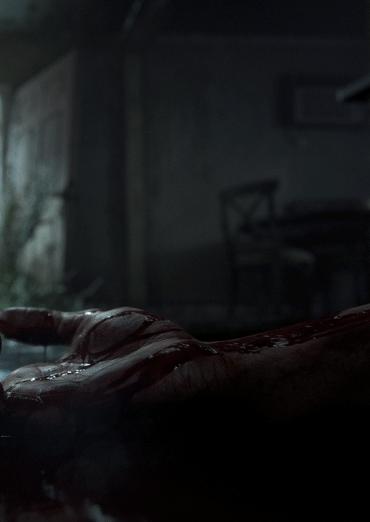

Imbued with a similarly offbeat humour as Starship Troopers and just as gleefully silly and violent, Helldivers 2 also happens to be a fantastic bug blasting co-op shooter, whether played with friends or strangers. It’s a thing of beauty.
Audio
8/10
Bombastic music, big explosions, zinging bullets, more explosions, chittering bugs, marauding robots. It all sounds perfectly marvelous.
Visuals
8/10
Kick ass armour and beautiful billowing capes, complemented by planet vistas engulfed in swirling fog and hordes of marauding enemies. Wonderful.
Playability
8/10
Robust and chunk third-person shooter mechanics, backed up by devastating Stratagems that you can call in to help you out in a pinch. Pure, unadulterated fun.
Delivery 8/10
A decent variety of mission objectives, as well as ample customisation and loadout options for your Helldiver. Thankfully, many of the early teething problems have now been ironed out too.
Version tested: PlayStation 5
Reviewed by: Brandon Sawyer








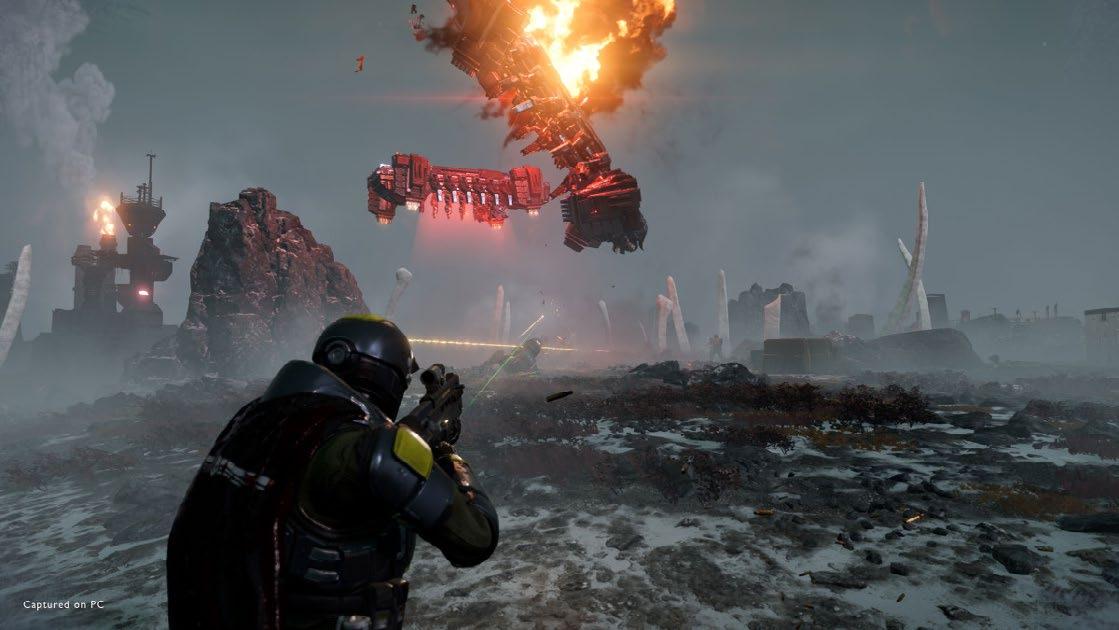


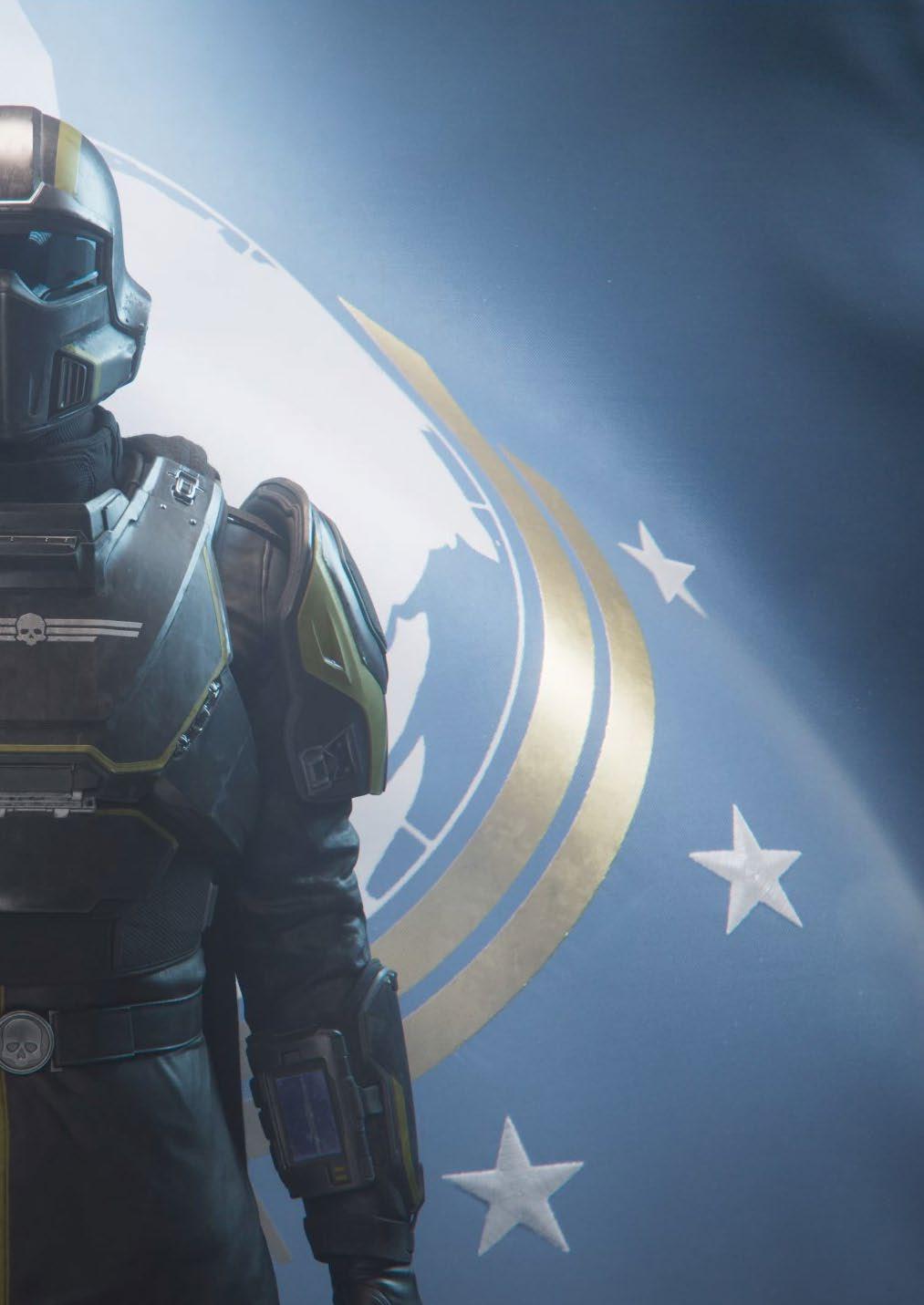
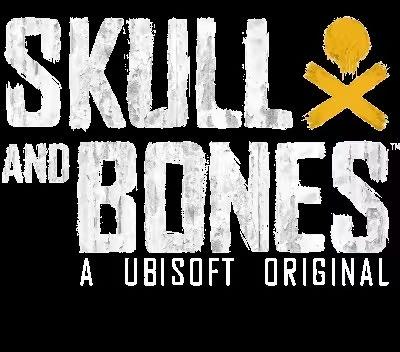
At last, through the doldrums comes Skull and Bones. The game has been drifting in the choppy lull of development limbo for about a decade. It began life as an offshoot of Assassin’s Creed IV: Black Flag, whose naval battles were a blast. That adventure, buoyed by gunpowder and stirred by salty wind, was drenched through with the piratical, to the point where its status as an Assassin’s Creed game was all but drowned. No such identity crossover here. I kept my eyes trained for any white hoods, for the stray glint of a hidden blade. Nothing. Skull and Bones is its own beast, a drugged-up Hydra, perhaps, its various heads unbothered to even bicker among themselves.
We have sailing, battling, crafting, plundering, completing contracts, and trading with other players. All of which rolls along in a dazed and lazy rhythm, and you wonder why it all falls short. You long for a true open-world swashbuckler, spiced with a rich and rumglugging mood, but you end up with a sandbox of damp and clumpy thrills, washed out with stretches of open sea. The action is set on the Indian Ocean, at an unspecified time in the 17th Century. An early voice-over informs us that we are in “the dawn of capitalism,” and that the world is being bruised and bullied by “corporations as mighty as nations,” known as the Compagnie. “With an iron first, they forge a path of tyranny and exploitation.” Incidentally,

the publisher and developer of Skull and Bones is Ubisoft, a humble family business of modest ambition, whose global network of studios presumably donate most of their profits to charitable causes.
Indeed, the cinematic introduction, replete with craning shots of ships and faraway lands, credits Ubisoft’s studios in Singapore, Belgrade, Berlin, Chengdu, Kyiv, Montreal, Mumbai, Paris, Pune, the Philippines, and Shanghai. In other words, we are in the dizzying realms of Triple-A development. Or, in the words of Ubisoft CEO Yves Guillemot, a “quadruple-A game.” The result, with so many cooks looming eagerly over the broth, is as you would expect not a dish that feels rejuvenated and enlivened by its worldly reach, rather a bland and shapeless course, with the juice strained away and the flavours blurring into one.
The plot begins with you, a pirate captain, getting blown to splinters by the British. From here, you patch the sails of your reputation until they once again fill and flutter with infamy. This process is, like many of Ubisoft’s games, a matter of administration. Slosh from A to B, hopefully with a hold full of goods; sell them; upgrade your ship; set objective markers; and, periodically, sink other ships. It hardly reeks of hot-blooded excitement, does it? In these worn routines, Ubisoft shaves away the romance of
Blackbeard and his ilk and emphasises the dull busywork, the sheer daily grind, of muscling the waves to your will. The combat is of the same swivel-and-fire kind that held sway back in Black Flag. Only, where that game had its sea legs and catered for landlubbers with a spread of city streets and clattering melees Skull and Bones is all water.
True, there is a compass of islands on which to drop anchor, but they are like stage sets: depthless boardwalks, populated by a stock troupe of NPCs with stick-on features, extending barely further inland than the beach. You create a custom hero, gazing at your reflection in a puddle – a perfect symbol for the stagnant story, with its wavering and murky motivations. What begins as a thirst for pirate fame soon ebbs into a quest to defog the vast map, slipping here and there into a mission to merely stay afloat. With no narrative tether, Skull and Bones falls back on the currents that have borne so much of Ubisoft’s recent back catalogue. No wonder it feels unmoored. After a string of hours, you’re left with a litany of chores, checking off item after item, listing on the tide.
Still, this is not without its consolations. For one thing, sailing is often a pleasure, with its quick blend of the placid and the tense. One moment you’re coasting through a calm expanse; the

next you’re met with a mountain range of breakers, whipped up by a storm, as if you had plunged nose-first into a furious cappuccino. Skull and Bones runs in Ubisoft’s Anvil engine, and the sights that are regularly churned forth warrant a look. The game doesn’t go for the roiling colour of the oceans in Sea of Thieves, which are brushed with a cartoon brightness. Instead, we get beauty of a more traditional flavour: the breach and twist of humpback whales, fingers of rock that poke through the mist and pull it away like a curtain, revealing unseen lands. it’s easy to tune out and let your fellow-players float by, like toys passing in a giant tub.
You could spend an afternoon in this pleasant in-between. In these seafaring moments, it’s as though we were watching Ubisoft do The Legend of Zelda: The Wind Waker. In the end, that is exactly the problem with Skull and Bones: those innocent joys of movement and discovery, which Nintendo so perfectly corked, are categorised and stencilled onto your HUD. As with a lot of the developer’s games, you feel as if they could almost play themselves, while you rest a hand on the rudder and watch. Why resist, when the ocean and its myriad wonders have been conquered and prepared for you by Ubisoft? Both the fatal shortfall and the light allure of Skull and Bones is laid out perfectly on the menu screen: “Press any button to rule the seas,” it says.


Skull and Bones is a dull exercise in checklist progression, spiced here and there with some impressive sailing.
6/10
Audio 7/10
Tom Holkenborg summons a suitably piratical score, and the sounds of the sea are all present and correct.
Visuals 7/10
Some arresting sights are spread throughout, but some of the character models are quite ugly.
Playability 5/10
A lot of Skull and Bones is boring checklist work, peppered here and there with some pleasant sailing. Mainly, it’s dull.
Delivery 5/10
There is a lot here to keep you busy, as Skull and Bones is a live-service beast. Whether you will want to keep playing is another matter.

Version tested: Xbox Series X
Reviewed by: Brandon Sawyer










Rise of the Rōnin kicks off in 1858, in Yokohama. It’s a bustling port city, then as now, and our hero, a nameless, mostly mute wanderer, furiously adept with a blade alights there at a moment of turbid change. We are in the Bakumatsu period, wherein Japan was shaking off the tail end of the Tokugawa shogunate and eyeing up its chances as an empire. Hence the presence of the British, with their jackets of beaming, telephone-box red; and the American ships at the docks, which squat happily under a haze of dark smoke. It’s a lovely clash of images: is the future calling with the promise of bright things, or is it polluted, a blocked forecast that fouls up a glorious past?
Yokohama is the perfect place to begin a story like this. The developer, Team Ninja, taps into the place’s history not just its real history but its role in games, hosting characters who yearn to be cut adrift. Jump forward a century and a half, and you will find Ichiban Kasuga kicking around the same town in Yakuza: Like a Dragon. Meanwhile, R4: Ridge Racer Type 4, set at the turn of the millennium, had you slide dreamily through its harbours, coasting over the world as it spun on and on. Here, our lone warrior is similarly unmoored, racing from ridge to ridge in the surrounding countryside, as you cut a path through your enemies on your way to personal redemption.
I won’t bore you with the details of that quest, partly because they escape me and partly because the politics of the region thrive on clutter and complication. This is an open-world action-RPG in the mould of an old Assassin’s Creed: three cities Yokohama, Edo, Kyoto girded by greenery and populated with schemers. The tale packs a factual punch. We get real figures, such as Shoin Yoshida, Jules Brunet,
Ii Naosuke and Commodore Matthew C. Perry, whose naval cannons once held Japan to ransom. But Team Ninja, like Ubisoft, knows when to pull that punch. You don’t buy the idea that it all went down quite like this, but the notion of a land riven by quarrelling factions and stalled by the question of how it sees itself, feels true. One mission is to gain entry to an American consulate, the better to retrieve a bottle of bourbon. Whether such tasks were, indeed, undertaken by elite ninjas is less important than the sense of an entente between nations being oiled and warmed by trivialities – of big matters hinging on the little things. Who needs history taken neat?
The same dream logic whips through the fights, each of which is a wet mess of cropped limbs. At certain points, you meet someone important, cover the floor in puddles of their blood, only to go drinking with them minutes later, all animosity blown away like gunsmoke. It’s as if the fate of Japan were being chopped out by children with toy swords. For Team Ninja, gore has always been less a physical fact than a mood-enhancer like one of those red light bulbs, meant to stoke an erotic glow but easily shut off when the urge passes.
For years, the studio has specialised in brutal games, but lately it’s as though it wants to hack its way toward a grander meaning. When Ninja Gaiden came out, in 2004, its director, Tomonobu Itagaki, delivered a matchless action spectacle, steeped in human pulp; depravity was a tic of style, a calling card of both director and genre. But in recent games like Nioh and Wo Long: Fallen Dynasty, nastiness is a lingua franca, useful in the forging of nations. The latter took place during the Yellow Turban Rebellion, at the dawn of China’s Three Kingdoms era; while
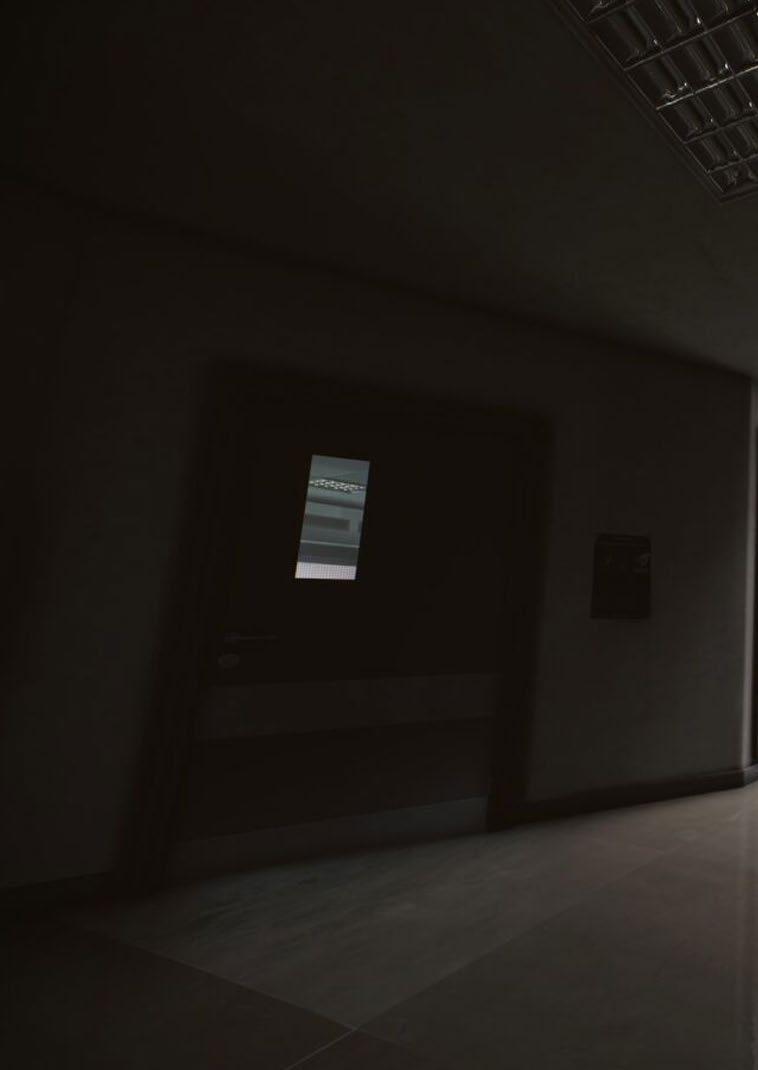

Nioh was set two centuries before the new game, as the Sengoku period was sputtering out. Even if violence is shaken until it reaches a rococo spray, Team Ninja seems to suggest, it will foam back down and make way for the daily grind for regular folk and dull governance.
If Rise of the Rōnin never gets past the problem of combat being more fun than anything else, it isn’t for want of effort. There is a roving hunger in the design here. Check out the chance encounters, the gambling dens, dojos, and pleasure districts. There are stray cats to find and pet, and, in a lovely modernist touch, photos to take. Our hero meets an inventor, who bestows not just a mechanical glider but a camera. These photo ops are simple and effortless. Go there, snap that but they pull the game into a wide focus. It’s another version of the Animus: a machine that plugs into another time and place, syncing you with far-off sights until it all clicks.
After a weary glance at Rise of the Rōnin, you could be forgiven for wrinkling your nose. Here comes another vast epic, demanding dozens of hours of your narrative loyalty, and to top it off the fights resemble FromSoftware gauntlets – guaranteed to result in freshly screamed pillows. But glance again. Those bouts, while thickly clumped with mechanics, aren’t so challenging, and there are difficult options to boot. This is a game that wants you for the long haul, maybe the most mass-market work this studio has produced. The only caveat I would offer is that you have to carve through the first hour as you would a rock face. Team Ninja
games, like Capcom’s Monster Hunter adventures, come bundled with required reading; having you slip without friction into a HUD-free world isn’t an art they care to master. Hence the tutorials, mustered in a menu dauntingly titled “Encyclopaedia.”
Still, the reward for this initial knee-scrape is rich and broad. The game politely asks that we suspend our belief, as it were, in favour of an outsized payoff. Perhaps its biggest shortfall is the sheer tonnage of diversions. There are friendships to maintain, romances to bloom, and ornaments with which to decorate your personal bachelor pad so much so that the small matter of war, rumbling toward the characters like a murky wave, seems to crash softly in the background. Like a Dragon: Infinite Wealth was also perilously packed with optional extras; there was so much to pull you from the path of the plot that you all but lost sight of it completely. When wealth is infinite, are the basic currencies of pace and play not devalued?
In any event, Rise of the Rōnin is worth your time. Over the last few outings, Team Ninja has tried on styles; first it tricked out the Dark Souls formula, now it goes open world. What strikes you about the new game is not that it seems the work of a developer cashing in on a popular genre, but as the product of a yearslong search. It may in the end be too large, and it may slip into shapelessness at times, but it takes up a fitting theme of a country arguing about what it wants to be and grounds it close to home. Enjoy the argument




A huge open-world RPG, with brutal combat and an intriguing historical setting. Team Ninja has a winner.
8/10
Audio 8/10
Inon Zur provides a suitably grand composition to fit the time and place nicely, with some stirring strings. Plus, good sword clangs.
Visuals
8/10
A vibrant and visually arresting setting, with three cities and the surrounding countryside laid out beautifully.
Playability
8/10
Punchy, savage FromSoftware-inspired combat, with much less of a challenge, and a huge world full of distraction.
Delivery 8/10
It’s a long game, and at times the diversions throw off the pace, but this is a confident, assured world with plenty to see and do.
Version tested: PlayStation 5

Reviewed by: Brandon Sawyer







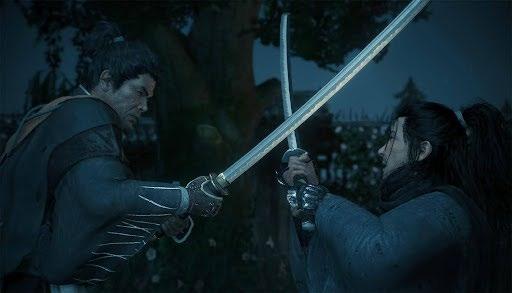


I like my name, but it’s not as good as ‘Cutter Slade’, the name of the protagonist in Outcast: A New Beginning, the long, long, long-awaited sequel to 1999’s Outcast, released only for PC. But seriously, who calls their kid Cutter? Apologies to anyone named Cutter out there, but I’m jealous of your excellent name. Slade is the wise-cracking saviour of the Talan people, dubbed ‘Ulakai’ by the natives of the planet Adelpha, a verdant expanse that’s been invaded, colonised, and exploited by human interlopers. So far, so Avatar. Bringing guns and a nifty jetpack to the party, Slade takes the fight to the militarised WFA, blasting droids and hostile fauna alike, in a bid to defend the Talan.
An open world third-person adventure, like its beloved forebear, Outcast: A New Beginning is, as its suffix suggests, a clean slate. It turns out there’s a good reason it’s lost the ‘2’ in its title this is, for all intents and purposes, a reboot. Cutter finds himself surfacing in Adelpha with little more than the clothes on his back, forced to raid WFA bases to acquire his signature jetpack and arsenal, as well as that visor he always sports for scanning the landscape. It seems that no prior knowledge of the series’ roots is required. What follows is essentially a procession of errands, carried out at the behest of the various tribal Talan folk inhabiting the small villages dotted across the planet.
These invariably revolve around collecting and depositing certain items in a stockpile, escorting or luring some creature or other, and battling the robotic forces of your human aggressors. Cutter’s skills as an ex-Navy Seal mean that the nuts and bolts of the third-person

shooter action is perfectly robust, wielding guns and a fancy deployable energy shield to defend against enemy projectiles. But zipping around using Cutter’s jetpack is undoubtedly one of the game’s more pleasurable activities.
Portals known as ‘Daokas’ enable you to fast travel between settlements and to certain regions in the wilderness that lies in between, should you grow weary of jetpacking hither and yon. Like every open world adventure, there are extraneous activities to engage in, like cleaning up diseased ‘Gork Eruption’ nests, unlocking ancient temples harbouring useful baubles, snatching Outposts from the clutches of the WFA, and, most annoying of all, following trails of light to Essence Shrines and Orym Chests.
You can also pick plants and gather other resources for crafting, while certain minerals (Helidium) serve as ammo for Slade’s guns, and others can be invested in new jetpack and combat abilities. The jetpack starts out as a boost jump, before evolving into something resembling an actual jetpack with upgrades, while guns can be fitted with modules like homing bullets, explosive sticky mines, and other gubbins to make them more effective and interesting. Unfortunately, none of this is enough to detract from a messy story and poorly structured missions a lot of A New Beginning is spent suffering through fairly bland expository dialogue, which requires an exhaustive glossary to translate the jargon spouted by your Talan pals. Often, it can be a right load of zort.
For anyone who’s played the original Outcast,
this will feel like very familiar territory. A New Beginning is something of a retread. Quests, meanwhile, as they primarily involve fetching, escorting, or killing some such, very quickly grow rather tiresome and repetitive. The somewhat haphazard way in which missions are cued up can also lead you to being somewhere you’re not supposed to be until much later, and, in some cases, a conversation referring to something you haven’t picked up yet can cause confusion. Even Cutter’s dad joke quips can’t compensate, although the combat and traversal does prove to be a saving grace.
There are some things that Outcast: A New Beginning gets right, and fans of the original game will no doubt enjoy getting reacquainted with Cutter Slade and his wry sense of humour. Incidentally, a sense of humour is necessary, when you take into consideration that one of your main objectives is to organise a mass sex

party to ensure the Talans don’t go extinct.
No, really. That’s not the new Outcast game’s biggest problem, though - the dearth of mission variety is. A lot of what’s here is thankless busywork, and after several hours of being sent from pillar to post, flapping your jaw with needy Talans, before embarking upon yet another fetch quest or whatever, your patience will likely be stretched to breaking point.
The planet of Adelpha might be a lovingly rendered green and fertile land, and exploring it is often a joy, but repetitious gameplay and a flabby, under-baked story that wastes far too much time on menial tasks, rather than getting down to business, put the brakes on the action. Not without merit, Outcast: A New Beginning does have its moments, but it’s leaden pace and litany of dull missions make this a missed opportunity.


Cutter Slade’s long-awaited return has flashes of jetpack-fuelled brilliance, but tiresome missions and a story that fails to engage ensure that playing Outcast: A New Beginning quickly develops into something of a chore.
6/10
Audio
7/10
A New Beginning’s orchestral score is very good, and actor Luke Roberts gives good snark as protagonist Cutter Slade.
Visuals
6/10
The game’s alien world of Adelpha conjures some really lovely sights, but ropey character models and slight performance issues spoil the party.
Playability
7/10
Cutter’s jetpack is never not fun, while the core shooter mechanics are nice and solid. Repetitious mission objectives are not fun, however.
Delivery
5/10
Long loading times when you die are a pain and there’s a dearth of variety when it comes to quests and activities. The story also fails to engage.

Version tested: Xbox Series X
Reviewed by: Brandon Sawyer









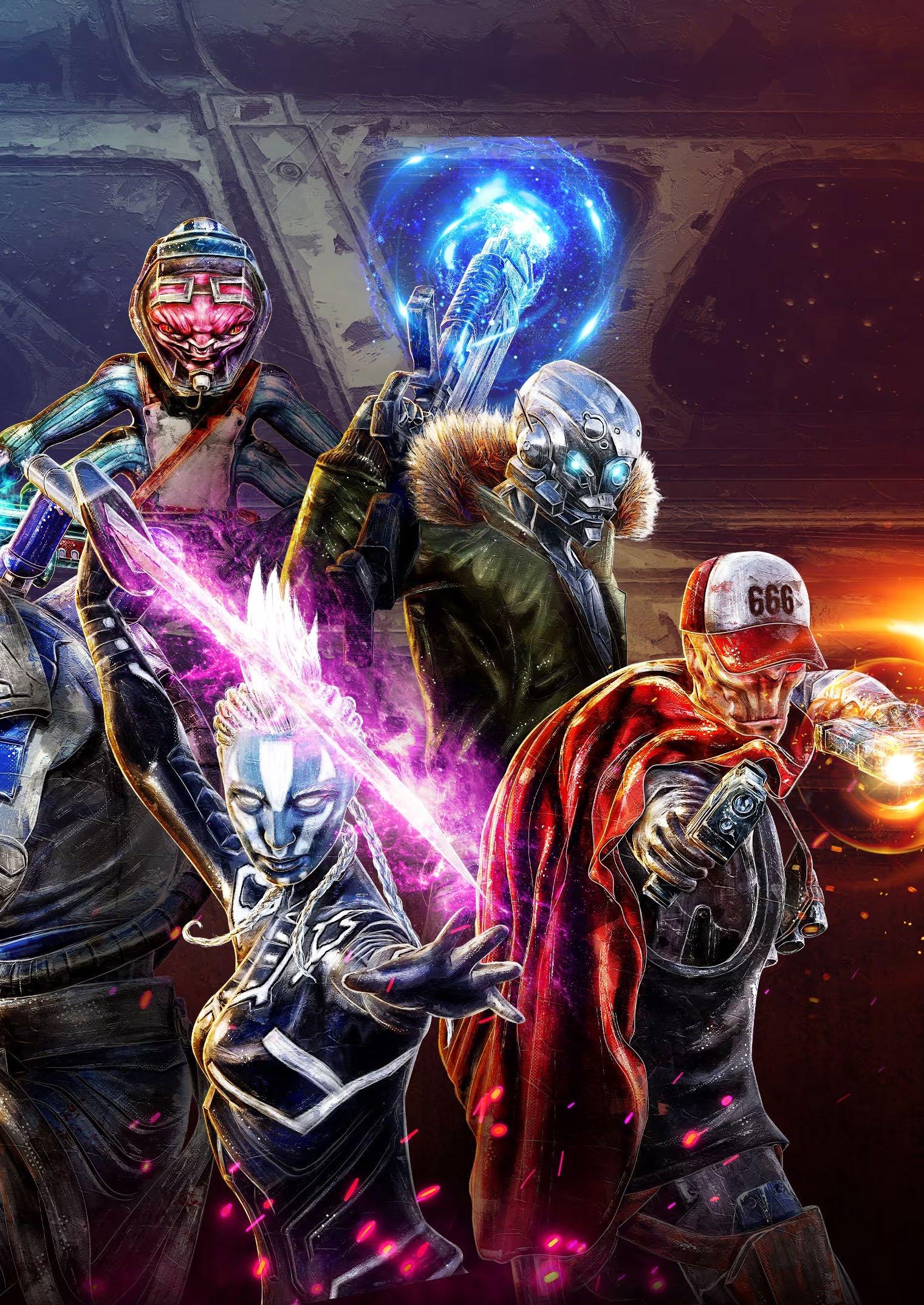



“Life to the living, death to the dead” goes the Banishers’ mantra, which effectively tells you all you need to know about the new game from developer Don’t Nod Entertainment. Okay, perhaps not everything, like how Banishers: Ghosts of New Eden shares more in common with the studio’s forays into action, like Remember Me and Vampyr, and to a lesser extent, Life is Strange and Twin Mirror. This is best described as a mash up of everything Don’t Nod has done to date, juggling combat, metroidvania exploration, and more than a modicum of meaningful choice and consequence. There’s an awful lot of interesting stuff here, and it all hangs together rather nicely.
Banishers opens with doe-eyed lovers Red mac Raith and Antea Duarte sharing their dreams“I dreamed of clouds,” Red mutters wistfully. “I dreamed of the abyss,” Antea retorts ominously. Way to kill a mood. Landing in New England in 1695, “the greatest Banishers” the narrator ever knew are enlisted to lift the gloom plaguing the village of New Eden, and, from the outset, said gloom hangs thick in the air. Before long, Antea succumbs to the malevolent ‘Nightmare’ spectre that’s turned New Eden from a flourishing little coastal settlement into a right shithole. Fatally wounded in battle, Antea joins the ranks of the very apparitions she used to hunt (that’s not a spoiler, just to be clear – her death happens to be integral to the plot and the gameplay), and, as Red, you must venture forth into the great green yonder. The twist here is that Antea lives on as your ghostly companion, effectively taking residence inside the gruff Scottish ghost hunter, popping out to fight or lend a hand whenever it’s needed, with the touch of a button.
Therein lies the crux of Banishers’ gameplay – as a ghost, Antea provides helpful combat support, giving hostile spectres a good
punching. She can also see things Red can’t using her ‘Unveil’ ability; zip to otherwise out of reach places (via designated points) with her ‘Leap’ skill; cause area-of-effect damage and smash through destructible obstacles with an aggressive ‘Outburst’; cause pathblocking corrupted vines to wither; or web up enemies by unleashing her ‘Ensnare’ skill, and more besides. All of this keeps things varied as you journey across the game’s open world, on your way back to New Eden for a second showdown with the Nightmare, hopefully having sufficiently levelled up and honed your ghost-busting prowess.
Weapons and gear can be upgraded at campfire rest points using the various materials and resources you’ll gather out in the world, while levelling up grants points to enhance your attributes on the various skill trees connected to Antea’s ghostly abilities. There’s a good amount of depth at play in Ghosts of New Eden, with all manner of stats to consider, although we quickly found and settled upon a core set of weapons, rings, bracelets, and whatnot, and ended up with a solid build we upgraded with all of the resources we could muster. Obviously, the better your gear, the better your chances in a fight – you can increase the number of health-replenishing decoctions Red has at his disposal, for instance, or arm Antea with a trinket that makes each strike she lands deal exponentially greater damage, as long as she doesn’t get hit. Blocks, dodges, and evasive rolls help in that department.
In combat, Red wields his sword and torch against restless spectres and shambling corpses known as ‘Bonewalkers’. There are boss battles against Scourges and a fair few tricky encounters against hordes of enemies to contend with at every turn, and there is a decent set of combat mechanics to grapple with, albeit with a fairly woolly parry and a
slight lack of finesse overall. Banishers isn’t the most polished game, but as a single-player action RPG experience it proves enormously compelling. Outside of the main story, Haunting Cases present further intrigue, as some poor tortured soul must be laid to rest. A few are haunted by loved ones, while others might be possessed. One such case involves a man living with his dead wife and her former lover, who also happens to be his late brother, as they take up spectral residence in his head.
There are numerous ruddy-faced folk living with similar problems amid the daily drudgery of life in 1695, and only by severing the ties between the worlds of the living and the dead is there any hope of bringing some serenity to the New World. As for the actual story, you’ll ultimately have to decide whether to grant Antea her Ascent, releasing her from the corporeal realm, or attempt to bring her back from the dead, which means placing blame upon people,

rending their souls from their body. Some deserve it, some don’t, but the choice ultimately lies with you. You can absolve everyone if you like, or blame them all, relieving them of their soul and life force – the latter is the only way to bring back Antea.
Therein lies the most compelling part of Banishers: Ghosts of New Eden, the primary aspect that propels you from one waypoint to the next. The combat is good but not great, the frame rate is prone to slight choppiness now and again, but there’s something about Don’t Nod’s spirited adventure that keeps you coming back for more. Likeable protagonists mixed up and superstitious settlers, a plague-ridden but quite beautiful world, and a smattering of neat RPG elements combine to make Banishers an interesting and engaging experience. It’s also that rarest of things these days: a really good mid-tier game with a lot of nice ideas.


A fine AA open world action RPG with a compelling story and decent combat, Banishers: Ghosts of New Eden might be one of the best games you’ve never heard of. It deserves more than a ghost of a chance.
Audio
7/10
A lack of atmospheric sound seems odd at times, but the voice work is decent (notably Red and Antea’s VO) and the ghostly sounds are suitably macabre.
Visuals
8/10
Banishers’ slice of 17th Century North America is gloomy and oppressive in places, verdant and bucolic in others. It looks very nice indeed.
Playability
7/10
The combat isn’t the tightest, but the various mechanics and systems are well thought out and executed. Crucially, you’ll want to keep playing and pushing forward.
Delivery
8/10
A fairly expansive world dotted with campfire fast travel points and numerous secrets to uncover. The RPG elements are good, too, but the frame rate is prone to occasional chop.

Version tested: Xbox Series X
Reviewed by: Brandon Sawyer


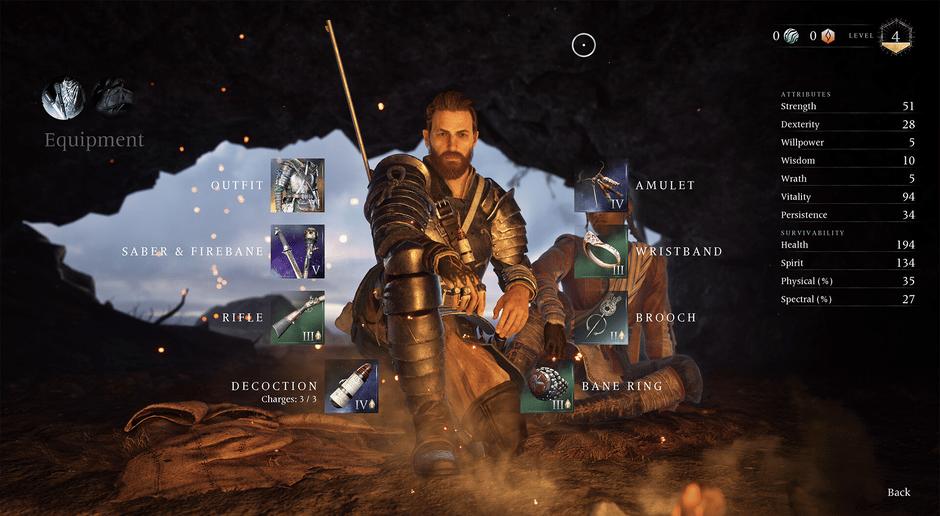







The term ‘cult hit’ gets bandied around all too often these days, but if there’s ever a franchise worthy of that label, it’s Dragon’s Dogma, a franchise that has shifted more than seven million copies. Yes, seven million! While technically it wasn’t the most functional of debut outings, there was a charm to the 2012 original that seemingly garnered the attention of the masses. So much so that the first Dragon’s Dogma not only earned a 2017 remaster but thankfully we’ve now been blessed with a sequel, one that has all the charm of the original, but with a bit more swagger. The potential is strong in this one.
In Dragon’s Dogma 2, you play as the Arisen, a mysterious figure who’s been touched by a ferocious dragon and thrown head first into a chilling prophecy. As the Arisen, you are effectively the leader of a faction of warriors known as Pawns, and together, you’ll battle against mythical creatures in a series of diverse biomes, trying to not only fulfil the prophecy laid out before you, but to get to the bottom of the Godsway plot. While perfectly entertaining, the quests themselves in Dragon’s Dogma 2 ultimately become an excuse to explore the game’s expansive game world.
See, that’s the thing about Dragon’s Dogma 2. Mechanically, for the most part, the game is spot on. The different classes you can use and switch between regularly without feeling disadvantaged, and the fact that you can build out your squad with other player’s Pawns combine to elevate Dragon’s Dogma 2’s combat to an impressive level. Throw in the fact you

can use aspects of the open-world in your quest to take down giant foes, while climbing on their backs, to jab your sword in their eye(s), well, that’s what makes Dragon’s Dogma 2 utterly fantastic. Sure, the melee combat could do with some kind of lock-on system, as it’s a touch unwieldy without it, but other than that, I have very few complaints about the minute-tominute gameplay in Capcom’s DD follow-up. As an experience in that regard, Dragon’s Dogma 2 is a brilliant fantasy adventure simulator.
Thanks to how the game is structured, the fact you can change classes whenever you wish, and not feel underpowered as a result, is a definite selling point. In fact, in the end, I had loadouts for different classes, so I was able to change my style of play every few hours, just to keep things fresh. Throw in a load of crafting mechanics, special abilities to unlock, and some truly interesting side quests, and there’s as much to do outside of the main content of the game as there on the critical path. So much so, we spent tens of hours in our playthrough just exploring, without a care in the world.
Where Dragon’s Dogma 2 is perhaps a touch disappointing, is in how certain aspects of the game are communicated. Some of the main quests are just straight up confusing, and in regard to the quests in and around the city hubs, the less said about them, the better. One such example encompasses what are effectively stealth missions… in a game with no sneaking mechanics. If you get seen, you are beaten and taken to jail. That’s it. Thankfully, these quests and moments are few and far between, but
still stick out as an utterly bizarre and baffling design decision.
When it comes to some of the main and side quests, too, some of their solutions are hugely illogical. The perfect example of this is to be found in a side quest where in order to conclude it, you have to use the grab button to apprehend a nun, who is just literally standing there - it never dawned on us to just grab someone to conclude a side quest and it’s remarkably unclear. The solutions to that particular quest, and some of Dragon’s Dogma 2’s other quests, are seemingly more luck than judgement at times. To say that some of them require complete guesswork is the understatement of the century.
Some of the main story missions can be a bit disjointed at times too. On numerous occasions I found myself in weird situations that I could only solve through sheer perseverance and banging my head against the wall until something worked. The thing is these mildly confusing and bewildering aspects of the game pale in comparison to the actual meat of the game: the exploration. The truth is much of the fun in Dragon’s Dogma

2 comes from said exploration and the mystery as to what lies at the end of the beaten path. Whether it’s a new boss, a nice piece of loot, or if you’ve ventured forth through a certain cave system up to the shrine at the top of a mountain - there are pleasant surprises to be discovered around every corner. Granted, a lot of your time will be spent traversing the massive open-world, just getting from A to B, especially as fast-travelling is ridiculously expensive, but you’ll still have fun along the way. However, I would say that Dragon’s Dogma 2 requires a pretty insane amount of patience. If you have that in your locker, you’re going to absolutely adore Capcom’s follow-up.
That’s the thing with Dragon’ Dogma 2 - despite all of its various foibles and quirks, the game itself has numerous moments of brilliance. I, for one, will never forget the epic battle that ensued on a desert path between one gryphon, two cyclops and what seemed like a never ending onslaught of goblins and harpies. It was phenomenal. So, if you can get past the jankiness in the game’s quests, Dragon’s Dogma 2 proves to be an unforgettable, immensely rewarding experience.


Dragon’s Dogma 2 is a fine follow up to the cult classic original. With some ingenious gameplay and a captivating open-world, it’s a stunning fantasy exploration simulator. If some of the main story missions had better structure, and the game didn’t feel so disjointed at times, this could easily be in the conversation to be crowned one of the best action-RPGs of this generation. It’s still bloody good, despite that.
7/10
The voice acting is okay, and while the original score is excellent, it could definitely do with some more ambient music to drown out the moments of silence. Also, how are silent protagonists still a thing in 2024?
Visuals
9/10
The open-world is breathtaking at times, and its diversity and scope is one of the game’s selling points. From a character model perspective, though, it’s nothing to write home about.
8/10
With plenty of classes to choose from, there’s something for everyone here. Plus, there’s nothing more satisfying than climbing up the back of a 30-foot beast and jabbing it in the throat or eye(s). So, so satisfying.
8/10
The open-world is a delight to explore and aside from some wonky main missions, the story is a great excuse to wander around and get lost in the intrigue.

Version tested: PlayStation 5
Reviewed by: Brandon Sawyer



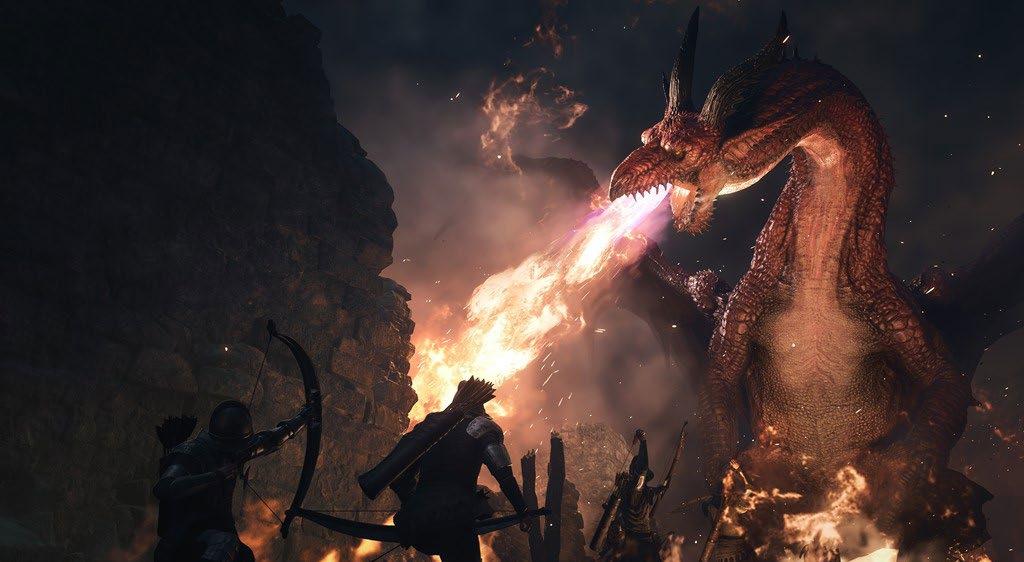







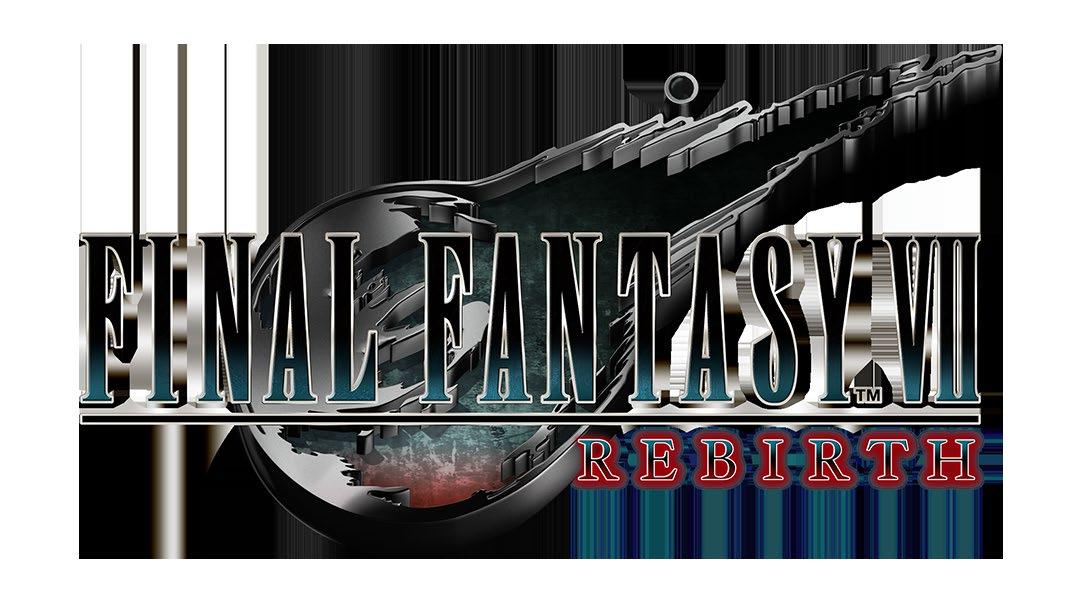
No remake project has ever been as sprawling or as ambitious as that of Final Fantasy VII. Less a remake than a huge multi-game endeavour, this has taken what was one game and turned it into three. It’s a hell of an undertaking. And what’s remarkable is that it doesn’t feel remotely cynical or unnecessary like Final Fantasy VII Remake before it, sequel Final Fantasy VII Rebirth is imbued with a clear passion for the source material, but this goes way above and beyond the first game in terms of scope. Rebirth is where we finally get to venture out into the open world, and, as such, it’s a dizzyingly colossal game. Properly massive it is. Happily, it’s stellar stuff, too.
Where to start with something so huge, dense, and detailed? First off, Rebirth is markedly less linear than Remake, covering a large portion of Final Fantasy VII’s narrative across a number of open-world regions. From the verdant Grasslands to the craggy Junon region and beyond, you’ll visit a number of bustling towns and villages by chocobo, taking on side quests, gathering ‘World Intel’ for Chadley, and challenging players at addictive card game Queen’s Blood. The open world has Ubisoft towers to climb pinging out a load of new point-of-interest markers across the map upon activation when you’re on the way to the next main objective, don’t be surprised if you’re distracted by a shrine, lifespring, a variant

species of fiend to slay, or some other relic or side quest looming tantalisingly off-piste.
Final Fantasy VII Rebirth almost rivals Like a Dragon: Infinite Wealth for its selection of minigames Queen’s Blood is but the tip of an iceberg that includes Chocobo Racing, a polygonal 3D Brawler using classic FF VII character models, a tactical robot-based battle in ‘Gears & Gambits’, and... the list goes on. You could lose countless hours to Queen’s Blood alone, collecting cards and building your deck. Side quests, meanwhile, seldom feel superfluous, boasting their own bit of story to add to the overarching adventure. It’s hard not to get completely swept up in the cornucopia of diversions and optional quests scattered all over the game’s various expanses, and, if I haven’t already drilled this point home enough, it all feels, for the most part, entirely worthwhile.
It also helps that Rebirth’s combat is exemplary. Even if you’re not all that keen on real-time, nonturn-based battling, there’s no denying that the combat mechanics remain tight, responsive, positioned on just the right side of challenging without veering towards frustration though, it must be said, the nuts and bolts of the combat hasn’t undergone any seismic, sweeping changes. There’s more than ample depth, with weapons and materia determining the Abilities and Spells you can wield, while tougher
encounters demand careful strategy and tactics perhaps a lot more so than was necessary in Remake. Throw in synergy abilities enabling you to team up with your allies, and getting into scuffles in the FF VII Remake follow-up proves consistently gratifying.
There’s a lot more story in here, to boot, fleshing out the central cast while adding new faces who bring further texture to proceedings. And to think, by the time the credits roll, we’re still on disc one of three, the 1997 original PS1 release, of course, famously coming on a trio of CDs. It’s quite something how Square Enix manages to walk a line between the nostalgic and the new – this is, at its heart, that same Final Fantasy you might have grown obsessed with all those years ago; just a lot bigger and a lot prettier, crammed to the gills with quests and secrets to uncover. Exploring it all is never anything less than an unbridled joy.
Cloud is joined once more by Aerith, Tifa, and Barret, but this time Red XIII joins in fully playable form, and Yuffie tags along having enjoyed the spotlight in Final Fantasy VII Episode INTERmission. Cait Sith makes his playable debut too, using his megaphone while riding a big fluffy moogle mount – he’s every bit as weird as he was twenty-seven years ago. Rebirth does more than just lay the groundwork for the third and final chapter, an outstanding game in its own right, succeeding purely on its

own merits. You don’t need to have played Remake to enjoy Rebirth, although you probably should, and maybe play Crisis Core: Final Fantasy VII -Reunion- while you’re at it. The whole FFVII saga has become a rather complex tapestry.
Final Fantasy VII Remake was an incredible achievement, taking what was but a few hours from the original, and spinning it out into a sensational 30-40 hour caper. Square Enix repeats the trick here, though it covers a lot more ground, heading to classic locations like Corel, Gongaga, Cosmo Canyon, and the spectacular Gold Saucer. Each is its own eyewateringly massive open world to explore, and each even has its own chocobo unique to that region, with its own traversal abilities. Who doesn’t want to ride their chocobo across bodies of water on a jet stream of water, or glide gracefully through the air?
What’s truly special about FFVII Rebirth is that it has the capacity to surprise even the most ardent FF VII aficionado. Cloud’s continuing quest to track down Sephiroth is a hugely compelling one, but it’s the richness and detail present in the game’s world that will coax you in and keep you rapt from beginning to end. Remake was great, but Final Fantasy VII Rebirth is even greater. We can only imagine what awaits in that last chapter a few years from now. It’s going to be a long, long wait.


Massively engaging from its first moment to its epic last scene, Final Fantasy VII Rebirth is unlike any other remake out there. Not just grand in scale and scope, this is also a deep and involving RPG that’s less a chapter in a wider saga, more a sprawling adventure that stands on its own. A fantastic, bravura piece of work.
9/10
The reworked arrangements of memorable tunes are wonderful, while the voice acting is superb. Something for the nostalgic and newcomer alike. Splendid stuff.
9/10
Save for some very minor pop-in, Final Fantasy VII Rebirth looks stunning, rendering its sights in rich, intricate detail. Given its immense scale, Rebirth is an astonishingly attractive game.
9/10
Did you enjoy FF VII Remake? Then you’ll be equally enamoured with Rebirth, which builds upon the combat mechanics of the previous game, while offering a plethora of new things to explore. And it’s all brilliant.
Delivery
9/10
If you’re mainlining the story then you’re looking at a solid 30-40 hours. Factor in all of the side quests and various secrets to discover, and you’re getting closer to 60-80 hours.
Version tested: PlayStation 5

Reviewed by: Brandon Sawyer









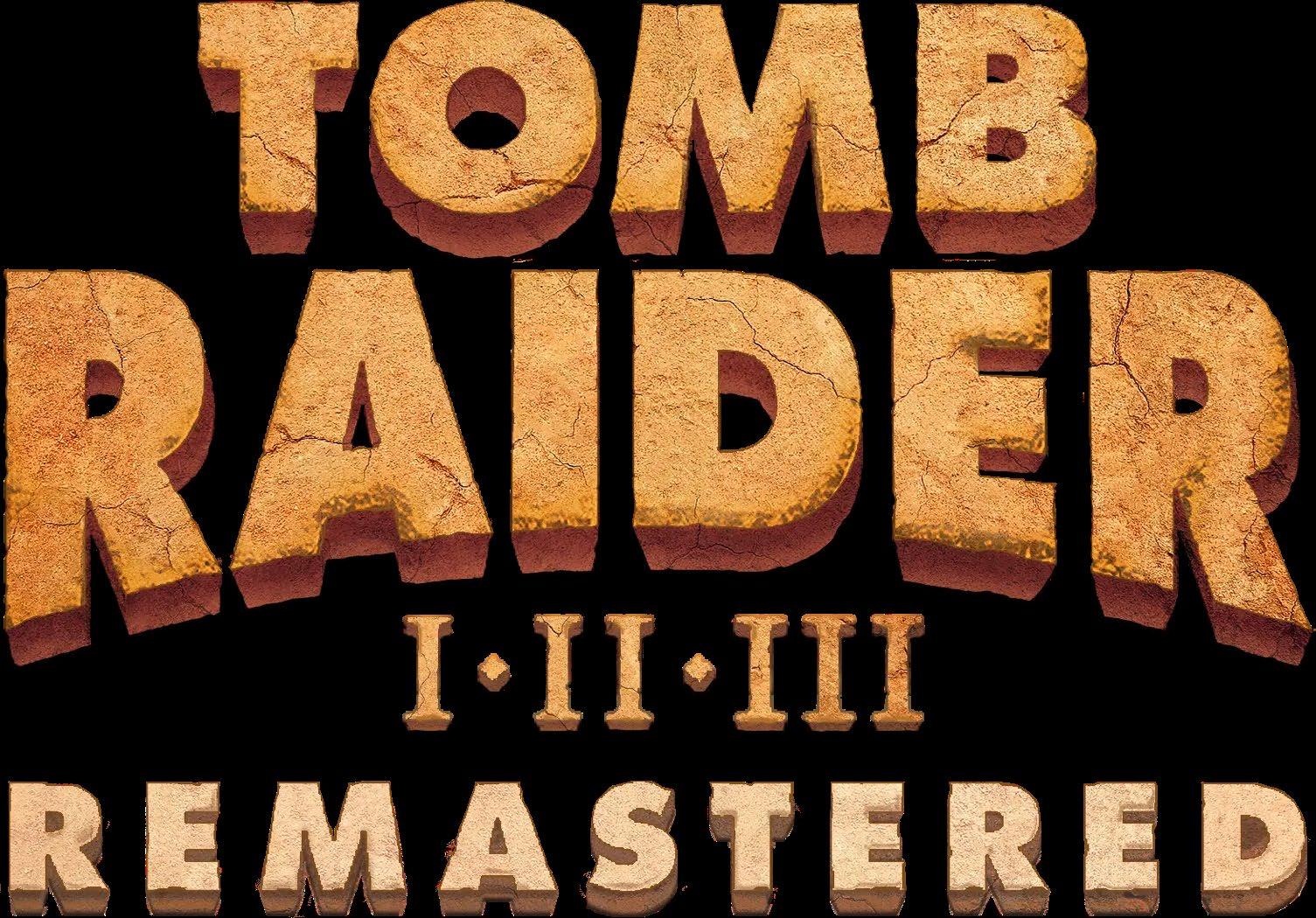
I have impeccable Tomb Raider credentials, having played and completed every entry in the series, yet I don’t remember the original games being quite this challenging. The first three Tomb Raider games. Tomb Raider I-III Remastered offers a golden opportunity to revisit those halcyon days, although it does prove the old adage, that you can’t go home again. These are old games, and they feel old. It’s nostalgia in the truest sense pain at returning to something from the past.
Starting where it all began with 1996’s original Tomb Raider, you can immediately see why it seemed so revolutionary at the time. Few games managed to muster the same kind of atmosphere that pervades Lara Croft’s first outing. The moment you entered that cavernous chamber and got set upon by wolves, it became clear that developer Core Design had created something really special, and while now its polygonal textured landscape and characters may look enormously crude, back then it was a big deal. A fully realised 3D world you could freely explore, as long as you could manage to fend off the marauding wildlife using Lara’s pistols, shotgun, magnums, or uzis.
Updating a game that lives so vividly in the memory, and is still a benchmark for threedimensional adventuring, must have proved immensely difficult for remastering specialists Aspyr, but the studio has done a pretty stellar job in punching up the visuals. All three games
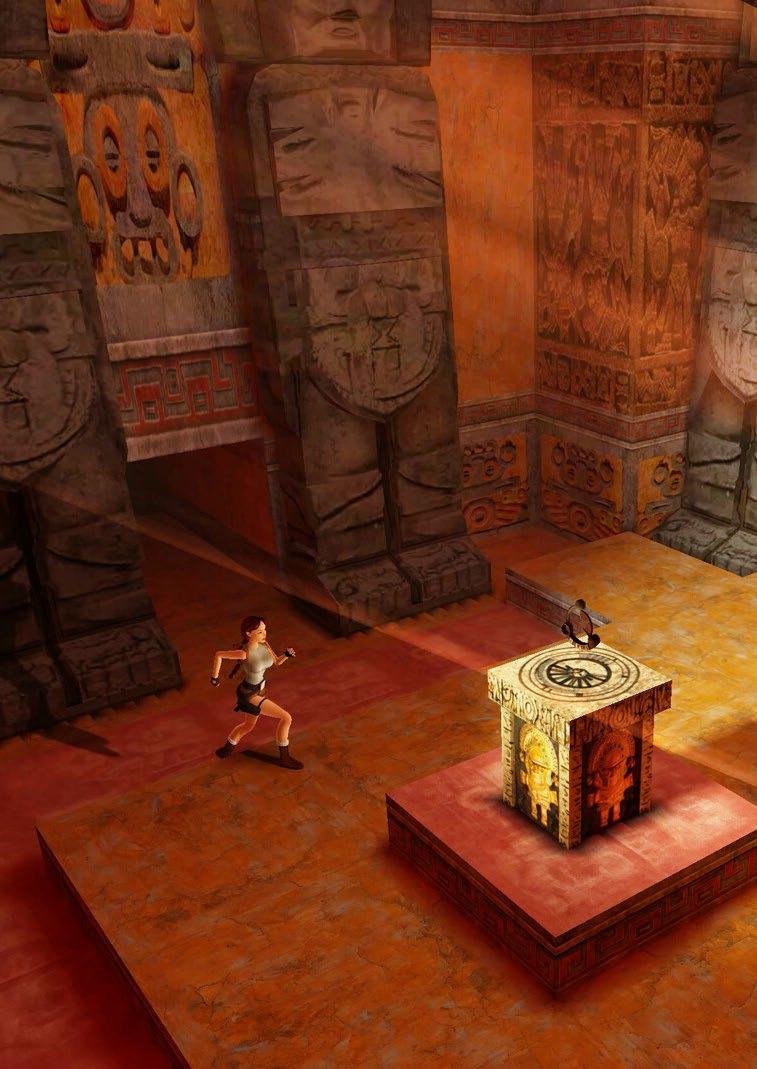
retain their essence Aspyr’s modern high-res graphics look great, lovingly layered on top of the original, and, like the best remasters, you can flip back and forth between those shiny new graphics and the classic visuals, which have also been given a spruce up. If you can’t work the old ‘tank’ controls anymore, there are modern controls, too, making movement and traversal much smoother. But for a game that demands precision platforming, the modern controls can see you missing many jumps.
It’s already tough enough trying to traverse Tomb Raider’s vertiginous catacombs, temples, mountains and other complex terrain without the controls getting in the way, but no amount of tinkering on Aspyr’s part can bring Tomb Raider I-III’s climbing and combat up to date. You still unholster Lara’s guns, lock on to an enemy, then hold down the trigger until it flops over dead. In the first Tomb Raider, combat encounters are relatively rare, but in Tomb Raider II the legions of Bartoli thugs come thick and fast. Just make sure you don’t upset the monks when you get to the Himalayas. Tomb Raider III is similarly fraught with danger, throwing tigers at you from the off, but Lara’s acrobatics enable her to flip and somersault about the place while shooting.
While Tomb Raider and its first two sequels might be showing their age, there’s really no better way to revisit three ironclad classics than this. Aspyr really has done a bang-up job
in updating those flickering old textures and polygons, and other modern touches, like being able to save anywhere at any time, is a welcome touch. What shines through is the quality of the level design – despite being almost thirty years old, all three games remain intricate and well-made experiences, proper rip-roaring adventures fully deserving of their place within the pantheon of video game history.
Happily, Tomb Raider I-III Remastered is a reverential treatment of that golden PS1 era, offering all three games complete with their expansions. There are issues, of course, like the modern controls failing to work in certain situations, like trying to crawl out of a crevice, or attempting to gently lower yourself down

without shattering Lara’s shins; and the camera frequently gets stuck or manages to obscure your view, but this is a collection presented asis, warts and all. To have made them any other way would have been a disservice.
As hard as it is to go back and realise how much has changed since those ‘90s and early-2000s Tomb Raider games first launched, Tomb Raider I-III Remastered provides practically everything you could ask for, short of added bonuses like behind-the-scenes materials and such. All three games can be enjoyed exactly as you remember them, or rediscovered with slick, modern visuals and revamped controls. This is how a well-crafted remaster that’s true to the originals ought to be done.


As difficult as it might be to go back and discover those games you once loved haven’t dated as well as you might have hoped, Tomb Raider I-III Remastered is a wonderfully faithful and reverential collection of three classics, and nigh-on essential for new players and misty-eyed nostalgic alike.
7/10
Aspyr has retained the original soundtrack and voice performances, ensuring this remains the authentic experience you know and love. Those evocative orchestral cues still have the power to elicit goosebumps.
7/10
The slick, revamped graphics are excellent, staying true to the spirit of ‘90s and early-2000s Lara and her adventures, with nice, detailed textures. At the touch of a button, you can also switch between the new visuals and the original games. Nice.
7/10
This one’s a bit tricky. If, like me, you haven’t played those classic TR games since they first launched, then you might be slightly taken aback by how challenging they are. You may have to rewire your brain a bit, and there’s no hand holding here. The modern controls are a neat touch, but sometimes, you need the tank controls – thankfully, you can switch at any time.
8/10
Three brilliant PS1-era games, complete with the save anywhere functionality that PC players enjoyed, and their respective bonus levels. Tomb Raider I-III Remastered is about as complete a package as you could hope for, lovingly presented. If we’re nitpicking, some behind-the-scenes material would have been a nice added extra to have.
Version tested: Xbox Series X
Reviewed by: Emily Welfare











As someone who had their eyes on this ever since it was announced, I was very excited to finally be trying this game! Enshrouded, currently in Early Access, is an action-RPG survival sim that has similar vibes to that of Valheim, Skyrim and other fantasy games, whilst still having very original concepts and fresh mechanics. The story is set in a postapoocalyptic world which was previously known as Embervale. Most human inhabitants are gone, and a mysterious fungal-like Shroud covers the landscape, seemingly being the cause of this extinction and twisting all life into horrific monstrosities. Your character is what is known as a Flameborn, humanities last attempt at fighting against the Shroud and the monsters it had created. You awake in a Cinder Vault, long after most of humanity has been eradicated, and you must navigate the environment, finding out what happened to everyone and help fight against the Shroud once and for all.
Jamie and I played this game in co-op mode, wanting to see how well it performed with more than one player whilst also testing different gameplay styles at once. Character creation was pretty straight forward, with quite a few options for what your character could look like. I will always want more options for hairstyles, but that’s because I am indecisive! Upon waking up in the Cinder Vault, the first thing that we noticed was how beautiful the game was. The lighting effects and detail was phenomenal, considering that quite a few survival sim games tend to be on the lower side of the graphics just because of how vast they are. I really appreciated how immersed I felt the moment we started playing, just enjoying the environments and the views of the area.
Only a few minutes into the game we were thrown into our first moments of combat, which
was melee-based. Later in the game, we were introduced to ranged and magical combat as well. I opted for the magical route, with melee as my secondary. Jamie opted for ranged with melee as his secondary as well. The game contains skill trees, of which you optain the points for via completing tasks (ranging from exploration, completing areas, or even just crafting a new item!).
I concentrated on upgrading my magical strength, healing capabilities, stamina and personal health. Jamie opted to improve his stealth, ranged abilities and stamina. After playing quite a few hours with this dynamic, it quickly became apparent that choosing different styles of combat was a very wise thing to do. It did take some time to learn how the magic actually worked, which you need to obtain a wand or staff for. The wand’s allow you to shoot little magical missiles at enemies, whereas the staffs allow you to apply actual magic types to it (if you happen to find the magical charges in chests etc). The magic is very powerful, but some enemies do have resistances and you need to adapt quickly. Not only that, but one shot from a staff takes quite a bit of mana, so you would need to keep a close eye on the gauge.
The bows had a similar function where you could change arrow types on the fly mid-combat depending on the enemies you were against. For example, you could have standard arrows for the regular enemies but switch to stronger arrows or even magically embued ones for boss fights. One of the main mechanics of the game is that, due to being Flameborn, we are able to resist the Shroud much better than an average human, however even we cannot stay in it for long. When you enter the Shroud, a timer appears at the top of the screen (5 minutes usually), that will slowly tick down whilst you timer, or if you find a Fire Shrine that can also
reset it. Throughout the game you find various potions that help you, such as health, mana and resistance potions. You can even find ones that give you more time in the Shroud if you become desperate. There are areas within the Shroud as well that are so strong that even your Flameborn cannot resist it, needing to upgrade your personal Flame Shrine in your home before you are strong enough to traverse further.
Speaking of your home, the building side of the game is pretty interesting. Differing from other games, you gather the necessary ingredients and craft ‘building blocks’ at the crafting table. These building blocks can range from wooden ones, to stone, to other materials that you discover later in the game. These building blocks provide you 100 pieces to build with, to which you then craft the building hammer and get started! I will say, the building menu was a little difficult to understand initially, and it did get to a point where I do wish I just had the option to open a menu and just click on the option I wanted rather than holding the ‘alt’ button and pressing the correct number for the thing I wanted to build. However, I did eventually get the hang of it, and building a

first home took little to no time at all!
Gathering crafting materials is quite generous, but not too easy that you feel unchallenged. Metal scraps was something we were in constant need of, and did get a little frustrated in finding sometimes, but I appreciated the challenge of it. When looting chests and other things, it would be a little better mechanically to just have our current inventory pop up and allow us to see if we want to swap anything out rather than be told it’s full and having to open it and decide if there’s things to throw away. When gathering wood, you need to take an axe to the trees, but the animation for it is the same as attacking an enemy, so locking onto the tree is very difficult sometimes. It might be worth perhaps having a better locking system for smaller trees!
Another point we think would be great to add is the ability to hide helmets whilst having them equipped, only reason being that the helmets do tend to look a little funny (as most do in fantasy games!), but thats neither here nor there! Overall we really enjoyed the game, and we are going to continue playing it whilst updates occur. Maybe we will come back with another review soon!


An extremely beautiful game with an intriguing story and unique mechanics. We can’t wait to see how they expand upon it and improve it in the future!
9/10 Audio
9/10
Beautiful music and very well done sound effects. The combat feels very satisfying due to the great sounds!
Visuals
9/10
The graphics are simple in some areas but it only adds to the aesthetic. The lighting is also incredible!
Playability
8/10
Some of the combat is a little bit janky, and I do thing the building menu needs a little bit of work, but overall its relatively easy to play.
Delivery
9/10
A very beuatifully made game with unique mechanics and a very interesting story. We’re looking forward to seeing what else is added to the game and how it expands!

Version tested: PC
Reviewed by: Emily Welfare and Jamie Yong







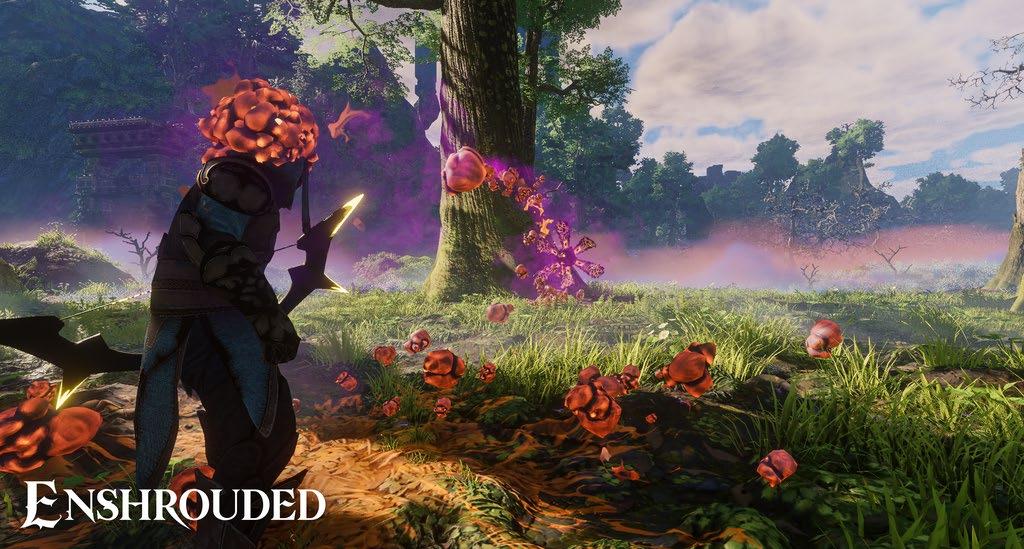



As a fan of roguelites and rhythm games I was eager to throw myself at Beat Slayer. The key concept of the game is fighting to the beat of the background music; every input, except for just walking/running around, will have to match the beat or you’ll be significantly weaker in combat. There are rhythm assitance features that can be activated for gamers who may have difficulties with the beat or are hearingimpaired.
To kick things off, there are three difficulty modes to choose from: Easy mode lets you enjoy and focus on the story so the enemies will be easier and it will be generally more forgiving. Normal mode is intended to be challenging for most players and it’s probably the mode most players will start on. Finally there is Hard mode which is for those seeking a very challenging experience with no room for errors; second playthrough material or for gamers who take pleasure in punishment... yes I’m looking at you soulslike gamers.
The visuals and graphics give off a artistic grungy comic book aesthetic mixed with up a clean futuristic look. The artwork during character interactions has a nice attention to detail where it changes the weapon Mia is holding depending on the weapon you have got equipped, it’s a little thing but I really appreciated it.
Similar to Hades, you are thrown straight into
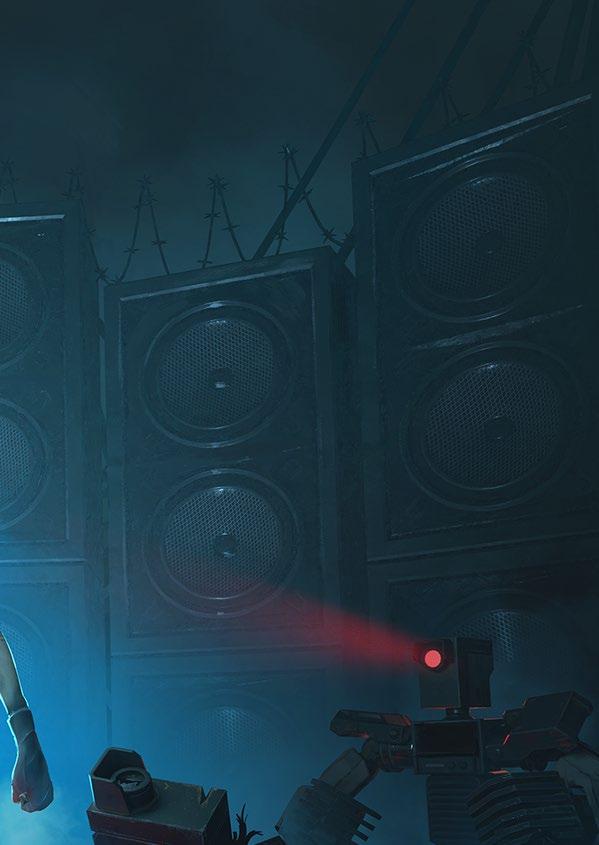
fighting from the start with limited abilities. You are expected to fail this very first run but it definitely feels possible to complete a no-death run if you’re familiar with the game mechanics and enemies. I did manage to reach the second boss before meeting my doom at the hands of Dietrich’s killer robots on the first run and that’s largely thanks to playing the demo.
There is definitely a learning curve that may throw some people off as you will have to get used to playing the game to the rhythm of the soundtrack - you won’t be able to get away with button mashing or spamming as it will drop your Tanzrausch back to zero, a game feature that gives you buffs depending on how well you keep to the beat; if you hit the beat at least 20 times in a row you will enter Tanzrausch and gain benefits like increasing the damage you do or reducing the damage you take. There are also 3 different weapons to choose from that unlock over time, each with their own unique attack patterns and playstyles. Furthermore the upgrades have affect each weapon differently, for example, the lightning upgrade gives a chain lightning effect for the basic attack on the axe whereas the basic attack on the hammer will have a thunderclap effect.
One aspect of the gameplay I feel could be improved on is having a larger variation of power upgrade types and for power upgrade variations to come into play sooner. The second may be a case of experiencing unlucky randomisation,
but even after completing a run to the end I have not come across a Fire upgrade choice.
For a game that focuses on staying on beat to the music, it is no surprise that the sound design has been very well done. Each stage/act will have a different track but each one incorporates an electronic-genre base. The sound design for the weapons and power effects blend well with the soundtrack, especially the thunderclap power - the way the thunder hits and crackles to the beat is super satisfying to hear. Another sound design aspect I really appreciated are the audio cues for enemy attacks, especially if they are targetting you outside of your field of view. The gameplay can get chaotic and at times I would overly focus with staying on beat so having that audio cue is super helpful.
One very minor aspect I feel could have been done a little bit better is the transition between the music during battle and the music when the battle ends. The transition/cut feels quite abrupt at times and it would take me out of the rhythm and groove of the track.

I’m still working my way through the game but as it stands the story is fairly straight forward. My experience with the game so far leads me to think the resources was more heavily focused on the gameplay and mechanics, and the story itself is there to facilate game progress and replayability.
The game scales quite well depending on how you progress so it doesn’t feel too difficult or too easy. The further you progress through the levels and stages, the earlier more challenging enemies will appear on subsequent run attempts. The story continues after completing a run and at this point future runs will feature new types of enemies as well as upgrades for the enemies.
Overall Beat Slayer is a great game, especially if you are a fan of roguelite games. The game has a little bit of a learning curve to get used to with the staying-on-beat mechanic but it is very fun to play once you get the hang of it. I highly recommend giving this game a try if you’re a Hades fan, it will satisfy that craving while you wait for Hades 2.


A fantastic roguelite hack and slay game with a fun rhythm twist. Satisfying mechanics that reward smooth and skillful gameplay.
9/10
Being a game where the background music is at the forefront, it is imperative for the audio to be good and Byterockers’ Games did a fantastic job. The soundtrack fits nicely with the theme and gameplay flow of the game.
Visuals
8/10
The contrast of grungy comic book art style and clean futuristic robots works well in a 90s inspired dystopian Berlin. The character art is fantastic but the environment is not very striking or exciting.
Playability
9/10
The unique gameplay mechanics in a roguelite hack and slash makes for a fun and fresh feel. Accessibility options for games who are hearing-impaired.
Delivery
8/10
Great gameplay mechanics and will definitely scratch that itch if you’re waiting for Hades 2, but the story elements could be better.
Version tested: PC via Steam
Reviewed by: Jamie Yong



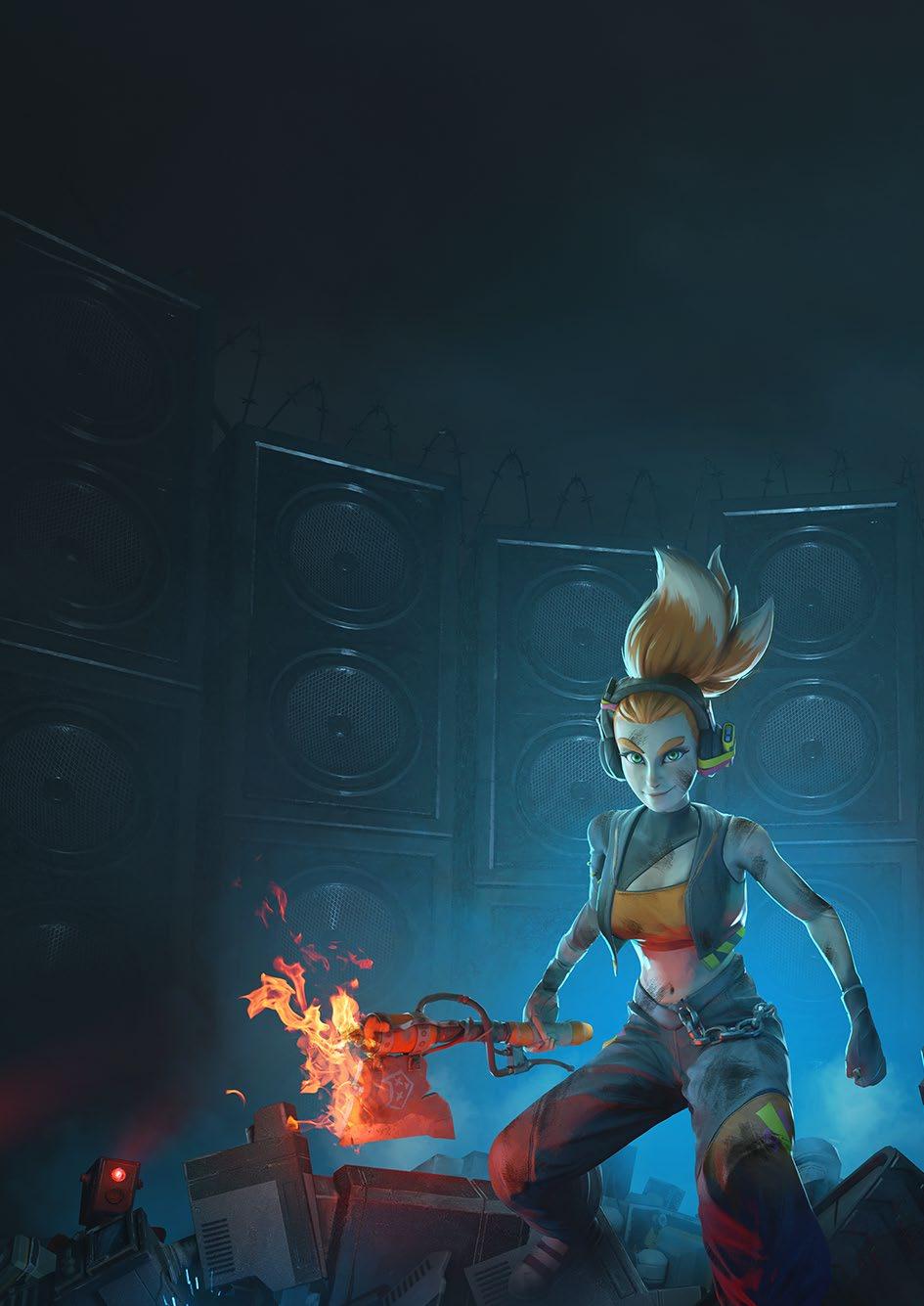
Game: Beat Slayer
Developer: ByteRockers’ Games
Publisher: ByteRockers’ Games
PR: NeonHive
Interviewee: Benjamin Reichel
Interviewer: Jamie Yong

Hi Benjamin! Can you tell our readers about who ByteRockers’ Games are? How did ByteRockers’ start out as a company?
ByteRockers’ Games was founded in 2008 by Martin Knauf. He wanted to go his own way as a game developer - independent and free from external requirements. This freedom is an essential part of ByteRockers’ Games and is still held as a core value by the current CEO Maik Reichelt.
You have a new game coming out called Beat Slayer, which is expected to be released on PC via Steam on the 4th of April. What is the game about and what can players expect from it?
Beat Slayer is a roguelite hack n’ slay game with a twist. Instead of just being in the background, music takes centre stage. You have to move, attack and dodge to the beat of the soundtrack.
Players step into the role of music-loving inventor Mia and accompany her on her adventures through the streets of Berlin as she tries to stop the evil machinations of former musician Dietrich Paradise.
What was the inspiration behind the concept of Beat Slayer?
We drew inspiration from a variety of rhythm and hack-and-slash games.
While games like Hades and Hi-Fi Rush were influential, we also looked at titles such as BPM: Bullets Per Minute, Hextech Mayhem, and Rhythm Doctor for their rhythmic elements.
For hack-and-slash inspiration, games like Bayonetta, Path of Exile, and Diablo were significant influences.
I’ve played the demo, and I very much enjoyed the game; I’m really looking forward to playing the full game!
In the demo there was only one music track, can players expect different music tracks as they progress through the levels?
We have tried to reflect the music of Berlin in Beat Slayer. Berlin is internationally renowned for the electronic music emanating from its vibrant club scene. We wanted to incorporate this.
The music differs depending on the act, but it will always have an electronic “base”. From fastpaced beats to an orchestral climax, everything will be included.
The music soundtrack is one of the most important factors for a rhythm game. How did you decide what tracks to use and was the music all composed by ByteRockers’?
We aimed to create something unique, drawing inspiration from the vibrant city of Berlin where our team is based. This locale provided rich inspiration for both the art style and the soundtrack, helping Beat Slayer stand out among rhythm-based games.
We worked very closely with Markus Zierhofer and his company Audio Creatures, who concentrated fully on the music and the sounds of the game.



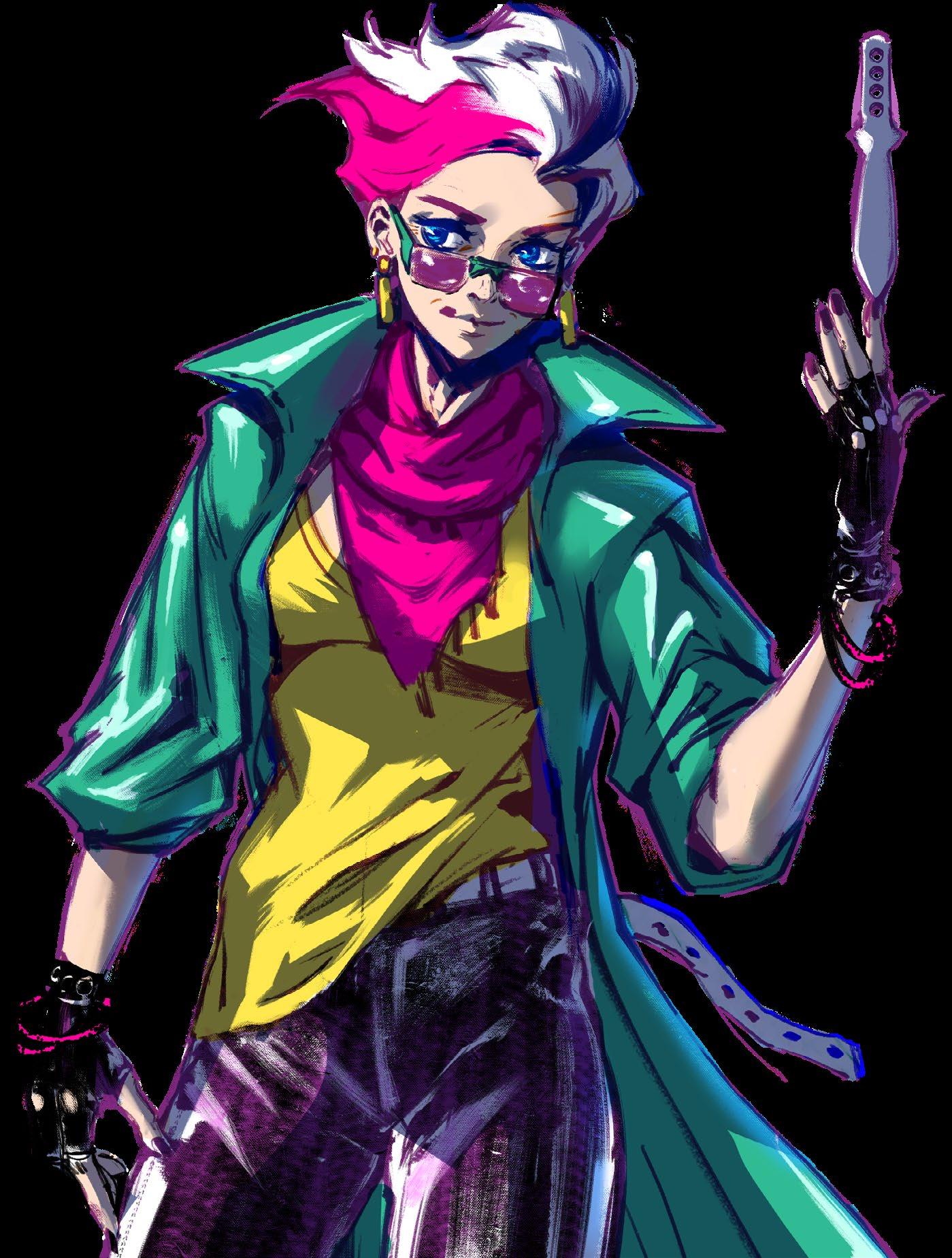
I love the art style of the characters in Beat Slayer, especially Donna, they look like such an awesome badass! What was the inspiration behind your choice of art style?
With Donna in particular, she’s also my favourite character. The fighting spirit that she carries within her motivates more than just Mia. Otherwise, I would describe Beat Slayer’s style as “grungy comic style meets cassette futurism”. Our artists have looked at futuristic titles like Metal Gear Solid as well as taken inspiration from Into the SpiderVerse, the Arcane Netflix series and Disco Elysium as other titles with unique art styles and have developed their very own mix.
Without giving any spoilers, what is your favourite part of Beat Slayer that you think players should look forward to?
For me personally, just combining upgrades is a lot of fun because it makes every run feel different and unique. However, if I had to pick one particular scene from the game, it would be the boss battles. Every one of them feels challenging, even though I’ve had a few hours of experience!

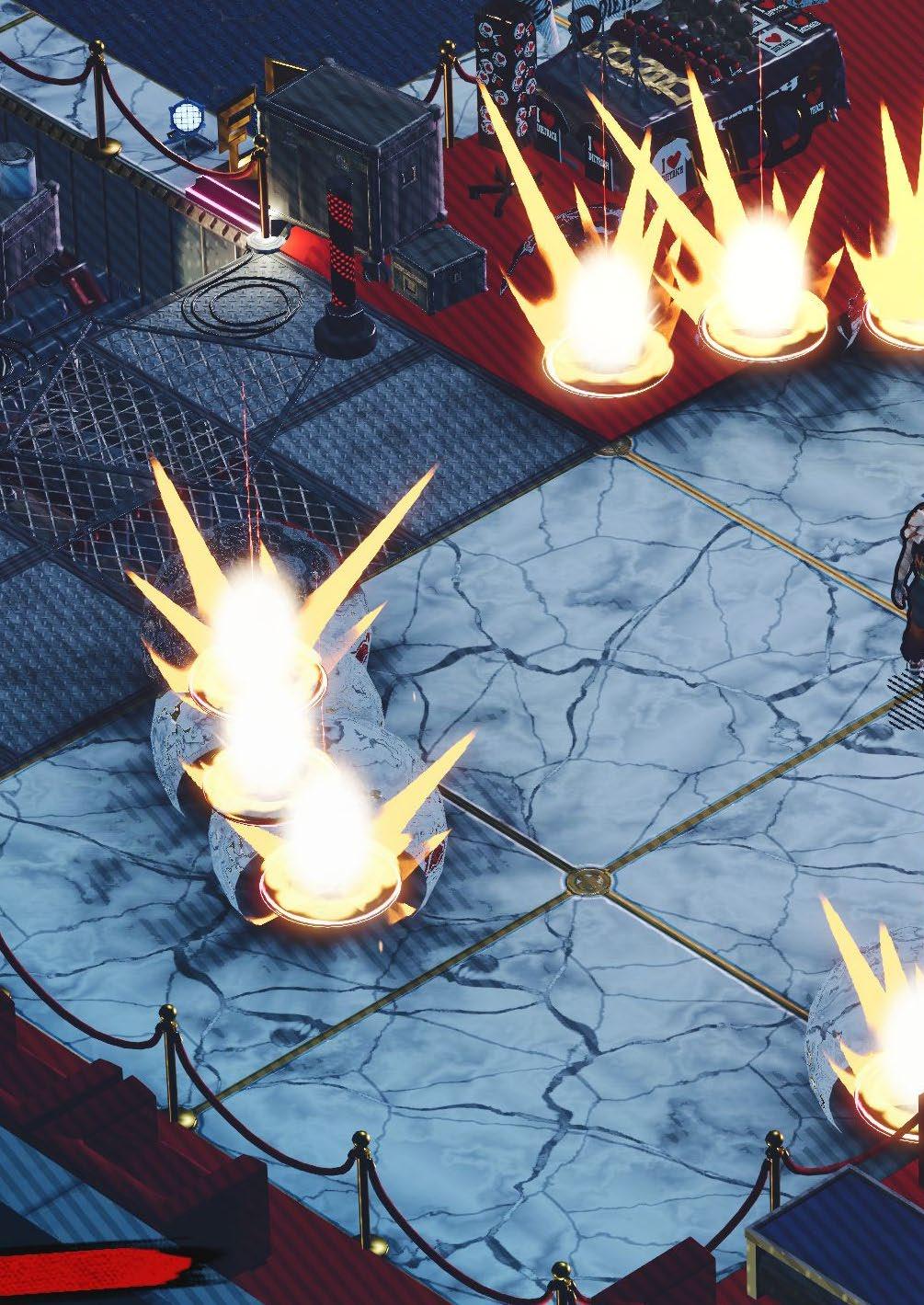

What was your favourite part to make during the development of Beat Slayer?
For this question I asked our game designers and developers, and the common answer was the development of the Beat Slayer Combat System, especially the attacks. The system made it relatively easy for everyone to develop new attacks and implement new ideas directly. In the end, 3 different weapons were created, each with their own unique playstyle.
Did the team face any unique challenges when developing a game like Beat Slayer?
A rhythm game is all about hitting the beat perfectly. That means a flawless beat system is crucial, making it our biggest and most important challenge. Just considering the different latencies so that every keystroke is measured accurately was a big challenge, which we (hopefully) successfully mastered.
Beat Slayer is currently only being released on PC via Steam. Are there any plans for the game to be made available on consoles in the future?
With our previous game Insurmountable, we

were able to gain a lot of experience with a port to consoles. As for Beat Slayer, we don’t want to rule out the possibility of a console version in the future if it proves successful.
The game is being released on the 4th of April, but there’s no pricing information on Steam just yet. Can we ask what price point the game will be released at?
The price for Beat Slayer will be €19.99. We think this is a good price for a great indie game which both a lot of love and sweat have been put into.
Finally, does Rico have anything to say to players looking forward to Beat Slayer?
I’ll try to translate his bark…… Ah he said:
“Thanks for playing Beat Slayer and have fun turning some robots into scrap metal!”
Rico Barketing Manager








CJ Allan is a host, presenter, and creator hailing from Newcastle, UK. He goes by many names, some have referred to him as the “geek version of Ant and Dec”, comic con attendees will point him out as “the guy in waistcoats at con”, and many will simply know him as CJ the geek! CJ’s content has a focus on all things geeky. If you’ve been to a UK gaming or pop culture convention then chances are, you’ve seen CJ’s silly antics on stage, or working with guests from some of the biggest brands, like Marvel, Xbox, PlayStation, and Netflix to name a few.
Hi CJ! First of all, thank you very much for taking the time to have a chat with us! How have you been and what have you been up to recently?
Thanks for reaching out and chatting, always love an opportunity to talk geeky things. Currently, I’m in a Final Fantasy 7 Rebirth rabbit hole and don’t show any signs of escaping anytime soon. Other than that I’m being a gaming editor and sorting reviews and prepping Comic Con Content for 2024.
Let’s start from the beginning, tell us a little bit about how you got into content creation and hosting panels at events? How long have you been doing it, and what made you want to start?
Wow that is a long and complicated question (haha). I’ve been involved in TV/Movie/Games content creation for well over 15 years now which has been a mix of online articles, interviews, videos, podcasts and more.
I always had a dream when young to get into Journalism and TV Hosting and was going to do an English/Journalism degree when I was younger, but then looked at job possibilities and pay and took a safer route. But that didn’t stop my love for the media industry, so I decided to do that as a hobby. It may not be exactly what I had dreamed but it’s certainly close enough and got me to do pretty much the exact same thing, I have the worlds most interesting hobby.
I’ve been to many MCM Comic Cons and I don’t remember a time where you were not presenting or hosting a panel at there. How did the opportunity come about?
I can only apologise for the sound of my Geordie Accent echoing the halls of MCM so many times to people, and hopefully it will continue to echo for at least a few more years before people get sick of me.
How did it come about? Well that’s a funny story involving comic con youtube videos, a musical and a puppet. Many years ago I had a youtube channel with a fellow creator and we would film cosplay videos and content at comic cons, two of which involved a puppet talking about “Cosplay is not consent” and filming a Comic Con Musical.
This led to chatting to a team member at one of the MCM stages and they found out I also did hosting. An opportunity came up where one of the hosts was not available for their Scotland show and the team member reached out to me and asked if I was available. So off I went to host at the MYM Buzz stage, and surprisingly after all my silly antics over the weekend, they asked me to stay.
Unfortunately, once ReedPop bought MCM they decided to no longer have a MYM Buzz stage but after a conversation with the MCM team we convinced them to make a new stage called the “MCM Live Stage”. They said they would trial it for one con and see how it went, and years later its still here now.





The list of talented and amazing people you have met and interviewed is absolutely incredible; for example, Felicia Day and Stephen Amell at last year’s October MCM Comic Con London. Have you got any favourites that really stood out for you and if so, why?
I keep saying this but I see myself as one of the luckiest people at Comic Con with the amount of amazing talent I’ve had a chat with. Some I’ve been lucky enough to chat to on multiple occasions and its nice when they remember me. A few have spoken to me before panels saying “what do you have for me this time”, due to my antics. I would have to sit down and have a proper think of all the guests I’ve interviewed at cons and outside of cons. I wouldn’t say I have favourites because there are moments I’ve had in each panel that have been fun and memorable. I can honestly say that all of the guests I’ve spoken to have been such genuine and friendly people, Veronica Taylor (The voice of Ash ketchum) who I still speak to regularly is one of the nicest people you can meet, and teaching Geordie to the likes of Rosario Dawson, David Hayter and Felicia Day have also been funny moments.
How much preparation goes into your onstage interviews and hosting panels like the Cosplay Championships?
Most hosts have their own way of preparing and process for panels and interviews. I don’t think mine is possibly the best way but it works for me at least.
I never like to think of them as interviews but more as chats and “Getting to know you” type situations. So I try to avoid having cue cards during the panels. So before the panels, I do a lot of research, make notes and then memorise all the information and questions I want to ask. Then during the panel I can focus on the panellist, have that conversation then based on what they say bring up relevant information or questions. Depending on the amount of panels I have that can be a lot of information to memorise, but so far I think it’s worked well and hopefully makes it feel less of an interrogation and more of a fun-related chat.
For the cosplay Championships, I can’t take any credit for the preparation at all. That’s all done by the awesome team at Cosplay Central. They have a lot of organising and preparing to do before the show at the end of the con. I turn up to the panel, and they hand me a list that tells me the cosplayer, character and what it is they are from and I get 5 minutes to prepare, then I step out onto the stage and let the cosplayers do their stuff. It is one of the only panels I don’t get to prepare beforehand and just do it there and then. It does involve a bit of improv when we have those 10-15 minutes waiting for the judges but that’s just me being an idiot with the crowd (haha).
With over 15 years working in online media and hosting big events, do you get nervous walking out on stage to a sea of people or interviewing big celebrities?
Most the time I forget I’m out on a stage. I have always lived by a rule of I won’t work or host at an event I won’t enjoy or do a good job. I’m lucky compared to most hosts that this isn’t my full time job and do this as a hobby. So I can pick and choose events I want to work with. This also means I give my best to whatever the panel is. I just like to go out on the stage, have fun, do something a bit different than previous panels and hopefully the audience enjoys it. There is always those few minutes before a panel where you get the “am I going to do this well” but once you step out on the stage, you kind of go into autopilot. I try to do a panel I would enjoy watching and hope that the audience agrees.
Is there anything difficult about being host at events or is taken for granted by people who have never done the job before?
My biggest worry is always going out on stage and people thinking I’m not prepared because I rarely read from a cue card.
I have a tendency to research and prep for guests I don’t have on my list of panels, just in case I get called last minute to moderate the panels (and that has happened a few times). There was one panel not to long ago, main stage panel, full to capacity, was given 5 minutes warning before it started to go on stage.

I didn’t even get a chance to speak to the guests beforehand, but because I had read up on the guests a week before the event I managed to do a 45 minute panel with them. The guests appreciated the fact I was called for last minute and the audience seemed to enjoy themselves. If anyone ever wants to try hosting or having a panel the best thing to do is research, plan, and over prepare.
You’re “the guy in waistcoats at con”. Has this always been the look throughout your hosting career? And probably the most important question, how many waistcoats do you actually own? I’d like to think you have a walkin wardrobe dedicated to all your waistcoats!
At least half of my wardrobe is waistcoats and shirts. I always find suit jackets a bit restrictive and because I’m always up and about and high energy, waistcoats always give me a bit more movement. I can’t remember a time on stage when I didn’t wear them. Twice I went to a con wearing a hoody (as an attendee) and people didn’t recognise me at first or asked me if I was feeling ok because I wasn’t wearing a waistcoat. So I am destined to always wear them (Not that I’m complaining!).
For those interested in becoming a host/ presenter for gaming events, how would they go about getting started? What would you be their first step on the ladder?
A lot of people think that you need to have a huge social media or streaming following in order to host, which is far from the truth. Being able to make content or stream online is very different skill to being out on a stage. I am terrible at building a following on social media, I even get wrong for not introducing myself at the start of panels (haha). Confidence and preparation are the key. I know in my head what I want to happen every minute of the panel, where should we be 15 minutes in, is it time for fan questions etc. Conduct interviews with friends to practice, attend events and interview people around the con, show what you can do. Best way to get experience is to speak to local events/cons and start off small, build your experience and skills so if you get the opportunity to speak to bigger events, you can show them what you can do. People are
always welcome to reach out to me for advice or tips on how to get into hosting or what should they do during panels. I’m not saying I know everything but I can at least talk about my experiences.
From everything you have learned so far, what advice would you give to the CJ Allan that was first starting out?
Sometimes I look back and think should I have stuck to my dream of Journalism and working in TV. But if I took that route I may not have ended up doing what I’m doing now. I genuinely think I have been very lucky in terms of timing and opportunities, I just continued to do something I love and worked hard and it got noticed (but that took many years).
Are there any events, anywhere in the world, you would love to attend either as an invited creator, host or even just a general attendee?
I have never been able to attend a con outside of the UK due to my real career and I’d love to attend a US con, maybe NYCC or San Diego at some point in the future. I just want to see if there is much difference in atmosphere. Hosting those events would be a dream come true, but I’d just be happy to get there first.
You’re also a part of SpoilerTV. Could you tell us a bit about what SpoilerTV is and what it is you do?
SpoilerTV.com is a website I’ve been a part of since it first started over 15 years ago. Started off as a small blog covering TV and movie spoilers and news, to now millions of visitors looking for TV promos, news, reviews and interviews.
Just recently I’ve decided to add a gaming section to the site so I’ve been slowly building up our game review coverage and working with games companies to acquire copies for reviews etc and so far it’s starting to take shape. So my main goal with the site right now is to get a fully developing gaming section up and running, gaming has always been a passion of mine (possibly more so than TV and Movies).

What are the top 3 games you have played and why?
Just 3? That’s mean. There are so many games I love and adore for different reasons and have different meanings to me. It’s no secret I’m a huge fan of Sonic the Hedgehog and own way to much merchandise (even have a sonic tattoo). Sonic Adventure 2 on Dreamcast is definitely up there as one of my favourites. Final Fantasy VIII is my number 1 pick of games. Picking a 3rd is more complicated and depends on my mood at the time. I have fond memories of playing Ocarina of Time, or memories with friends playing Goldeneye, going off on an adventure with Lara Croft. I adore games with amazing stories or games that make you think. I don’t think I can pick a 3rd right now, can I get back to you? (haha)
What 3 games are you most looking forward to playing in 2024 and why?
Does Final Fantasy 7 Rebirth still count even though the game has already come out? (Or will have of time of posting). I’m a huge Final Fantasy fan so this has been my main game for 2024 and it’s only the start of the year. Other than Final Fantasy there isn’t a game that has me excited. I feel Helldivers 2 may be a game I could enjoy with friends. I’m interested to see what games will be announced moving forward (still waiting on a surprise Ocarina of Time remake announcement).
Do you have a guilty pleasure game that your friends may tease you for playing? And what makes you enjoy playing it?
I wouldn’t say I have a guilty pleasure game, but I do at every opportunity remind everyone Final Fantasy VIII is the best Final Fantasy both in person and on stage, which sometimes gets mixed reviews (haha). I do love it when I meet fellow Final Fantasy VIII fans and then start chatting to them non-stop about it. Ben Starr (the voice of Clive in Final Fantasy XVI) is very similar and we were geeking out over it for a good 15 minutes randomly, to the point my house keys have a FFVIII keyring and he kept trying to steal them off me.
Away from your content creation and hosting life, what do you do in your spare time?
f you would like to check out CJ on any of
Instagram: @CJtheGeek
TikTok: @CJtheGeek
Threads: @CJtheGeek
X: @CJtheGeek
YouTube: @CJAllan

of their socials, you can do so below!
@CJtheGeek
@CJtheGeek
@CJtheGeek
@CJtheGeek
@CJAllan

In the past year I have started playing Dungeons and Dragons with some friends and we called our group “Chaotic Questers”. We now stream it weekly on Twitch on the ArtyFakes channel (sorry for the sneaky plug). It’s been great fun getting back into streaming and doing something I’ve always wanted to try, and never originally had the time to invest in. So far I’m the only player to have had a character die (I’ve lost 2 so far, and a third left the party). I’m now onto my fourth character which is a samurai cat who wears waistcoats and lives the rogue life and is always hiding.
With 2023 behind us, do you have any content creator, producer, and/or hosting goals for 2024?
I want to get into the routine of making YouTube videos or short-form content but I’m finding I never have much time. Once I get into a good routine it would be good to start creating video content again, that’s the aim for the end of 2024 at least.
What have been your favourite moments being a content creator and/or host so far?
There is not one moment that is a favourite. But just the experience of going to comic cons and meeting so many interesting people on and off the stage and being part of the community has been an absolute blast. I’ve been lucky in the fact I’ve made some amazing friends over the many years. So if anyone has never attended a comic con before I strongly suggest giving it a shot, you wont be disappointed.
Finally, what are you currently working on that you’d like or are allowed to share with our readers?
I wish I could say or reveal my schedules and plans for 2024 but usually most of the exciting things I get the opportunity to do come with NDA’s. I’m sure I will have some awesome game reviews coming up and no doubt I’ll be at a comic con at some point in the future, either hosting or just going along to have some fun with friends. Maybe you will see me at more MCM’s this year (wink wink).
And that’s it! Thank you very much again for taking the time to have this interview with us, it’s been an absolute pleasure. We wish you all the best in the future!


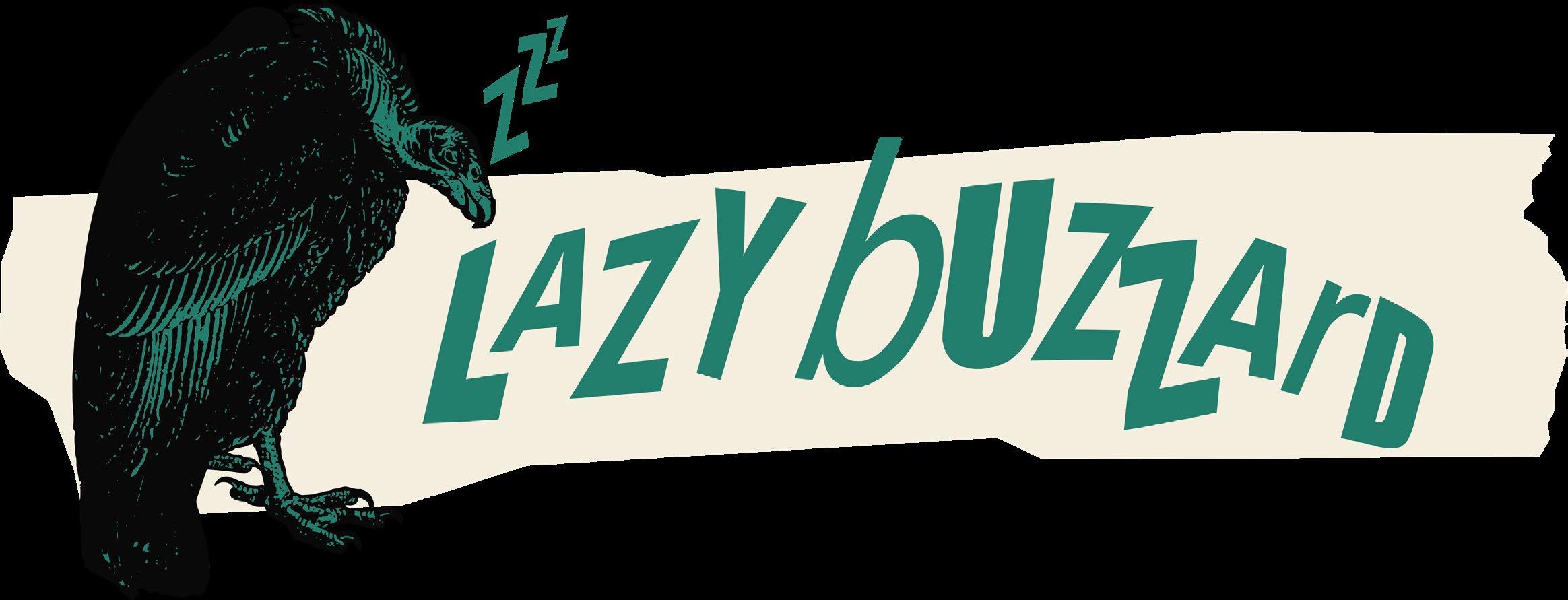
LazyBuzzard is an incredible streamer and musician who started his content creation career just a few years ago and has become an extremely popular on Twitch. Initially a Sea of Thieves partner, Buzzard was well known for his fantastic pirate streams, but has since moved on to Red Dead Redemption RP servers, along with other games that he plays with his community. He’s an extremely talented musician, having now integrated his other love into his streams and sharing his music with his audience. We have him here today to talk about his career and how it all started!
Hey LazyBuzzard! First of all, we would like to say thank you for joining us for this interview, and for taking the time to chat with us! How have you been and what have you been up to recently?
Thank you for having me! I’m very well thank you, just very thankful to be here and tell you more about me and what I do!
Let’s start from the beginning then, shall we? Tell us a little bit about your streaming life? How long have you been doing it, and what made you want to start?
So, I started streaming during the first Covid 19 lockdown in the UK, as you know many of us were very bored and needed something to do whilst being at home, and so I decided to have a go! As a Musician I love entertaining people so it’s nice to do that via twitch too.
Well it’s great that you made something so amazing from an otherwise negative situation such as Covid! A lot of your earlier content was very focused on Sea of Thieves! What made you want to try other games?
Sea of Thieves is where I found success as a content creator to start with, streaming that game for almost 3 years full time, achieving

Twitch and Sea of Thieves Partner, attending events such as SoT Fest as a guest etc. But I got very burnt out, and always had the desire to try Roleplay on RedM so I decided to go full plunge! I’m still very much at the start of my RP journey but can’t wait to see how far I can go with it, the thing is I’m having fun and that’s all that matters. I do also enjoy some simulation and survival games too occasionally, though honestly Ranch Roleplay (where my RedM home is) has both simulation and survival elements mixed into it.
TGG: You’ve experienced amazing growth as a content creator, but that’s not all you do! Tell us a bit more about your musical journey!
I started playing guitar when I was around 12 years old, my sister had a cheap classical guitar that came with one of those packages, you know the book and some picks etc. When she had enough of learning and put it aside I decided to have a go! I didn’t really go to School due to anxiety and being bullied so I just played guitar and would sing ALL the time haha! Mainly 1950’s Rock n Roll music until I got the bug for Grunge and Alternative Rock / Punk Rock. Now I mainly focus on Americana / Roots music and hope to start performing live outside of twitch later this year as well recording an EP which I’m super excited for!
We hope to see you doing live performances soon! Have you always had a musical focus in your streams, or was it something you didn’t plan on having initially?
When I started streaming, I didn’t think I would be using my work as a musician, but when I realised the potential with sea shanties on Sea of Thieves that changed, starting off using only my harmonica and then playing the guitar and singing too! Once I decided to move my focus on RedM. Thats when I truly saw the potential of a character who plays guitar, harmonica, and sings! Thats when Johnny Colt was invented heavily inspired by Johnny Cash and Hank Williams.
He sounds like a fun character to play! We’ve seen you have been streaming a lot of Ranch RP (Red Dead Redemption 2 roleplay server). What made you get into the roleplay side of gaming?
I dabbled with some light RP on Sea of Thieves, but it was never anything serious. Being a HUGE fan of the Red Dead Redemption series, I always thought it would be awesome to have a character amongst many others in a living breathing world. After leaving it way too long I decided to have a go on RedM, in the end making Ranch Roleplay the place I call home. The Management team are fantastic and fair, and they also play the game themselves too! The scripts are fantastic and all built in-house, I highly recommend Ranch RP for serious roleplay. I also love being able to explore the world of voice acting, Johnny Colt is like an Arthur Morgan / John Marston / Johnny Cash hybrid.
The server certainly sounds like a lot of fun! We’ve seen that you have some great equipment now, but what was your equipment like when you first started creating content?
Haha! This is a good one, I used to read twitch chat from my phone which would be on my lap! No lighting, I used a microphone that was built into a headset (standalone mics are usually much better) and had one monitor! No streamdeck, no GoXLR or any way to route audio... But what I did do was make an effort with the presentation and audio of the stream, purchasing stream graphic packages for
twitch from a popular website which didn’t cost an arm and a leg, and licenced music via subscription. This was essential at the start, it wasn’t until later on I got a second monitor, streamdeck, GoXLR, lighting and a highquality microphone.
It’s encouraging to know that you didn’t start with much for those who are in the same situation and are wanting to try streaming! For you, what do you think are the essentials that you personally can’t create content without?
I don’t think the following are essentials but certainly make life easier and thus will improve the quality and flow of the stream overall. Streamdeck, I use this for SO MANY THINGS! Lighting control, scene selection, audio, sfx and more! A second monitor at least is essential in my opinion, otherwise your alt tabbing constantly. Ideally, I want to get two new bigger monitors now and a third so I don’t have everything cropped up!
A GoXLR (though support has now stopped for this product so I recommend something like the wave xlr) Lighting if you’re using a camera, and ideally a decent XLR microphone, I personally use the Shure sm7b. Oh one more thing, a good chair with a good backrest, ideally not a gaming chair as I have learned there not the best for back support, I plan on investing in a Herman Miller due to how much I’m sat down, though there are cheaper options.
Being comfortable is always wise! What would a standard content creation day/week be like in the life of LazyBuzzard?
Hmm, wake up and help get the kids ready for school. Once they have been dropped off me and Dishy (my Wife and moderator) will go out for a walk somewhere in the countryside, we love being in the outdoors and I especially love birds of prey! We often help with conservation for wildlife and do our part to make sure local wildlife is safe. Then we would head home and have some brunch, I might watch a couple of episodes of whatever we are currently watching (most recently Masters of The Air) Then I will get on the pc and check emails, make sure there’s no updates that need doing








We hope to see you doing live performances soon! Have you always had a musical focus in your streams, or was it something you didn’t plan on having initially?
When I started streaming, I didn’t think I would be using my work as a musician, but when I realised the potential with sea shanties on Sea of Thieves that changed, starting off using only my harmonica and then playing the guitar and singing too! Once I decided to move my focus on RedM. Thats when I truly saw the potential of a character who plays guitar, harmonica, and sings! Thats when Johnny Colt was invented heavily inspired by Johnny Cash and Hank Williams.
He sounds like a fun character to play! We’ve seen you have been streaming a lot of Ranch RP (Red Dead Redemption 2 roleplay server). What made you get into the roleplay side of gaming?
I dabbled with some light RP on Sea of Thieves, but it was never anything serious. Being a HUGE fan of the Red Dead Redemption series, I always thought it would be awesome to have a character amongst many others in a living breathing world. After leaving it way too long I decided to have a go on RedM, in the end making Ranch Roleplay the place I call home. The Management team are fantastic and fair, and they also play the game themselves too! The scripts are fantastic and all built in-house, I highly recommend Ranch RP for serious roleplay. I also love being able to explore the world of voice acting, Johnny Colt is like an Arthur Morgan / John Marston / Johnny Cash hybrid.
The server certainly sounds like a lot of fun! We’ve seen that you have some great equipment now, but what was your equipment like when you first started creating content?
Haha! This is a good one, I used to read twitch chat from my phone which would be on my lap! No lighting, I used a microphone that was built into a headset (standalone mics are usually much better) and had one monitor! No streamdeck, no GoXLR or any way to route audio... But what I did do was make an effort with the presentation and audio of the stream, purchasing stream graphic packages for
twitch from a popular website which didn’t cost an arm and a leg, and licenced music via subscription. This was essential at the start, it wasn’t until later on I got a second monitor, streamdeck, GoXLR, lighting and a highquality microphone.
It’s encouraging to know that you didn’t start with much for those who are in the same situation and are wanting to try streaming! For you, what do you think are the essentials that you personally can’t create content without?
I don’t think the following are essentials but certainly make life easier and thus will improve the quality and flow of the stream overall. Streamdeck, I use this for SO MANY THINGS! Lighting control, scene selection, audio, sfx and more! A second monitor at least is essential in my opinion, otherwise your alt tabbing constantly. Ideally, I want to get two new bigger monitors now and a third so I don’t have everything cropped up!
A GoXLR (though support has now stopped for this product so I recommend something like the wave xlr) Lighting if you’re using a camera, and ideally a decent XLR microphone, I personally use the Shure sm7b. Oh one more thing, a good chair with a good backrest, ideally not a gaming chair as I have learned there not the best for back support, I plan on investing in a Herman Miller due to how much I’m sat down, though there are cheaper options.
Being comfortable is always wise! What would a standard content creation day/week be like in the life of LazyBuzzard?
Hmm, wake up and help get the kids ready for school. Once they have been dropped off me and Dishy (my Wife and moderator) will go out for a walk somewhere in the countryside, we love being in the outdoors and I especially love birds of prey! We often help with conservation for wildlife and do our part to make sure local wildlife is safe. Then we would head home and have some brunch, I might watch a couple of episodes of whatever we are currently watching (most recently Masters of The Air) Then I will get on the pc and check emails, make sure there’s no updates that need doing



for stream, whilst making sure everyone’s well in my discord which is honestly like a big family (Dishy does an amazing job at making sure everything feels welcomed) I would work on some new songs original and covers. However soon a lot of this time will be spent learning to video edit for my YouTube channel. Whenever I’m not live or doing self-care things / family time I will be focusing on video editing for YouTube. I then go live at around 2pm UK time and Dishy picks the kids up from school. Some streams I won’t finish until 10pm. I like to have a little bite to eat whilst I’m live, but I turn my camera off as I hate people watching me eat haha!
I’m in the same boat with eating on-stream, but we all gotta eat! How do you make sure you don’t experience burnout when it comes to streaming?
I do this by mixing things up, whilst roleplay is the main focus of my content, I can always create an alt character to mix things up. I also want to incorporate simulation and survival games too, I love flight and truck simulators as well as survival games such as DayZ and more! I think it can be important to have a focus when it comes to gaming genre, but it’s important to add some variety for yourself and your community even if it means you have less people watching during those streams, it’s healthy for you and your channel.
A bit of variety is always important! From everything you have learned so far, what advice would you give to the LazyBuzzard that was first starting out as a streamer?
I would advise myself two things, first I would say ‘Buzzard don’t ever stress about things like Twitch Partner, sure it’s a great achievement but at the very least don’t stress yourself out during the waiting process.’ I’m proud of achieving partnership, but I wish I never made myself so anxious over it. Secondly it would be to always do what you love and what makes you happy, DO NOT do it with the goal of making a living, whatever happens financially is a bonus and you need to keep YOU happy first. <3
Very solid advice! You have a heavy emphasis on mental health in your streams and in your community. Would you be comfortable sharing why you think it’s so important for your channel to have that element to it?
In a nutshell I have struggled with mental health my entire life, too many people feel the need to lock that side of themselves away behind closed doors due to being embarrassed. But this is just simply a part of who we are and should never be ashamed of something out of our control. By me talking about my own struggles it could encourage even one person to seek professional help. I am very cautious as to the detail I go into though, being mindful to leave potentially triggering subjects out, not because I’m ashamed but because it’s important a professional address that. I try keep a positive atmosphere and always strive to turn a negative into a positive.
Your community sounds like a very positive, safe space to be! Are there any events, anywhere in the world, you would love to attend either as an invited creator or even a general attendee?
Twitch Con is something I would like to attend some time, just as a central hub to meet viewers and other creators. I would literally freak out if Rockstar ever invited me to take part in something Roleplay related, that would make my absolute day!
Maybe some day! As a content creator that has a focus on gaming, what are the top 3 games you have played and why?
Sea of Thieves because it was where my content creation journey started, where I achieved the core foundation of my community and other amazing achievements, I will always be proud of.
Not so much a game but my work as a musician under just chatting, seeing everyone generating hype in chat and having a good time. And lastly roleplay RedM on Ranch Roleplay, this is where my current focus is and I’m so excited to where things go.


Are there any games being released in 2024 that you are looking forward to playing?
There’s an awesome game called Skye: The Misty Isle, a Viking survival game which looks like it has a lot of promise. And Microsoft Flight Simulator 2024 as they are adding things like search and rescue, wildfires etc.
Do you have a guilty pleasure game that your friends may poke fun at you for? And what makes you enjoy playing it?
I genuinely can’t think of anything to be honestly which is crazy!
Away from your content creation life, what do you do in your spare time?
I love spending time in nature, I have a huge interest in Birds of Prey and love doing everything I can to help with local projects to help protect these beautiful creatures, my current past time is observing some local peregrine falcons which has been amazing! I have also started to get into model making, like the old WW2 fighter planes and bombers!
Well, we know why you chose your streamer name now! With 2023 behind us, what are your goals for 2024?
For content creation I want to start uploading regular videos to YouTube, this is going to be huge for attracting more viewers to my twitch channel. If I could start to monetise on YouTube by the end of the year, then fantastic! For me as a musician, I hope to be recording in the studio by the end of the year for the first time in over 12 years! As well as performing live again at venues and festivals that catch my eye. Personally, I want to become the fittest / healthiest version of me I can be, for myself and my family.
Some solid goals, there! What have been your favourite moments being a streamer so far?
Hosting Sea of Thieves Community Day on Sea of Thieves TV. When it comes to RP, I actually hung out on stream with Steve J. Palmer who did the voice acting / motion capture for Bill Williamson from the Red Dead Redemption

series, something I was so excited for and it was incredible! For my channel as a whole, it would be the time a viewer came into my stream feeling suicidal, he didn’t know his local emergency number for his Country of residence, so we found it whilst live on stream. A few months later he come into chat and said how well he was doing now, and how grateful he was to me and the buzzard nest for putting him in touch with the correct professionals.
I’m glad you were there to help that person, there are probably more that you have helped without even realising! Finally, what are you currently working on that you’d like our readers to know about?
Right now, I’m focusing on building a name for myself in the world of RedM on Ranch RP, as well as adding some variety in the form of simulation and survival games when not roleplaying. And as mentioned above learning to video edit for my YouTube channel! :D
And that’s it! Thank you very much again for taking the time to have this interview with us, it’s been an absolute pleasure. We wish you all the best in the future!
Thank you so much for having me here, and please to anyone reading this come and say hello whenever you want! I love to engage with my viewers and make everyone feel welcomed! <3
If you would like to check out LazyBuzzard on any of their socials, you can do so below!
Twitch: @LazyBuzzard
Instagram: @lazybuzzard_
X: @LazyBuzzard_
YouTube: @lazybuzzard
TikTok: @lazybuzzard
Threads: @lazybuzzard_
